- off.road.cc
- Dealclincher
- Fantasy Cycling

Support road.cc
Like this site? Help us to make it better.
- Sportive and endurance bikes
- Gravel and adventure bikes
- Urban and hybrid bikes
- Touring bikes
- Cyclocross bikes
- Electric bikes
- Folding bikes
- Fixed & singlespeed bikes
- Children's bikes
- Time trial bikes
- Accessories - misc
- Computer mounts
- Bike bags & cases
- Bottle cages
- Child seats
- Lights - front
- Lights - rear
- Lights - sets
- Pumps & CO2 inflators
- Puncture kits
- Reflectives
- Smart watches
- Stands and racks
- Arm & leg warmers
- Base layers
- Gloves - full finger
- Gloves - mitts
- Jerseys - casual
- Jerseys - long sleeve
- Jerseys - short sleeve
- Shorts & 3/4s
- Tights & longs
- Bar tape & grips
- Bottom brackets
- Brake & gear cables
- Brake & STI levers
- Brake pads & spares
- Cassettes & freewheels
- Chainsets & chainrings
- Derailleurs - front
- Derailleurs - rear
- Gear levers & shifters
- Handlebars & extensions
- Inner tubes
- Quick releases & skewers
- Energy & recovery bars
- Energy & recovery drinks
- Energy & recovery gels
- Heart rate monitors
- Hydration products
- Hydration systems
- Indoor trainers
- Power measurement
- Skincare & embrocation
- Training - misc
- Cleaning products
- Lubrication
- Tools - multitools
- Tools - Portable
- Tools - workshop
- Books, Maps & DVDs
- Camping and outdoor equipment
- Gifts & misc
How to conquer long bike rides without getting too tired: smash long-distance epics and avoid the dreaded bonk with these top tips
Being miles away from home without an ounce of strength left in your legs is many a road and gravel cyclist's worst nightmare. Some people call it a bonk, others call it hitting the wall, and we call it… familiar, but also avoidable! In this article, we'll share and discuss some tips that we've picked up over the years so that you can smash whatever your big ride target is this year.
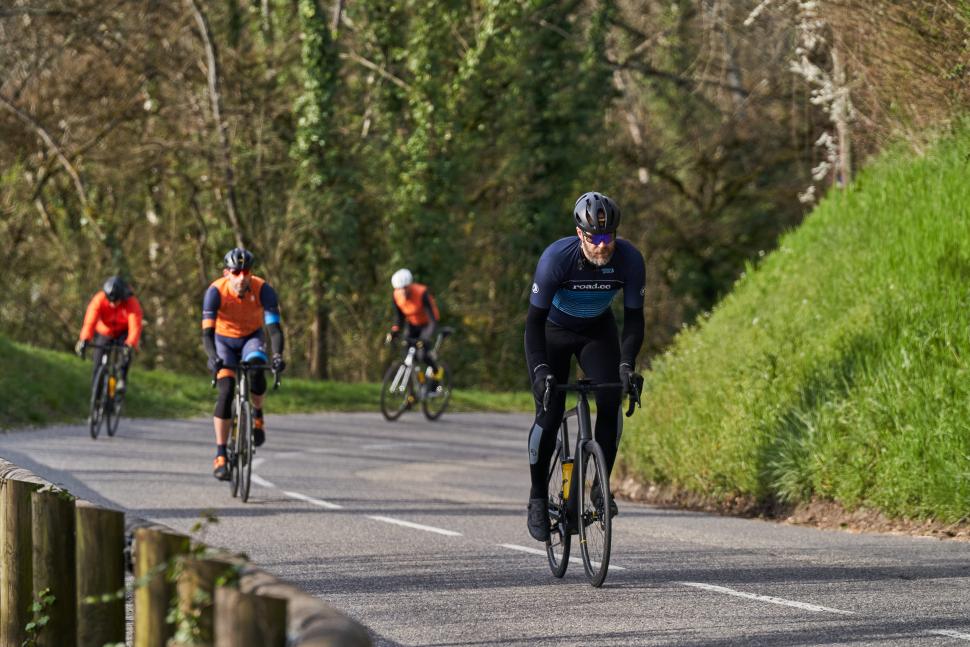
> Best endurance road bikes
Riding a bike a long way isn't everyone's idea of fun, but it is road.cc Dave's. Therefore, we roped him into sharing his tips on how he does it, and the secrets to doing it all with a smile on his face.
This year, Dave's big ride goals are the Dragon Ride, at just over 200km, and also the 600km Bryan Chapman Audax across Wales and back. Those will need very different strategies, but there are plenty of things that you should always consider, whatever you goal: whether you're looking to complete a local sportive, an epic adventure, a multi-day ride, your first 50km, 100km, whatever, hopefully, we can impart some knowledge to help you hit that goal and have you champing at the bit for your next on-bike challenge.
1. Don't go off too hard
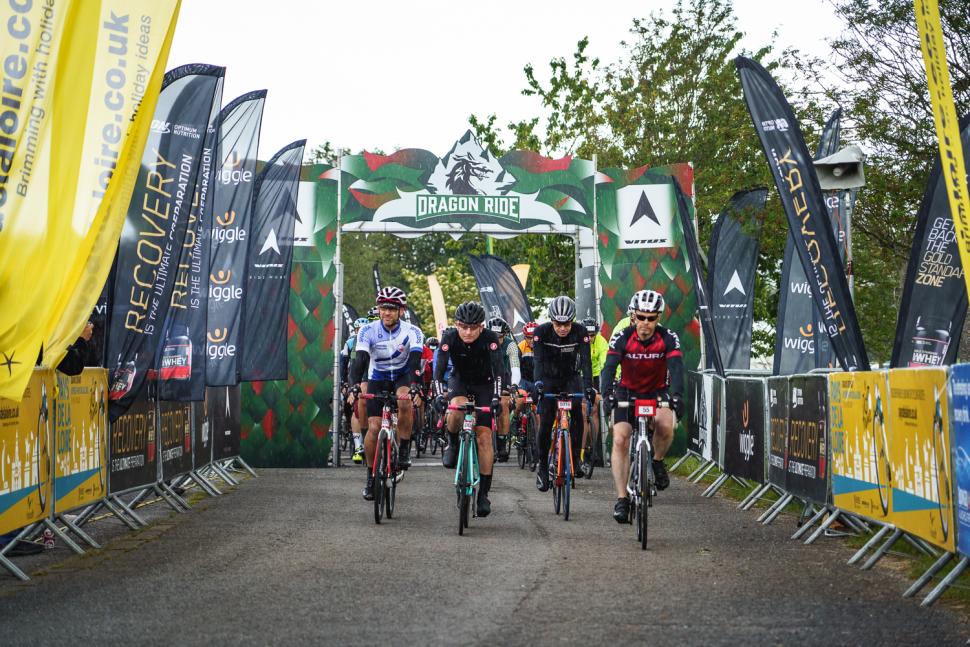
If you take nothing else from this article, then remember this one! It's so, so easy to get carried away and set off too fast, and even seasoned endurance riders like Dave have done it so many times. The problem is it never, ever ends well.
When starting on a big ride, you've got only so many matches to burn. A blast up the first hill in the red is one match gone, and you're never getting that back! Pacing yourself will almost always involve holding yourself back, but on nearly every big ride many of us find ourselves tempted to push on early doors. Dave says that the rides with the most smiles are nearly always the ones where you start off slow.
> 8 ways to get the best out of a sportive
You hopefully have some idea of the speed you can sustain from training rides, but as a general rule try to keep it at a chatty pace for the first hour. Don’t push the pace until you’re sure you can maintain it to the finish line, or at least to a point where you’ll get a break at a stop.
The good thing about big organised rides is that there's lots of opportunity to sit in the pack and pick off the overly eager people later. Just be prepared for dirty looks as you breeze past them later on...
2. Fuel, fuel, fuel
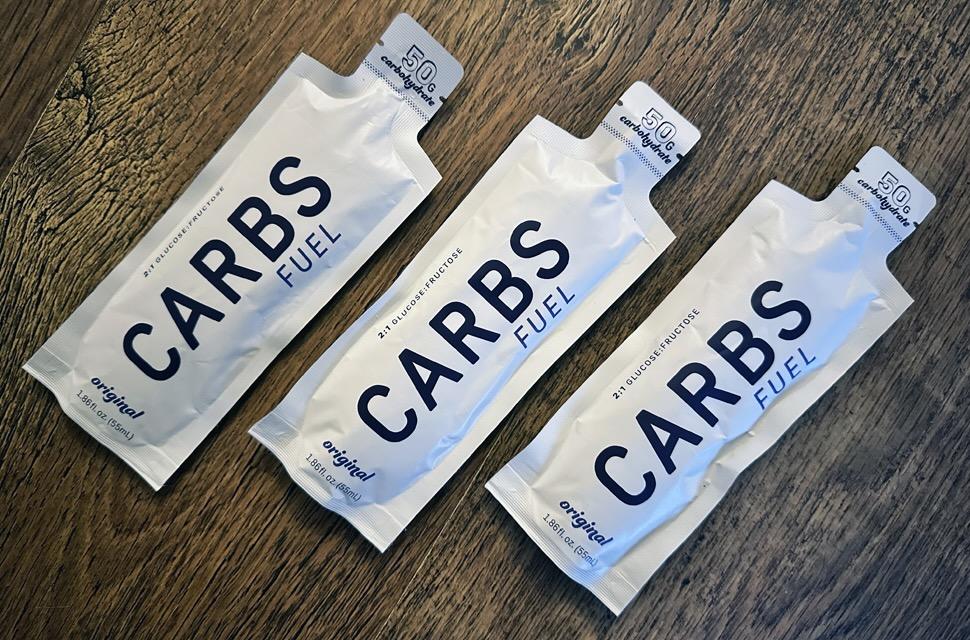
Your body is like a car engine... apart from when it runs out of fuel (or electricity), you’ll just get laughed at if you ring up the AA.
Cycling burns through bucketloads of energy, so on a longer ride you need to make sure you're replacing as much of it as possible. You can do this with cake, which is one of our favourite things about cycling.
Unless you're racing, you don't need to be too concerned about exactly what it is you're eating to fuel. As long as it's got carbs then you're most of the way there, and it doesn't even have to be cycling-specific. Dave says that he usually tries to mix it up a bit, and unless you've got a very firm control over your guts then just energy gels normally isn't the way to go.
> How to eat right for sportives and long rides
Experiment with different foods and find what works for you. Don’t be tempted to gorge yourself on unfamiliar sports nutrition products at the feed stops. That can end badly if they don’t agree with you!

O ur personal favourites are bananas and homemade energy bars , which can just be a load of nuts, seeds and oats baked with some syrup. Oh, and cake. Basically just make sure your pockets or bags are stuffed and start eating as soon as you set out. By the time you feel hungry, you've already started heading towards the bottomless spiral of pain, and that dreaded bonk. Carb drinks are an easy way to get some extra energy down you as you hydrate, although probably don't copy Luke Rowe (above).
3. Prepare your bike well in advance
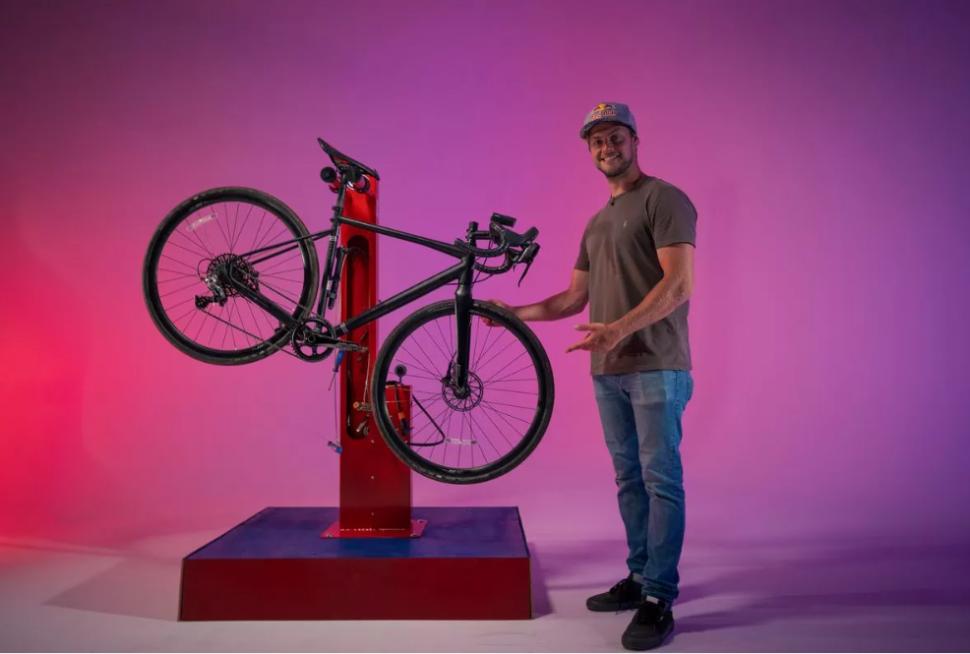
> How to keep your bike running smoothly
It's not just your body that will be put under strain on a big ride. Your bike will be as well, and it’s absolutely rubbish to have to throw in the towel due to some avoidable mechanical when you’re feeling strong.
Make sure you can change gears and switch between them all smoothly. If your gars are electronic, make sure they're charged up. Make sure your chain is lubed to avoid any unwanted squeaking, check you've got some brake pads left, check for thorns and glass in your tyres, pump up those tyres and make sure they hold air.
Many big rides will have some kind of bike support. It might be tools or mechanics at the feed stops, or even neutral service on the course. Don’t rely on it though. Take a toolkit and make sure you know how to fix the things that are most likely to go wrong: loose bolts, punctures, gears going out of whack, brakes rubbing, that kind of stuff.
4. Make sure you're comfortable on the bike
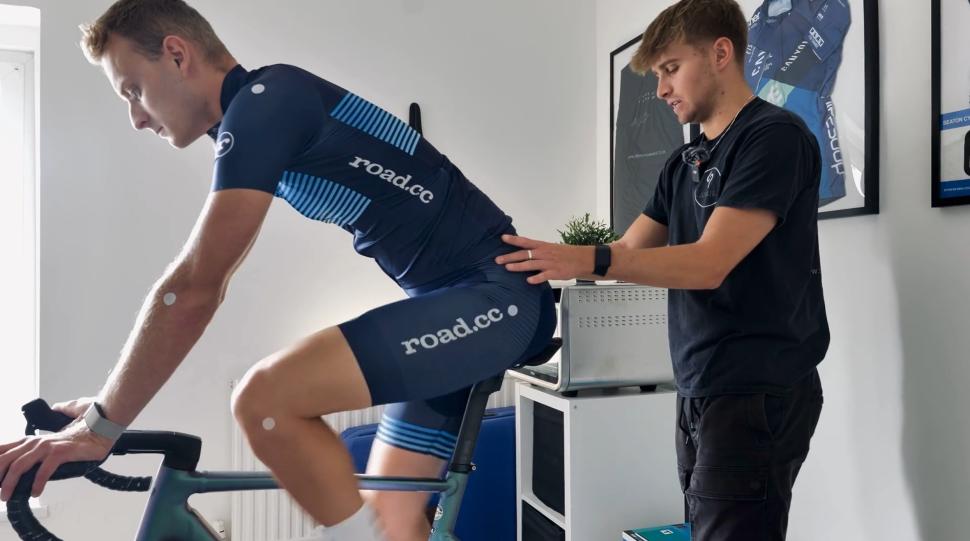
A big ride can be ruined by discomfort on the bike... but what if we told you that most knee, back and bum pain can be avoided? And no, the answer isn't a concoction of painkillers (although we've been there) but rather a properly fitting bike.
Although lots of us would benefit from one, you don’t need to go out and spend a fortune on a bike fit. If you can't justify a pro fit financially, take the time in the build-up to event day to focus on making some little changes.
> The things I learnt from a professional bike fit
If you haven't watched it yet, then we have a video on some bike fit tips that could make you both faster and more comfortable on the bike linked above.
5. Be prepared

A lot of the hard work when completing a challenge happens long before you ever swing a leg over the bike on the start line. There's lots of other things that you can do to make your life easier on the day.
Firstly, do some research. If your big ride is an organised event, how long does it take to get there, and how much time will you need to get yourself sorted before the start? Is your route hilly or flat? Where are the hills, how steep are they and what gearing will you need to get up them? Are there feed stations? If so, where are they, and what can you expect to find there? If you don't ask yourself these questions before the hour of reckoning then you could find yourself in a very sorry state. We certainly have!
Also, eat well the night before. Something fairly carb-heavy to load up for the ride is traditional, but whatever works for you. Have a decent breakfast too. Obviously don't go crazy, but there's no point setting off with the tank half empty.
You'll also want to look up the weather forecast, for the whole day if it’s a long ride. It's easy to get caught out, so dressing appropriately will make your ride a lot more enjoyable.
6. Find people to ride with
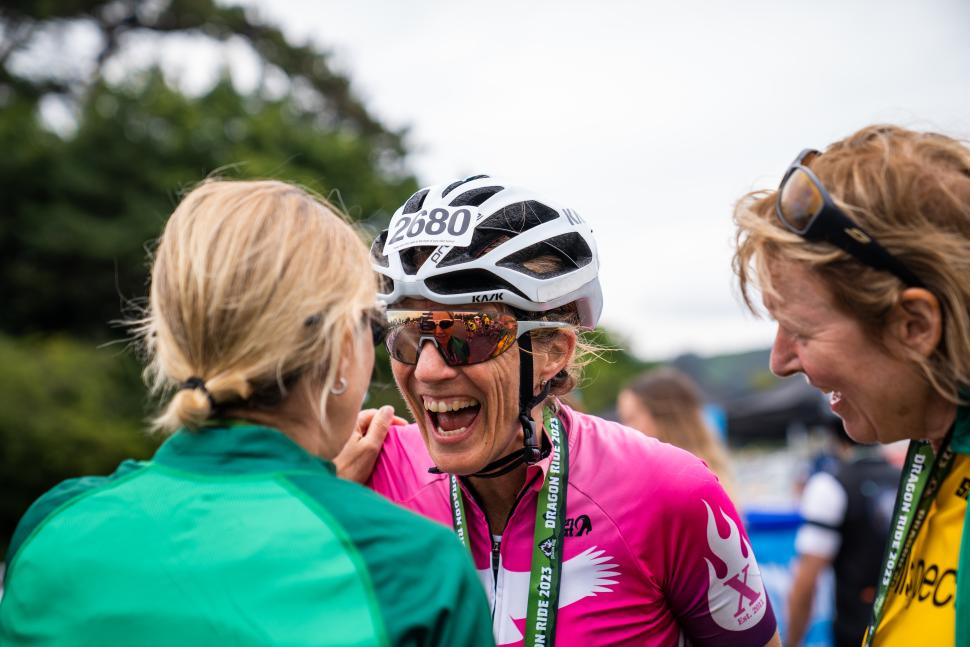
> The best position for drafting in a pack
Did you know that on the flat, sitting behind someone will save you about a quarter of your effort? Now imagine how much easier it'll be sitting behind loads of people! Perhaps more importantly, though, it gives you someone to talk to, someone to share the experience with and sit in the pub with after you've conquered something you never thought possible.
This is one of the reasons that lots of people like to enter an event. There are loads of like-minded riders, and there's bound to be someone who wants to go about the same speed as you. You might have friends in your riding group you can team up with too, to share the driving and the turns on the front. Just be aware though that in a big organised ride it’s incredibly easy to lose your ride buddies! Sharing your location on your phone with your group is a good idea if there’s a chance you’ll get split up.

> How to get the most from your limited training time
You probably thought we'd forgotten about this, but there's no getting around the fact that you'll get out what you put in. Dave says, If you're like him then you'll think you can cram everything into the last few weeks before an event... but that, in our experience, is very, very unlikely to work out well for you.
Your target event might seem like a long way off, but it's never too early to start working towards it. Getting some structure into your training will make all the difference.
If your target ride is an epic distance, don't feel that you need to have done the precise event distance before the day, or more. As long as you've done up to around 70% on a regular basis, then it's pretty likely that the added adrenaline and motivation on the day will get you over the final hurdle.
8. Practice skills
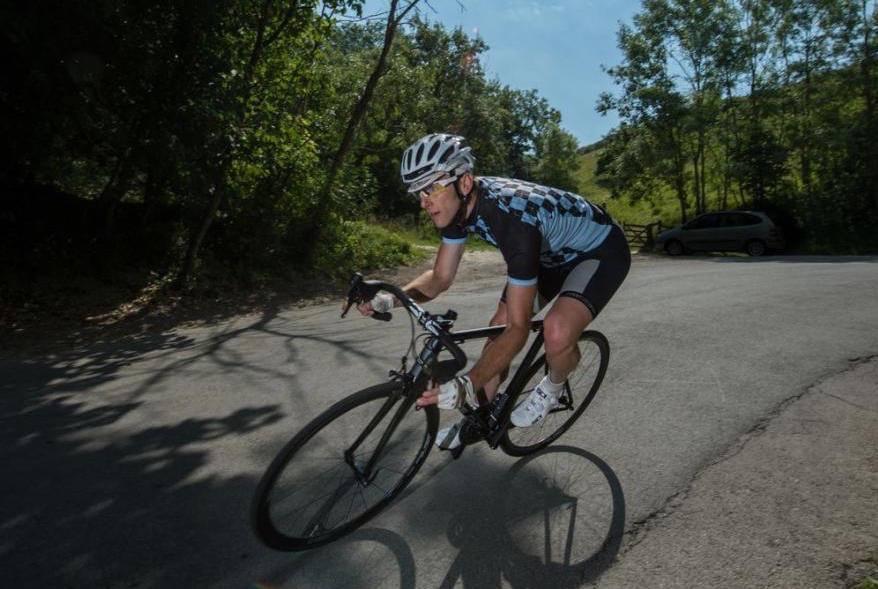
Bike riding is more than about pushing the pedals, because there's a fair amount of skill involved too. Events such as sportives often have lots of other people of various competencies to contend with, as well as unpredictable conditions and unknown roads. With this in mind, it's probably a good idea to brush up on those skills.
We have separate articles on how to climb better , cornering and descending , but there are other things you can practice too. For example, getting better at riding on the wheel, or drinking and eating whilst riding along. If you're really confident, you could even work to become a pro at taking off a jacket while riding.
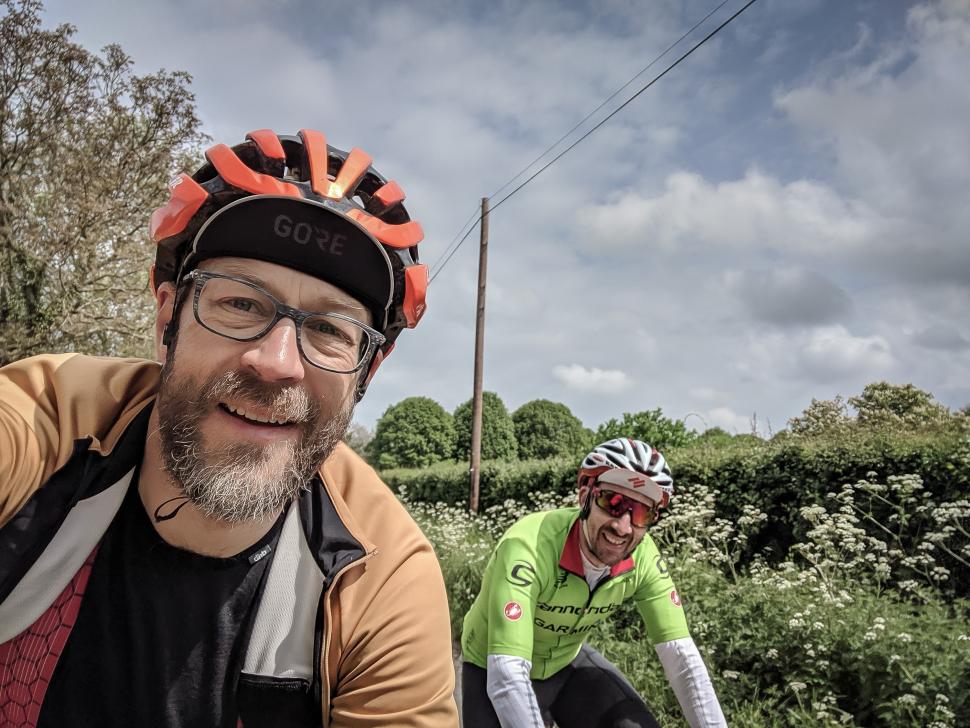
Let us know your best big ride tips and what challenges you've got planned in the comments below
Help us to fund our site
We’ve noticed you’re using an ad blocker. If you like road.cc, but you don’t like ads, please consider subscribing to the site to support us directly. As a subscriber you can read road.cc ad-free, from as little as £1.99.
If you don’t want to subscribe, please turn your ad blocker off. The revenue from adverts helps to fund our site.
Help us to bring you the best cycling content
If you’ve enjoyed this article, then please consider subscribing to road.cc from as little as £1.99. Our mission is to bring you all the news that’s relevant to you as a cyclist, independent reviews, impartial buying advice and more. Your subscription will help us to do more.
Jamie has been riding bikes since a tender age but really caught the bug for racing and reviewing whilst studying towards a master's in Mechanical engineering at Swansea University. Having graduated, he decided he really quite liked working with bikes and is now a full-time addition to the road.cc team. When not writing about tech news or working on the Youtube channel, you can still find him racing local crits trying to cling on to his cat 2 licence...and missing every break going...
Add new comment
Fig rolls have become my go to. A pack of fig rolls and a couple of jam sandwiches - all washed down with orange squash - gets me nicely through a 100-miler.
- Log in or register to post comments
I made fig rolls last weekend.
Delightful.

Rowntrees Fruit Pastilles only time I let myself near them is while cycling. I eat those by the roll plus fruesli bars and organix fruit bars. They work for me on rides up to 100 miles. Never gone further than that. Maybe when I have a new hip later this year...
There may be mechanical support on a sportive, but you need still to be self-reliant - pump, patches, multi-tool, tyre levers and if applicable, two spare tubes. I carry a silver foil blanket in winter, a 50 ml spray-on sun oil in summer.
Event day is probably not the best time to bring out brand new kit for the first time.
I can't recall any problems with the food offering on the sportives I've done - the usual stand-bys of bananas, fig rolls and jelly beans are usually in good supply, and there usually some freebie energy bars around.
If you're on one of the New Forest sportives, don't give the locals excuses to hate: not that they need any. All the same, be careful around the animals if you encounter them, don't litter, and don't pee at the roadside.
I'll be doing my best for you when my usual local Facebook whinger starts up with his "warning" posts about upcoming cycling events - although last year we learned that his wife hacks a horse as he was asking drivers not to close pass her, so he may quiet down this year. Finally, please don't close pass local roadies on your way from/back to junction 1/M3.
Latest Comments
Was the accident chugging half a dozen beers, climbing into his compensatory truck (penis size, personality, IQ... Take your pick what he's making...
A quick google search would suggest there are plenty of cycling routes round Leeswood North Wales but I guess you knew that already.
Do not buy tool kits, only buy tools when you need them, or if you know for sure you'll use them....
Fail to see a problem. When you reach the noi cycling area get off and walk. These areas are never long. Whinging self entitled types tar all...
On the boundary of Edinburgh City, on the A92, is Cramond Brig, an ancient bridge (hence the name) over the River Almond. The bridge is closed to...
chipping in as someone who uses this bike lane - It's pretty much as good as it gets in this country at the location in question, to be honest....
I went in the new Bristol branch at lunchtime. "Can I help you?", asks a staff member. "Yeah, I'm after a quick link for an eight speed chain",...
The saying Empty vessels make the most noise seems to apply to this councillor.
I had him in and it was more for his price and the odd 10-20th place on GC days. A win was a big bonus.
Fairly uneventful ride today from Wadebridge to Chulmleigh. At around 1 PM I happened upon a very convenient pub, the Rising Sun Inn. The menu was...

15 Best Bicycles for Long Journeys – Your Ultimate Guide to Comfort and Durability
Discover the top bicycles for long journeys, including foldable designs, powerful motors, and comfortable seats – find your perfect ride for endless adventures!
Key Takeaways
- Choose bicycles with ergonomic design and comfortable seating for reduced fatigue.
- Prioritize durable frame materials like aluminum or high-carbon steel.
- Look for adjustable components to ensure a personalized fit for long journeys.
- Opt for reliable braking systems such as disc brakes for safety.
- Select bikes with suspension systems for smoother rides on varied terrains.
Elias Ebike Folding Electric Bike for Adults

- 🚲48V 15Ah High-Capacity Lithium Battery -- Offers a pure electric range of up to 35 miles and pedal assist range of 60 miles. Take your HiPEAK electric bike on scenic journeys from north to south Azusa, traversing parks, open areas, and nature reserves.And this bicycle has passed UL2849

- Careful packaging ensuring safe delivery
- Easy 3-step folding design for convenient storage and transport
- Positive customer feedback on build quality, ease of assembly, and overall performance
- Some customers experienced operator issues
- Suggestions for improvements like adjustable handlebars, seat comfort, and throttle preference
- Limited cons mentioned due to competitive pricing and high satisfaction levels
Race Electric Bike for Adults Ebike (750W Brushless Motor)

- 【500W Brushless Motor】Experience the ultimate ride with our high-powered electric bike, equipped with a 500W brushless motor,up to 22MPH.
- 【2849 UL Certified Li-ion Battery】Actbest Race electric bike for adults with high-performance 48V 10.4 Ah removable battery can travel 40-65 miles on a single charge, and make ebike ideal
- High-speed capability of up to 22MPH with a 750W brushless motor.
- Removable 48V 10.4 Ah battery providing a range of 40-65 miles per charge.
- Adjustable seat and handlebar, lightweight aluminum frame, and fork suspension for a comfortable and smooth ride.
- Some reported issues with price and uphill performance.
- Minor defects and concerns about brake alignment.
- Mixed feedback on power delivery and battery performance.
26 inch Mountain Bike for Men Women, 21 Speeds High-Carbon Steel Frame

- Durable High-Tensile Steel Design - Constructed with high-tensile steel for long-lasting durability, providing a rugged and sturdy 26" mountain bike suitable for both men and women riders. Tackle any terrain confidently with this sturdy and lightweight frame.
- Versatile 21-Speed Control - Conquer various terrains with 21 speeds and
- Durable high-tensile steel design for long-lasting performance
- Versatile 21-speed control with v-brakes for smooth and reliable rides
- Lightweight and adjustable seat with dual suspension for enhanced comfort on various terrains
- Front tire installation issues reported by some users
- Concerns about tire stability and durability on certain terrains
- Not suitable for year-round riding or extremely steep hills
Electric Bike for Adults, Up to 45Miles Adult Electric Bicycles with 2 Seats

- 【CUSTOMIZE YOUR E-BIKE】 Tomofree electric bike is designed to be foldable. Folding size 31.9*17.7*26.4 inches. Only weight 66 lbs, and the seat and handlebar can also be height-adjusted to everyone’s preferences. adjustable seat fits for height 4′11″ to 6′2″, Cool design will make you the center of attention
- Powerful 1000W brushless motor
- Foldable design for easy storage and transportation
- Adjustable seat and handlebar for personalized comfort
- Mixed reviews on performance and quality
- Criticisms of the owner's manual and assembly instructions
- Maximum weight recommendation of 200 pounds may limit some riders
Sixthreezero EVRYjourney Womens Steel Beach Cruiser Bike

- HYBRID BIKE FOR WOMEN: Versatile women's touring hybrid commuter bicycle with a sleek 17.5 inch steel frame; perfect for cruise, leisure, commute, and casual to up-tempo rides across multiple types of terrain; can hold riders up to 300 lbs, fits riders from 5 feet to 6 feet, 4
- Comfortable design with a soft foam seat and upright riding style
- Stylish curvy frame with matching fenders and rear rack
- Suitable for riders up to 300 lbs and 5' to 6'4'' tall
- Some mixed experiences with assembly difficulty and time taken
- Issues with scuffs on delivery reported
- Mixed feelings about the need for assembly
Ancheer Electric Bike for Adults, 48V 500Wh EBike

- 💗【Extended Range】The advanced 48V/10.4Ah removable battery coupled with a lightning-fast 3A charger, ensures a quick 3-3.5 hour full charge time and a remarkable range of up to 60 miles per charge.
- 💗【Inproved Riding Experience】Our electric bike for adults boasts a versatile 7-speed gears system, delivering exceptional hill-climbing power
- Extended range with a removable battery and fast charger.
- 7-speed gears system for seamless shifting and hill-climbing power.
- Lightweight aluminum frame and durable rims for a comfortable ride.
- Lack of a brake light for enhanced safety.
- Potential improvement needed in kickstand placement.
- Limited color options available.
Sixthreezero EVRYjourney Womens Beach Cruiser Bike

- Step-through aluminum city frame 7-speed hybrid touring, urban commuting, and cruiser bike with matching full fenders, and 26" wheels
- Shimano 7-speed External Derailleur with front and rear handbrakes Alloys for wide range of riding from leisure to long distance commutes
- Brown synthetic leather comfy saddle and grips with
- Versatile 7-speed Shimano derailleur for varied terrains.
- Stylish design with comfortable leather saddle and grips.
- Smooth gear shifting and responsive brakes for a controlled ride.
- Some reported challenges on inclines.
- Minor shipping damage issues have been noted.
- Potential delays in repair for damaged parts.
Huffy Stone Mountain Hardtail Mountain Bike

- Frame: The durable steel dual suspension frame comes in striking grey with red accents and features dual suspension to smooth out the bumps along the way
- Speeds: 21-speeds help you find the perfect cadence to navigate your path ahead; equipped with a Shimano rear derailleur
- Control: Front and
- Durable steel frame with front suspension
- 21-speed options for different terrains
- Comfortable saddle and 24-inch all-terrain tires
- Assembly and component issues reported by some users
- Mixed opinions on comfort and usability
- Concerns about missing parts and customer service
Electric Bike for Adult 1000W Ebike 48V 30AH Removable Battery

- 【1000W ULTRA-DRIVE MOTOR】The DAMSON adult electric bicycle is equipped with a powerful 750W gear hub motor, which provides massive amounts of 85 Nm torque when powering up steep hills or accelerating quickly from a dead stop. With 1000W of peak motor power, you can easily conquer the most
- Removable 48V 30AH lithium battery for long-lasting rides
- Full suspension and dual hydraulic suspension for enhanced comfort on various terrains
- Superior braking performance and 5 riding modes for adaptability
- Some users reported noise issues during operation
- Limited battery range may not be sufficient for extremely long rides
- Potential difficulties with gear adjustments according to customer feedback
Schwinn Suburban Adult Comfort Bike, 26-Inch Wheels, 7 Speed Drivetrain

- Steel step-over comfort frame for a relaxed riding posture
- 7-speed drivetrain with twist shifters for versatile riding options
- Schwinn comfort seat and ergonomic grips for enhanced comfort
- Assembly challenges reported by some users
- Mixed opinions on component quality and durability
- Instructions may be unclear, requiring additional assistance
Electric Bike for Adults 48V 30AH Battery 1000W Adult Electric Bicycles

- 【High capacity Lithium Battery】RX30 Adult bicycle provides Removable 48v 30ah lithium battery,1440wh battery capacity efficiently improves the range,stability, and safety of damson bikes. A single charge can last up to 78miles on pure electric power and 118+ miles with pedal assist.The long-range option ensures you can get where
- Powerful 1000W ultra-drive motor for efficient rides
- Full suspension and dual hydraulic disc brakes for a smooth and safe journey
- Shimano 8-speed gear system for varied speed options
- Higher initial investment compared to traditional bicycles
- May require charging infrastructure for long-distance travel
- Heavier weight due to battery and motor components
Heybike Cityscape Electric Bike 350W (Peak 500W)

- LONG RANGE BATTERY & POWERFUL MOTOR – With modular 36V, 10Ah battery, the Cityscape allows riders to travel up to 40 miles per charge using pedal assist. 350w rear-drive motor provides reliable support and 23mph top speed.
- UPGRADE YOUR COMMUTING- Better improved materials Step-Through geometry frame and wide
- Long-range battery for extended rides with pedal assist.
- Powerful 350W rear-drive motor reaching speeds of up to 23mph.
- Comfortable ride with a step-through frame design and dual shock absorbers.
- Some customers reported issues with the battery or throttle.
- Maximum weight recommendation of 70.5 pounds may limit certain riders.
26 inch Folding Mountain Bike for Adults, 21 Speed High Carbon Steel with Durable Tires

- [Adapt to a Variety of Terrains]: The Omelaza 26-inch Folding Mountain Bike is designed to handle different types of terrain with ease. Whether you're riding on rough trails or smooth roads, this bike's sturdy construction and reliable components ensure a smooth and comfortable ride every time.
- [Enhanced Riding
- Front dual-suspension system for adaptability to various terrains
- Efficient gear selection with the 21-speed system
- Positive customer reviews highlighting smooth ride and efficient disc brakes
- May not be suitable for extremely rough off-road trails
- Some users may find the seat less comfortable for longer rides
- Assembly process could be challenging for those unfamiliar with bike setup
Himiway Cruiser Electric Bike

- 🎉𝟳𝟱𝟬𝗪 𝗕𝗥𝗨𝗦𝗛𝗟𝗘𝗦𝗦 𝗠𝗢𝗧𝗢𝗥: Himiway uses 750W motor with 80Nm of torque, allowing riders easily winning 35° slopes. Under the power support of the Himi-tech 750W high-speed motor, the ebike provides you with a pure electric max speed of 25MPH.
- 🔋𝟭𝟱𝗔𝗵≈𝟱𝟬𝗠𝗶𝗹𝗲𝘀/𝟭𝟳.𝟱𝗔𝗵≈𝟲𝟬 𝗠𝗶𝗹𝗲𝘀: Himway Cruiser e-bike comes in two battery
- Impressive 60-mile range battery for extended rides
- Sturdy 6061 aluminum frame with a high payload capacity
- Smooth ride ensured by the front suspension system
- Some users reported minor motor malfunctions and missing accessories
- Suggestions for improvements and additional accessories
- Issues with tracking packages and delivery process
Heybike Mars Electric Bicycle Foldable 20 x 4.0 Fat Tire Electric Bicycle (1000W Peak Motor)

- 50 MILES RANGE & 25MPH TOP SPEED –Mars are equipped with modular 624WH batteries, Peak 1000W Brushless Geared Motor to ensure a long-life span and excellent performance.
- 4" FAT TIRES – With 4 inch wide puncture resistant fat tires and dual suspension. The places that Heybike Mars can
- Long 50 miles range and 25mph top speed for extended rides
- Customizable 3 riding modes and 7-speed settings for various terrains
- Sturdy build with dual shock absorbers and adjustable features for comfort
- Some users reported issues with brake noise and assembly instructions
- Concerns about the promotional lock's quality
- Suggestions for improvements in handling heavy weight and folding process
Factors to Consider When Choosing a Bicycle for Long Journey
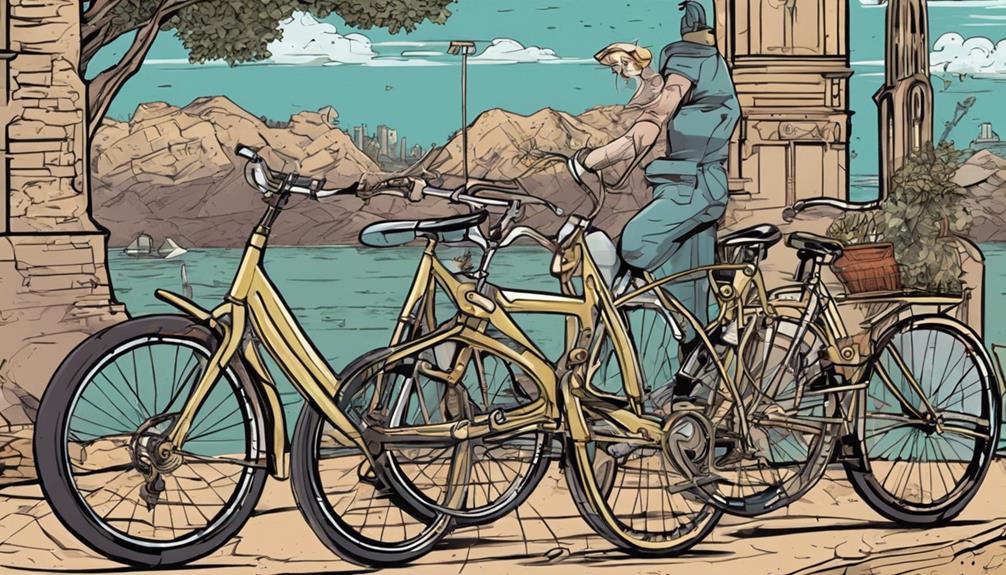
Key Considerations for Long Journeys
Essential long journey features, comfort and durability, terrain compatibility tips, performance and efficiency, safety precautions guide, maintenance and care, customization options, frequently asked questions, are spare parts readily available for these bikes?, can these bikes be customized for individual preferences?, do these bikes come with a warranty?, are there specific maintenance requirements for these bikes?, can these bikes be easily transported for long journeys?, related posts:.
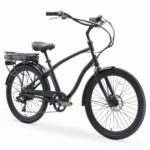
Olivia’s writing is not only informative but also inspiring. She has a knack for telling stories that capture the essence of cycling and the joy it brings to people’s lives. Her writing has been praised by readers and industry experts alike for its clarity, depth, and authenticity.
In addition to her writing, Olivia is also an avid cyclist. She enjoys exploring new trails and routes and has participated in several cycling events and races. Her first-hand experience with cycling gives her a unique perspective on the sport, reflected in her writing.
Overall, Olivia is a talented writer passionate about cycling and dedicated to producing high-quality content for FlatironBike. Her contributions to the magazine have helped make it a go-to source for cycling enthusiasts worldwide.
14 Best Bicycle Neck Braces for Enhanced Safety and Comfort
3 Best Bicycle Kick Players Who Will Leave You in Awe

Olivia's writing is not only informative but also inspiring. She has a knack for telling stories that capture the essence of cycling and the joy it brings to people's lives. Her writing has been praised by readers and industry experts alike for its clarity, depth, and authenticity. In addition to her writing, Olivia is also an avid cyclist. She enjoys exploring new trails and routes and has participated in several cycling events and races. Her first-hand experience with cycling gives her a unique perspective on the sport, reflected in her writing. Overall, Olivia is a talented writer passionate about cycling and dedicated to producing high-quality content for FlatironBike. Her contributions to the magazine have helped make it a go-to source for cycling enthusiasts worldwide.

You may like
Ktaxon 48v ebike conversion kit review.
Pros and Cons
What we liked.
- Unmatched Motor Kit: The 48V 1000W brushless motor is powerful and efficient, providing a smooth and noiseless ride.
- Strong Durability: The aluminum alloy rim and high carbon steel spoke offer great durability and stability, supporting a heavy weight up to 220 lbs.
- LCD Display: The LCD screen provides all the essential information you need, such as battery power, speed, mileage, mode, and error codes, making troubleshooting easier.
- Safe & Reliable: The power cut-off brake handle ensures your safety by immediately disconnecting the power supply when the brake signal is detected by the controller.
- Easy Installation: The kit comes with all the necessary components, instructions, and videos, making it easy for you to install it on most 26 bikes with 3.93 front dropout spacing.
What Can Be Improved
- No Reviews Available: Unfortunately, I couldn’t find any reviews for this specific product, which makes it difficult to gauge other users’ experiences.
- Battery Not Included: It’s important to note that the kit does not include a battery, so you’ll need to purchase that separately.
Quick Verdict
Unboxing – what’s inside.
- 2 Custom Handles
- LCD Display Panel
- Controller Bag
- Control Hardware
- Pedal Assist Sensor
Specifications
- Style: Front
- Suspension Type: Front, Dual
- Frame Material: Aluminum
- Wheel Size: 26 Inches
- Color: Black
- Brand: Ktaxon
- Age Range (Description): Adult
- Bike Type: Electric Bike
- Date First Available: March 28, 2023
- Hand Orientation: Right
Features – What We Found
Efficient and noiseless running, durable and lightweight aluminum alloy frame, convenient lcd display, enhanced safety measures, suitable for most bikes with easy installation, our score: 73.0.

Zane rides her bike because she loves it, but also because she is mindful of the need to leave a better world for her children.
PEXMOR Electric Bike Conversion Kit Review
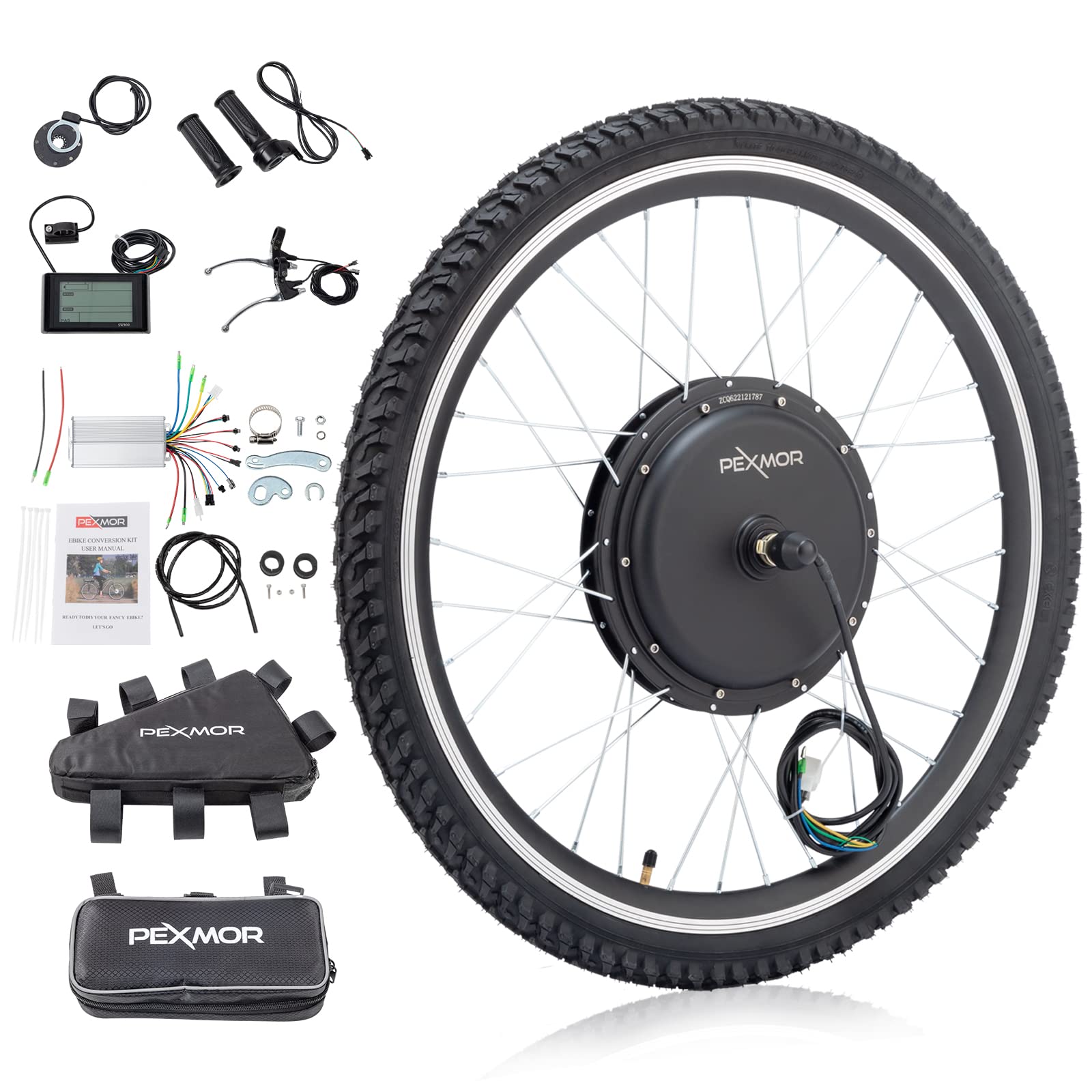
- Powerful brushless motor: The 48V 1000W brushless hub motor offers a great boost to your bike’s performance. It runs efficiently and quietly, allowing you to reach a maximum speed of 36 mph.
- Pedal Assist System (PAS): The PAS offers 4 riding modes, including throttle, presets, PAS, and manual. This allows for customizable riding options and reduces fatigue during long trips.
- Upgrade 3 Modes Controller: The controller works under both Hall effect and non-Hall effect, ensuring a longer life for your electric bicycle. The sine wave controller provides high efficiency and low noise.
- Safe and durable construction: The brake levers cut power and brakes while riding, ensuring safety. The CE certification guarantees both safety and quality. The aluminum alloy frame is stable and can hold up to 220 lbs.
- Easy to control and install: The LCD display provides convenient access to riding information, while the twist throttle enables fast and simple speed control. The provided installation tools and detailed instructions make assembly a breeze.
- Lack of clear instructions: Some users have reported confusion regarding the proper way to mount the electric wheel on the front fork. Clearer instructions could help avoid this issue.
- Customer support responsiveness: A few customers have experienced delays or lack of response from customer support when facing technical difficulties. Improved communication could enhance the overall user experience.
- Tool Kit: This included all the necessary tools for installing and assembling the conversion kit onto my bike.
- Electric Bike Conversion Kit Components: The main highlight of the box was the 26-inch front/rear wheel with an ebike hub motor. The aluminum frame and mountain bike design gave it a sturdy and rugged look.
- 3-Mode Controller : The kit came with a 48V 1000W 3-mode controller , allowing me to choose different power settings based on my preferences.
- PAS/LCD Display/Twist Throttle: The kit also included a PAS (Pedal Assist System) , LCD display for monitoring speed and battery life, and a twist throttle for easy acceleration.
- Brand: PEXMOR
- Manufacturer: PEXMOR
- Brake Style: Coaster
- Size: 26 inches
- Suspension Type: Rear, Front
- Wheel Size: 26 inches
- Bike Type: Electric Bike, Commuting Bike, Mountain Bike
- Date First Available: February 13, 2023
Documentation
Powerful brushless motor, pedal assist system (pas), upgrade 3 modes controller, safe & durable, easy to control & install, scores and review, our score: 81.0, aw electric bike conversion kit 48v 1000w review.
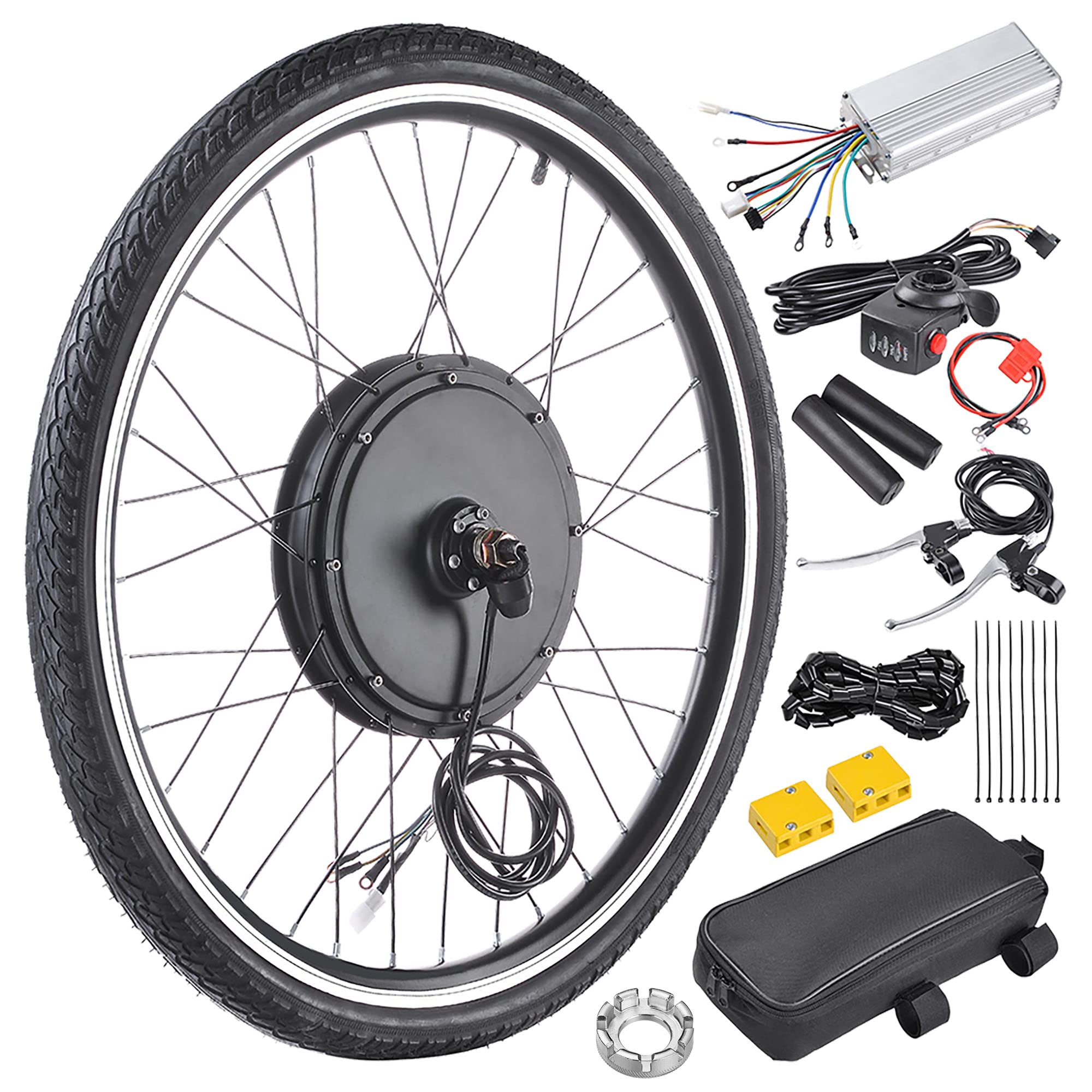
- Powerful Brushless Motor: The 48V 1000W brushless and gearless hub motor provides efficient and noiseless running. It easily converted my regular bicycle into an electric bike and reached a maximum speed of 45 KM/H (27.95 mile/h).
- Durable & Convenient: The aluminum alloy frame ensures durability and stability, supporting weights up to 220 Lbs. The drive system without moving chains or gears reduces friction, and the thumb throttle with 3 indicators displays battery status to avoid sudden battery depletion.
- Great Compatibility: This kit fits 26 bicycle frames with 3 15/16 front dropout spacing and is compatible with both universal disc brakes and V brakes. It’s perfect for bicycle assembly and modification.
- Easy to Assemble: The kit includes all necessary components for installation, and the instructions are easy to follow. You can either install it yourself or get assistance from a bicycle store.
- Safe & Environmentally-Friendly: The hand brakes automatically shut off the motor to save energy and prevent overheating. The kit is CE certificated for quality and safety assurance, and its battery-powered design is environmentally friendly.
- Loudness: Some users have reported that the kit can be a bit loud, which may affect their riding experience.
- Battery Monitor: The battery monitor has been criticized for being subpar and not providing accurate readings.
- 26 Front/Rear Wheel – This wheel is designed for easy installation onto a regular bicycle frame, turning it into an electric bike.
- Dual Mode Controller – The kit includes a controller that allows for two modes of operation: pedal assist and throttle. This provides flexibility in controlling the speed and power of the electric motor.
- Thumb Throttle – The thumb throttle enables easy acceleration and control of the electric bike.
- Ebike Wheel Kit – This kit contains all the necessary components and hardware required for the conversion, making the installation process hassle-free.
- Cycling Hub Conversion Kit – The hub conversion kit allows the electric motor to be seamlessly integrated into the wheel, providing a smooth and efficient ride.
- Manufacturer: AW
- Brake Style: Disc
- Suspension Type: Front
- Maximum Weight Recommendation: 220 Pounds
- Special Feature: Aluminum Frame, Electric
- Voltage: 48 Volts
- Item Weight: 23.5 Pounds
- Package Weight: 13.4 Kilograms
- Date First Available: May 3, 2018
- Country of Origin: China
Durable & Convenient
Great compatibility, easy to assemble, safe & environmentally-friendly, our review and score, our score: 83.0.

Affiliate disclaimer
As an affiliate, we may earn a commission from qualifying purchases. We get commissions for purchases made through links on this website from Amazon and other third parties.
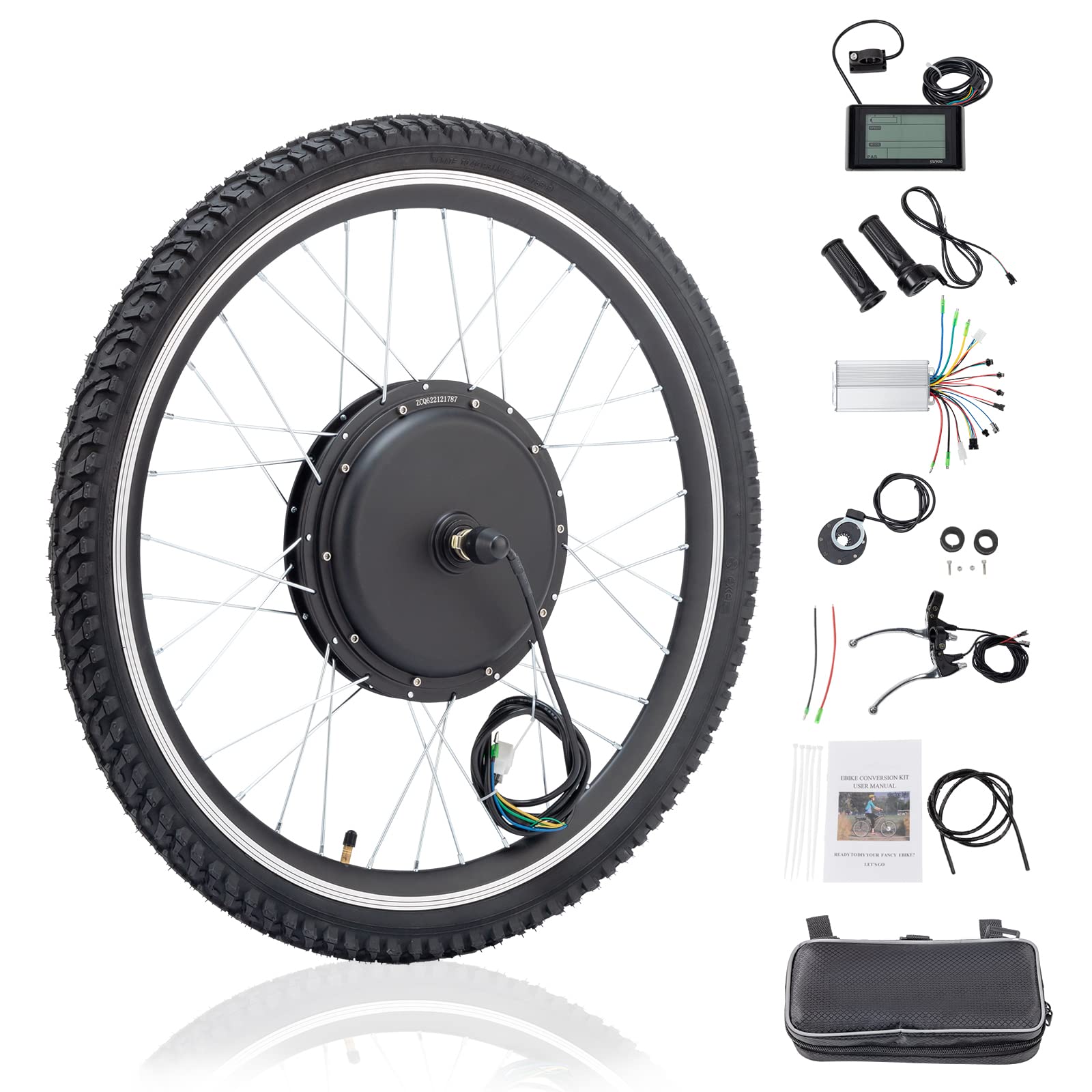
Hey, nice to see you here for my review on the Ktaxon Electric Bike Conversion Kit! I recently got to...

Today, I will be discussing my thoughts and experiences with the PEXMOR Electric Bike Conversion Kit. Being a passionate cyclist,...

I recently bought and tested the AW Electric Bike Conversion Kit 48V 1000W 26 Front/Rear Wheel E-Bike Conversion Kit, and...

L-faster 450W Electric Bicycle Conversion Kit Review
I recently got to test the L-faster 450 W Electric Bicycle Left Drive Conversion Installation kit and wanted to discuss...
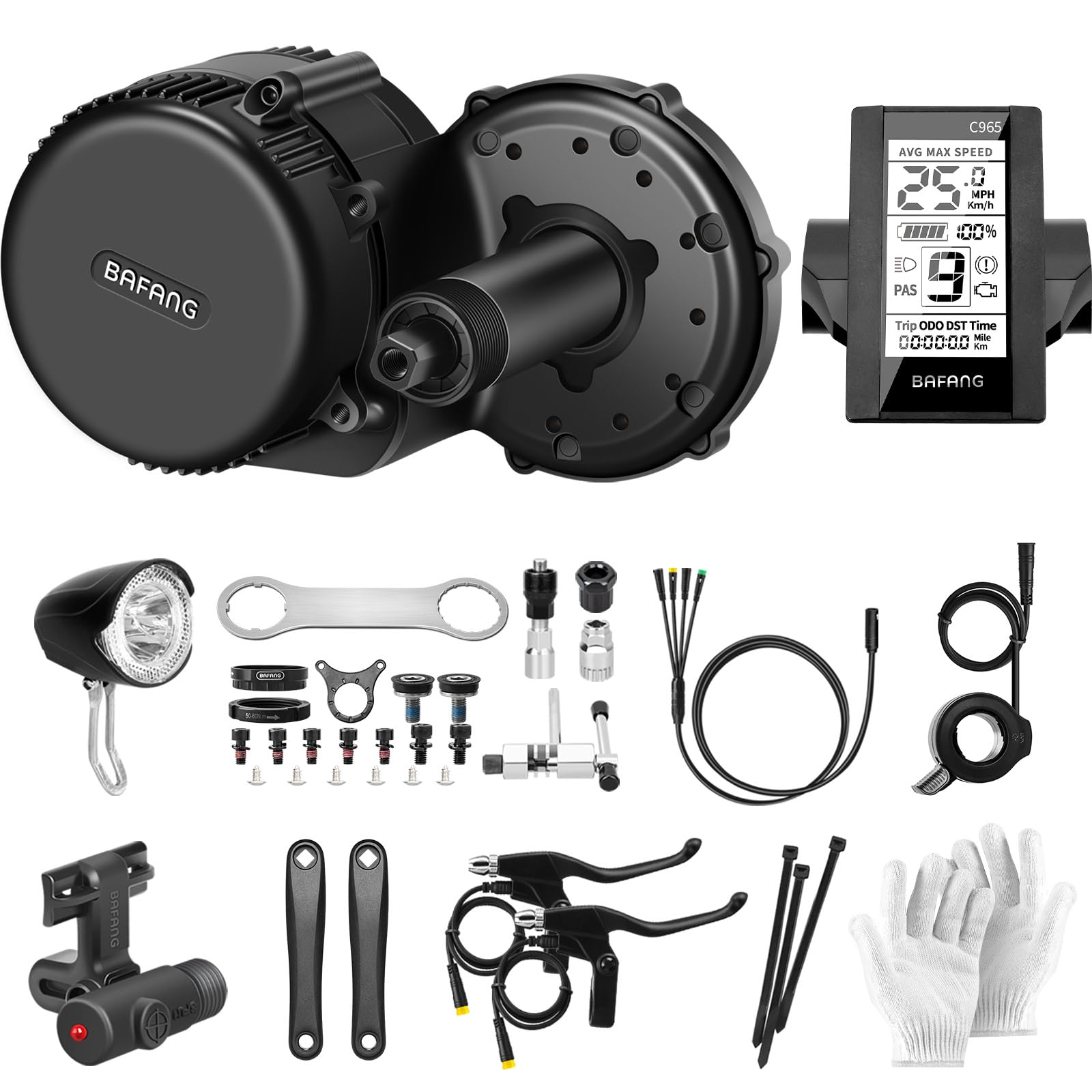
BBS02B 48V 500W Mid Drive Electric Bike Motor Review
Today, I would like to discuss my encounters with the BBS02B 48V 500W Mid Drive Electric Bike Motor Ebike Conversion...
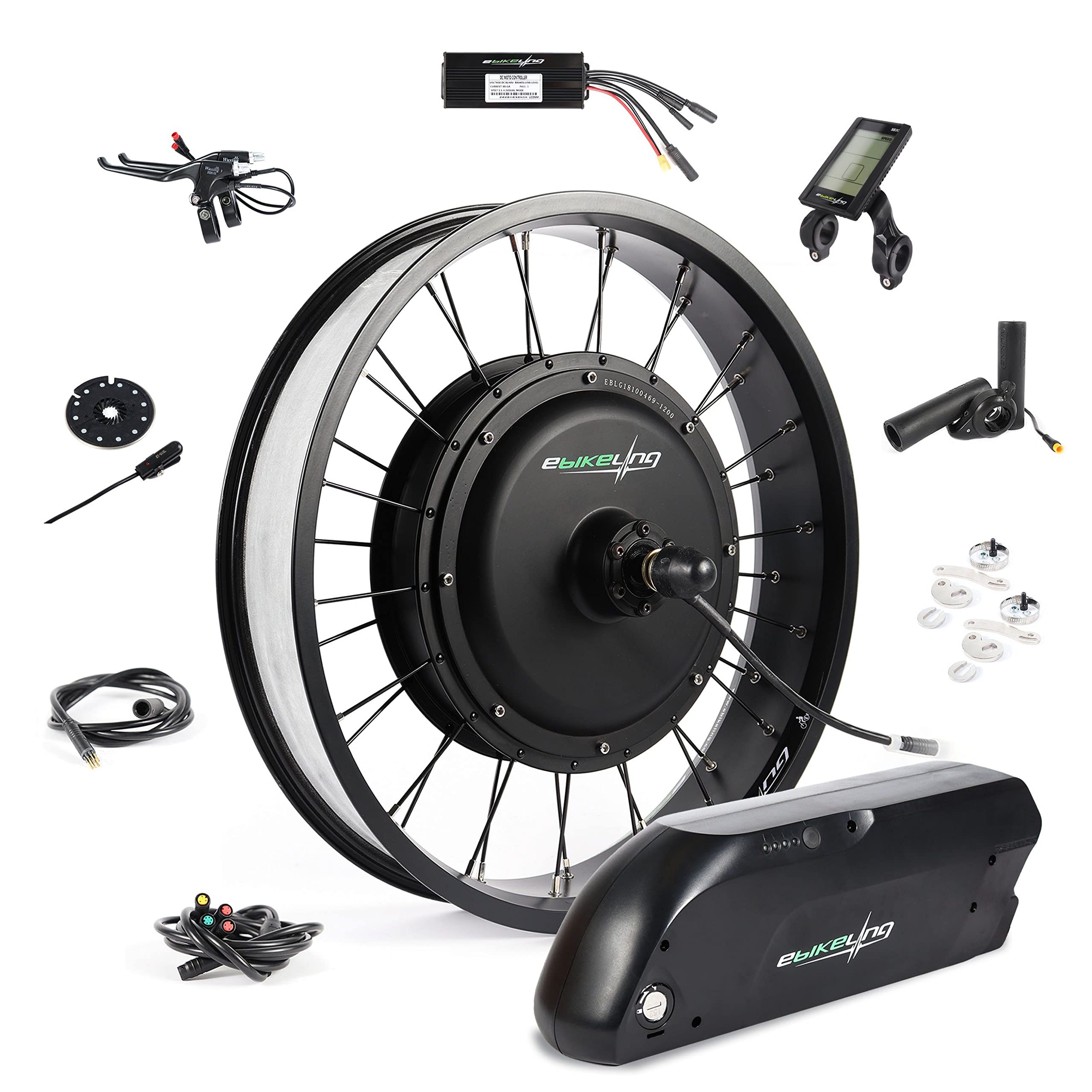
EBIKELING Waterproof Ebike Conversion Kit: A Comprehensive Review+
I had the chance to test the EBIKELING Waterproof Ebike Conversion Kit with Battery 20 Fat Tire recently and I...
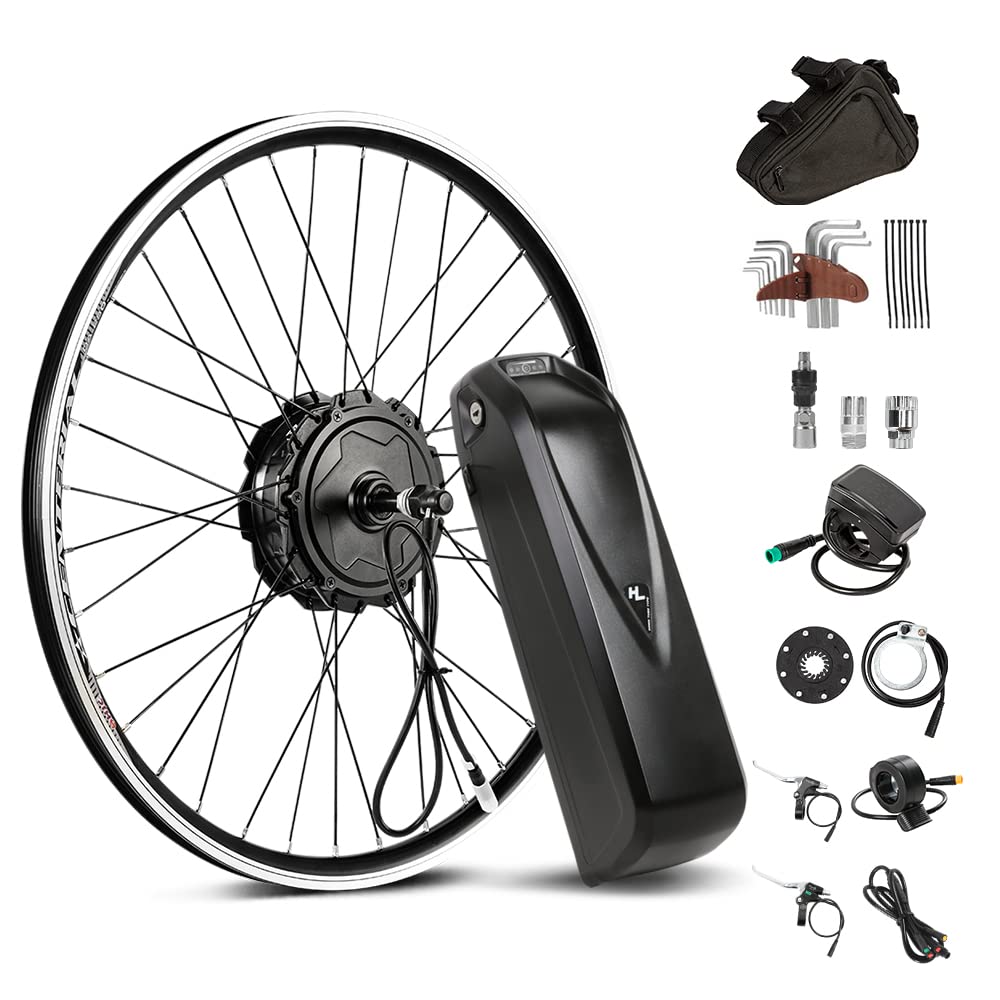
Yose Power Waterproof 500W Ebike Kit Review
I recently got to test the Yose Power Waterproof 500W Ebike Conversion Kit with a 48V 13Ah Battery for a...
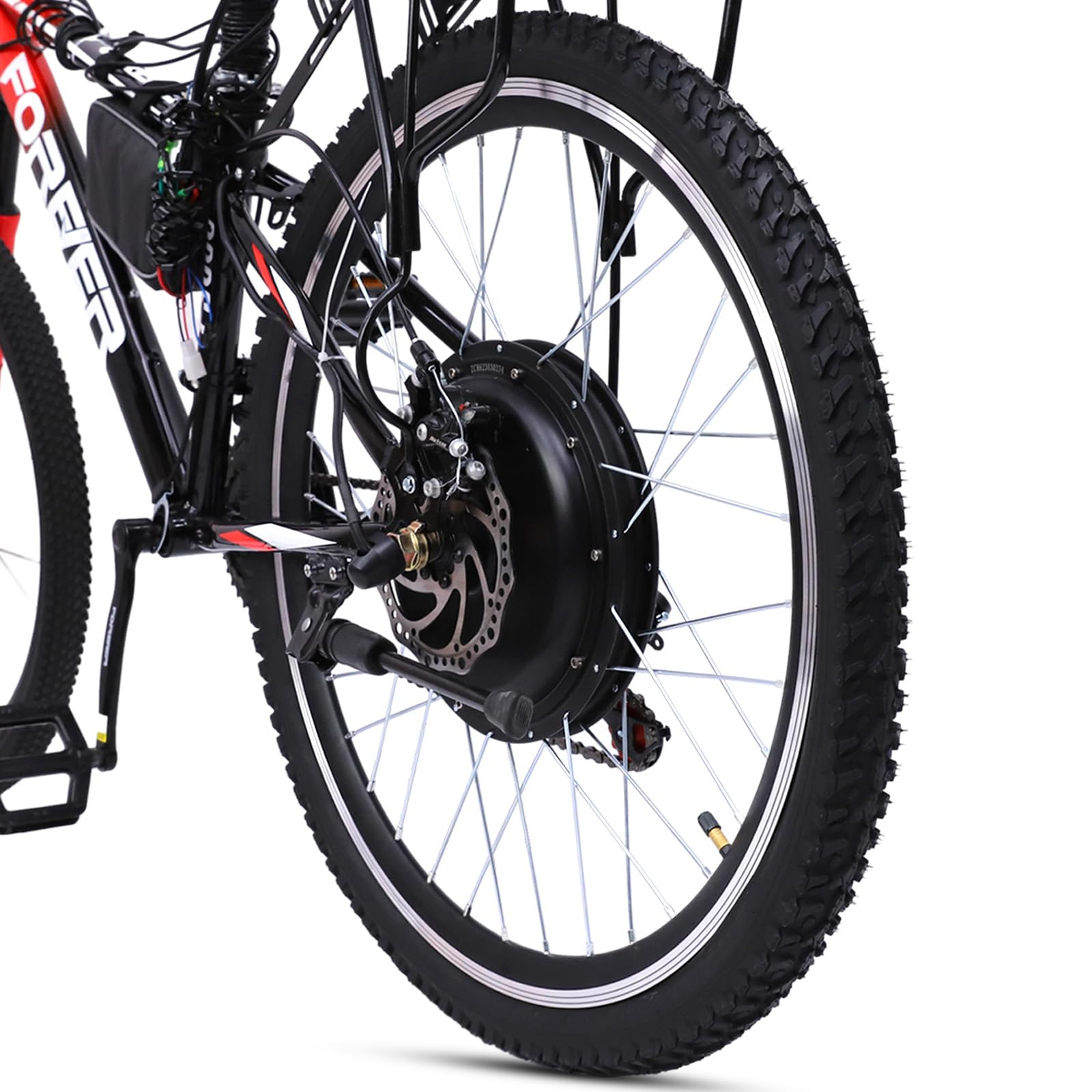
Voilamart Electric Bicycle Kit Review: 1000W E-Bike Conversion with LCD Display
Today, I will be giving my thoughts on the Voilamart Electric Bicycle Kit 26 Rear Wheel 48V 1000W E-Bike Conversion...

Review: 24V36V250W Electric Conversion Kit for Bikes
I recently bought and set up the 24V36V250W Electric Conversion Kit for my regular bike. This kit is made for...
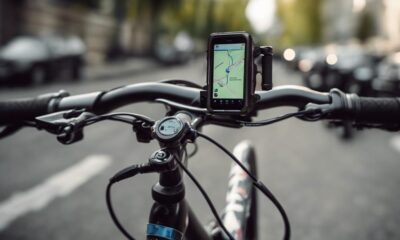
15 Best Bicycle Navigation Devices to Keep You on the Right Path
Navigate through the top 15 bicycle navigation devices and stay on track with cutting-edge technology and features.

15 Best Bicycle Navigation Computers for Cyclists on the Go
On the lookout for the best bicycle navigation computers for cyclists on the go? Find out which one offers Voice...
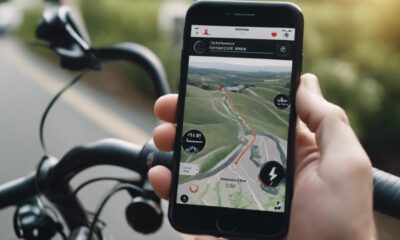
15 Best Bicycle Navigation Apps to Enhance Your Cycling Adventures
Hop on your bike and explore the top bicycle navigation apps with features like sensors, vibrant touchscreens, and innovative navigation...
We are a passionate team driven by the belief that cycling is a fantastic and accessible way to stay active while enjoying the beauty of the outdoors. Our mission is to share our love for cycling with as many people as possible. We provide a welcoming environment for individuals of all ages, abilities, and backgrounds to come together and ride bikes. With Ralf’s visionary leadership, Zane’s expertise in cycling adventures, and Olivia’s dedication to community building, we strive to create a vibrant space where everyone can experience the joy of cycling. Through group rides, workshops, and inclusive events, we inspire and empower individuals to embrace an active lifestyle. Join us in our quest to pedal together, embrace the joy of cycling, and foster connections that last a lifetime.

12 Best Men's Cycling Bib Shorts for Comfort and Performance – Reviewed & Rated

How To Turn Your Bike Into An Electric Generator

15 Best Fixed Gear Bikes for Urban Commuting and Stylish Riding

Advantages and Disadvantages of a Carbon Fiber Bike Frame

15 Best Cycling Jerseys for Men to Elevate Your Riding Game

15 Best Cruiser Bikes to Hit the Road in Style

15 Best Cycling Gloves for Comfort and Performance – Ultimate Guide for Cyclists
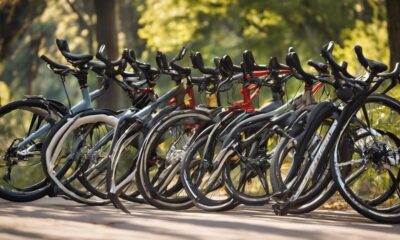
15 Best Comfort Bikes for a Smooth and Enjoyable Ride
Privacy Overview
- Vuelta a España stage 13 Live - Van Aert and breakaway battling for stage; GC fight set for final climb
Best touring bikes: Machines for old-school, long distance riding
The best touring bikes to load up for the long haul or just for local load-lugging
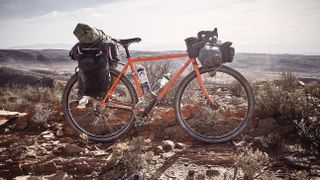
- How to choose
The best touring bikes are designed to be loaded up for comfortable long-distance riding, but they're also a robust, reliable option for local riding with a load or just for commuting .
They're a bit old school now, with bikepacking being the trendy fast and light way to ride far, either on one of the best endurance bikes or the best gravel bikes . The availability and range of models reflect that trend, although touring bikes still offer a great way to see the world.
They're built strong, often with a steel frame and fork and have reliable wheels with plenty of spokes for strength, as well as a wide gear range, which may be via a triple chainset with a smaller range of "speeds" in the cassette or hub gear. Expect an upright ride position and comfortable touchpoints.
Luggage is normally carried in panniers and bags attached to a rear rack, often supplemented by a front rack, as well as a bar bag. Mudguards are also normal, making riding more comfortable in all weathers, while multiple bottle cages mean that you can keep hydrated even when you're far from a tap.
Below, you'll find our pick of the best touring bikes and below that is our buyer's guide to how to choose the best touring bike for you.
Best touring bikes: our picks
You can trust Cyclingnews Our experts spend countless hours testing cycling tech and will always share honest, unbiased advice to help you choose. Find out more about how we test.

This Genesis touring bike option comes fully loaded, with front and rear racks, lights and a bottle cage, while its 35mm wide tyres give a comfortable ride. There's a Shimano Tiagra triple chainset, which gives a total of thirty gear ratios, which head below 1:1 for loaded climbing.
Read more below
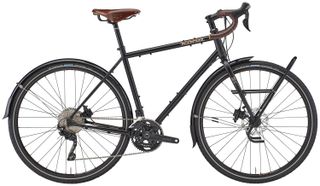
Another steel-framed tourer with many of the extras you'll need already there. The Kona Sutra has a high ride position and is equipped with a Brooks leather saddle for a retro touring vibe, although the disc brakes and wide gear range keep it up to date.

Yet another steel-framed option with front and rear racks and an upright ride, the Salsa Marrakesh has 3x9-speed gearing and mechanical disc brakes. Its 42mm Teravail tyres should provide comfort and grip wherever you travel.
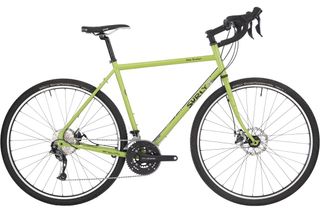
Another long-haul steel model, the Disc Trucker has a very upright ride position thanks to its riser stem and yet more rise to its bars. A triple chainset that goes as low as a 26x34t ratio helps with long rides over steep roads.
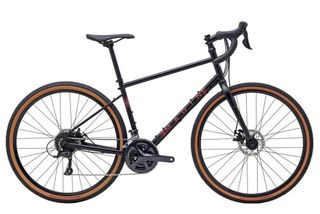
With 42mm WTB Resolute tyres, the Marin Four Corners is a bike that can handle poor road conditions. The steel frame and fork are robust, while the triple chainset, nine-speed gearing and mechanical disc brakes should prove reliable.

The Giant Toughroad takes a slightly different tack from most touring bikes, with flat bars, an alloy frame and carbon fork. Its 50mm wide tyres and very wide gear range equip it for off-road adventures.
Best touring bikes
1. genesis tour de fer 30, specifications, reasons to buy, reasons to avoid.
The Genesis Tour De Fer is a great option in this category. It's a top all-round bike, featuring a solid steel frame, durable tyres, disc brakes and all the practicalities such as three bottle cages, front and rear racks, mudguards and dynamo-powered lights.
Simply put, this is a bike ready for whatever you need to do straight away, whether it's commuting, leisure riding or touring. The bike offers an easy, calm ride, and is comfortable enough to get on and go right away.
35mm Schwalbe Marathon tyres come as standard, with their puncture-proof reputation. The Shimano Tiagra triple groupset gives you plenty of range including a sub-1:1 ratio to haul your loaded bike up the hills. You might need that range, with the extra features adding significantly to the bike's weight though.
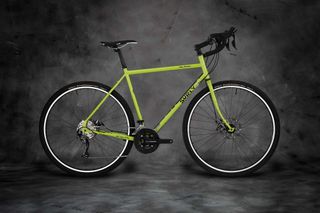
2. Surly Disc Trucker
Another do-anything bike, the Disc Trucker features a sturdy and good-looking steel frame and fork. It is, however, more suited to road riding than exploring gravel and mud, though it's not to say that you can't tackle gravel tracks with it. The rise to the bars, paired with a long head tube gives a comfortable all-day ride position.
Mounts for three bottles, a pump, and mudguards add to the practicality, while the tyre clearance will let you get some meaty rubber in there. Surly quotes 2.1" tyre clearance on 650b wheels and the smaller frame sizes come specced with this wheel size for better toe clearance.
A Shimano Alivio MTB triple groupset with Sora road shifters provides steady and reliable 9-speed shifting, although it's quite a low end spec. Like the Genesis and the Trek, the Disc Trucker relies on TRP Spyre mechanical disc brakes for reliable, low-maintenance stopping power.
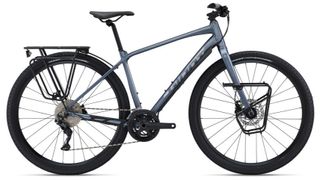
3. Giant Toughroad SLR 1
What do you get when you combine a mountain bike, a touring bike and a gravel bike? No, this isn't the start of one of your dad's jokes, you get the impressively capable Toughroad SLR 1. More suited to the offroad than any of the bikes we've looked at so far, Giant calls it a do-it-all bike capable of commuting, but make no mistake, it's built primarily for dirt and gravel.
There's no suspension fork, but the giant 50mm tyres are a dead giveaway. An 11-42 MTB cassette on the back will also help with tackling the steep stuff, although there's not the absolute range of the triple chainsets on the bikes above. Pannier racks front and back and three bottle cage mounting points mean you can pile on whatever you need to take with you.
There are plenty of modern features on the bike, including thru-axles, hydraulic brakes, and tubeless tyres. A reliable Giant wheelset and Shimano Deore groupset round off this bike. You might find the lack of variation in hand position with the flat bar configuration gets tiring on longer rides though.
4. Kona Sutra
The first thing to strike you about the Sutra is its retro features; the Brooks leather saddle and steel frame give a different look to many of the bikes we've looked at. Disc brakes and thru-axles remind you that this is a thoroughly modern bike, though.
It's another bike for touring and commuting on the road and on some gravel/dirt surfaces. Mudguards and front and rear pannier racks are included, while there are other bosses for more additions if needed.
The 10-speed Shimano GRX gravel groupset with Tiagra shifters gives plenty of range, although not as much as a triple like that specified on the Trek, while the hybrid hydraulic/cable-operated brakes should give a bit more stopping power than the TRP Spyre cable brakes specced elsewhere, they are more of a faff to maintain though. It's a classy-looking bike that can work well anywhere.
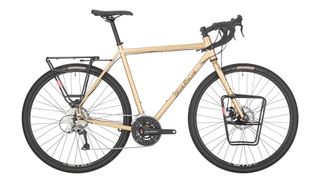
5. Salsa Marrakesh
A great-looking steel frame is the first thing to catch the eye on this bike, while the fat 42mm tyres give a signal as to its intentions. It's as comfortable off-road as on, whether you're touring, commuting or just riding for fun.
As with the bikes above, front and rear racks are included, though if you want to add mudguards, be warned that the wide tyres will need to go on a diet – down to a 40mm maximum.
It's a solid entry into the touring selection, even if it is a bit on the weighty side, however, though not so much that you'll be struggling under the weight. Components include a Shimano Alivio groupset with Microshift shifters as well as TRP Spyre-C disc brakes and wheels and tyres ready to be set up tubeless.
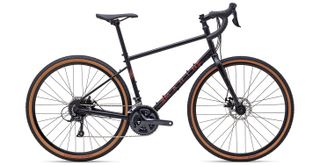
6. Marin Four Corners
The Marin Four Corners is part tourer, part gravel bike. It's got the clearance for really wide tyres on 650b wheels (which is the stock wheel size specced on smaller-sized frames), but you can also set it up for a more traditional touring configuration with 700c wheels.
The steel frame is bombproof while the long head tube gives an upright ride position so you've got plenty of visibility all around. There are mounts for a rack, mudguards and to lash extra kit to the fork legs, so you can load up to head into the unknown. It's a bike more geared to gravel than the road, unlike the more traditional tourers like the Kona and the Genesis.
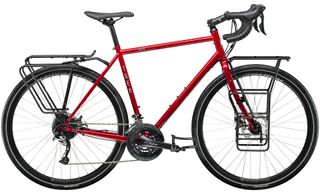
7. Trek 520
Marketed as a bike for long-haul travel, the Trek 520 is the longest-running bike in Trek's stable, although its days look to be numbered. The 520 is no longer sold in the UK or US, but international buyers in some countries still have a choice of two specs on Trek's site, including the Sora/Alivio option above.
Like the Genesis, the Trek 520 comes with front and rear racks, although you'll have to add mudguards for all-weather use. Small updates include mechanical disc brakes with a thru-axle alloy fork, while the 9-speed Shimano Sora gearing provides massive range from its triple chainset, albeit with quite large jumps across the 11-36 tooth cassette.
It's also nice to see tubeless-ready wheels specced (although not the tyres), so you can set up tubeless, which should up dependability on long rides.
How to choose the best touring bike for you
Whether you're looking for a practical way to get to work, want that extra durability so that your bike will stand the test of time or want to travel to far-flung corners of the earth with nothing but a tent and a change of clothes, a touring bike a great addition to your stable of steeds.
You can still get around quickly – whether you're hitting the roads, gravel paths or other rough terrain – but plenty of space for mudguards and racks, as well as a more relaxed position, make a touring bike a better all-round option than a road bike, a hybrid or a mountain bike.
The relaxed geometry and more upright riding position are also handy for commuting, and the best touring bikes are often built with durable, easy-to-maintain components so they can be fixed when hundreds of miles away from a bike shop. This lends itself to fewer mechanicals and lower running costs. Steel frames also have a far better chance of being repaired all over the world compared to aluminium or carbon fibre if you're on a big trip.
What types of touring bike are there?
Touring bikes can range anywhere from predominantly road-going bikes with horizontal top tubes and 700c tyres, to rugged mountain bikes with knobbly mountain bike tyres.
What the best touring bikes tend to share, however, is a durable design, comfortable geometry and the ability to carry luggage. Some opt for bikepacking bags , which usually consist of frame bags and oversized saddle bags, whereas others opt for the traditional rack and pannier bag method of carrying luggage.
As with any bike purchase, consider the riding you plan to do with the bike. For those looking to travel far and wide, a bike with more luggage-carrying capacity will be preferred. For those who are looking to travel off-road, look for a bike that can handle the rough stuff. Live in the mountains? Look for a wide gear range.
What's different about touring bike geometry?
Touring bike frames feature a relaxed geometry , with a taller head tube and shorter top tube for a comfortable and more upright riding position compared to a racing road bike. In addition to this, they feature a longer wheelbase, which keeps the bike stable even when loaded with heavy luggage. Since they're designed to be cycled over long distances, they're equally designed to stay comfortable for as long as possible.
If you're a geometry nerd you may notice the trail is a little lower than you'd expect for a relaxed ride, but this is often done to counteract the slowing effect on the steering of a heavy front load to avoid the bike feeling like a barge when laden.
Which gearing should a touring bike have?
Gearing-wise, what you should pick really depends on what type of riding you'll be doing. If you're taking on hills regularly, then you'll want a cassette with larger sprockets on the back. Some touring bikes offer a triple chainset too, with easier gearing on offer compared to a double chainset. The addition of extra gear combinations into the mix will add an extra component to maintain, so those on flatter terrain might prefer a single chainring at the front.
The majority of touring bikes offer standard external gear systems – the chainset, chain and cassette we're all used to. Some do have internal gearing though, with an enclosed rear gearbox which requires a lot less maintenance and is less prone to damage but is heavier and will cost you more. Belt drives are also available – this is a multi-tooth belt instead of a chain, so no regular cleaning or lubrication is required. Hub gears like the Rohloff system are favoured by riders taking on huge worldwide tours for their durability.
Should I look for rim brakes or disc brakes?
As with much of the cycling world, rim brakes and disc brakes are both available, with rim brakes found more often on lower-end bikes. Rim brakes feature two pads grabbing onto the wheel rims to stop the bike, while disc brakes grip onto a separate rotor on the wheels instead.
Disc brakes feature better and more consistent braking performance, which is useful for a heavily laden bike, and are better in wet weather, though. Both adjustment and maintenance are far easier with rim brakes, however, with an Allen key and some new pads all you really need.
Rim brakes will wear down your rim eventually, prompting a rim swap and wheel rebuild or a new wheel. Whereas that's not an issue with disc brakes, and there's more leeway to keep riding with a buckled disc brake wheel or a broken spoke.
Hydraulic disc brakes are generally maintenance-free in operation, however, if you snag your brake hose on a tree in the middle of the Atlas Mountains, there's little chance of repair unless you packed a bleed kit and spare hose.
What should I look for in touring bike contact points?
Saddles are an important factor, being the main point of contact with your body. Padded saddles may look more comfortable but looks can be deceiving, with thinner padding usually better for you once you've gotten used to it after a few rides. Saddles should support your sit bones, and additional padding can move the pressure elsewhere and rub more, making things more uncomfortable over time.
If you're planning a long trip and already have a saddle that you like, it may be worth swapping out the saddle that comes with the bike, if you're not sure how comfortable it will be for the long haul.
On a multi-day trip, handlebars need to be comfortable as well. Some bars have a slight rearward sweep, which can feel more natural when riding on the tops. A shallow drop is likely to be more comfortable to use as well.
Which pedals should I choose?
It's worth choosing pedals wisely too. While the best road bike pedals give good power transfer, the best cycling shoes that work with them are difficult to walk in, which could be an issue if touring or even for a trip to the shops.
On the other hand, flat pedals may make it difficult to keep your feet well-positioned for longer rides. They will allow you to use standard shoes, which are easier to walk in, but unless the soles are relatively stiff, your pedalling will be less efficient and you may get foot ache after a long day riding without adequate support.
Gravel bike pedals are a good option, as they still let you clip in for more efficient riding, but the cleats are recessed on the sole of the shoes and so can be walked in much more easily. You'll need gravel shoes to go with them that accept two-bolt cleats. These will have soles designed for efficient pedalling and foot support, but most are not too stiff to walk in comfortably.
Alternatively, some of the best commuter cycling shoes also allow you to fit two-bolt cleats.
You can learn more about the pros and cons of two-bolt versus three-bolt pedals in our explainer.on Shimano SPD vs SPD-SL systems.
Get The Leadout Newsletter
The latest race content, interviews, features, reviews and expert buying guides, direct to your inbox!
Paul has been on two wheels since he was in his teens and he's spent much of the time since writing about bikes and the associated tech. He's a road cyclist at heart but his adventurous curiosity means Paul has been riding gravel since well before it was cool, adapting his cyclo-cross bike to ride all-day off-road epics and putting road kit to the ultimate test along the way. Paul has contributed to Cyclingnews' tech coverage for a few years, helping to maintain the freshness of our buying guides and deals content, as well as writing a number of our voucher code pages.
Redshift Switch Aero System and ShockStop stem review: Odd on their own, but transformative together
Look X-Track Power pedal review: Testing Look's $1,000 dual-sided off-road power meter pedals
UCI MTB World Championships - Isabella Holmgren wins XCC U23 women rainbow stripes
Most Popular

Planning A Really Long Bike Trip? Ask Yourself These 7 Critical Questions First
Posted on
I know the title of this post might sound odd.
For the last 15 (wow… 15!) years, I’ve been banging on about the sheer awesomeness of going on bicycle adventures.
I’ve been doing it so consistently that I’ve now published more words on this blog than in all six Lord Of The Rings books combined.
Why, then, would I want you to question your dream long-distance bike trip?

I’ve been around long enough to have seen a great many bicycle journey-based projects come and go. And – though you’d be forgiven for not noticing – they don’t always end well.
One highfalutin example from a few years back comes to mind, in which a branded, sponsored and massively hyped-up ride from Cornwall to Cape Town barely cleared Western Europe.
The fallout wasn’t pretty. The ‘official’ reasoning from a hostel in Morocco had something to do with travel insurance and security concerns in Mauritania. This was a reasonable-sounding excuse – unless you know that it’s a well-known risk every other cyclist heading for West Africa goes ahead and takes; so far with no reported ill effects whatsoever. Cue epic tantrums when this was pointed out.
It was all rather cringeworthy. Scanning back through the trip blog and reading between the lines, you could tell that this young and inexperienced rider had just been having a really shit time . But buried neck-deep in corporate logos and grand-sounding mission statements, the act of quitting was no longer just a personal decision. It was a public loss of face, the scale of which matched that of the ride’s high-profile departure a few weeks earlier. And that made the whole thing so much worse.
At the private and anecdotal end of the spectrum, I made friends a few years back with a German cycle tourist in Armenia – or, more accurately, former cycle tourist.
After cycling from Germany to Armenia, he’d stopped in Yerevan and had been having far more fun Couchsurfing and hitch-hiking around the Caucasus than he’d ever had on the bike, realising that the whole thing had been lonely and repetitive and was never going to improve.
He’d ended up becoming a more or less permanent resident of Yerevan, in fact, lodging with a long-time Couchsurfer and paying his rent in food (he was a professional chef back home, and a bloody good one at that). The only further cycling he planned to do was to Tabriz, in order to deliver his top-end Rohloff-equipped expedition bike to its Iranian buyer.
These are just two examples that come to mind. I’ve heard countless more, mostly of the private and anecdotal variety.
(No judgement implied, by the way. Sometimes quitting is exactly the right thing to do. I’ve been there.)
It just seems to me that a great deal of energy could be better spent elsewhere if the cycle touring community stopped pretending that long bicycle journeys are for everyone, when the evidence shows that they are not.
So how, dear reader – if you’re planning or considering your first big bike trip – will you know if long distance cycle touring is really for you?
There’s no way to really know, of course, except by giving it a try , which kind of undermines my argument. But here are seven questions to ask yourself that might suggest a likely answer.
(Warning: This is the start of a truly epic 5,673-word blog post, for which you may like to put the kettle on.)
1. Do I enjoy my own company?
Put another way, where do you sit on the introvert-extrovert spectrum?
If you can’t answer that question, it’s possible that you haven’t spent enough time getting to know yourself to know the answer. That might be because you’re too young, or too busy, or just never thought about it before.
Let me tell you: if you’re planning a long cycling journey, you’re about to get to know yourself really, really well .
Even if you’re riding with other people, travelling by bicycle is going to involve long stretches of time when there really is nothing to do but pedal, watch the world go by, and deal with the looming spectre of being by yourself .
One of the less-publicised truths of cycle touring, in fact, is that it generally consists of very little else.
You won’t get this impression from reading blogs or books about long bicycle journeys. The author will be far more likely to spend a couple of thousand words describing the incident with the friendly Kazakh nomad family and the goats’ testicle stew (followed, probably, by “and then I cycled another 500 miles on an empty stomach”).
The act of cycling itself doesn’t get proportional representation in cycle touring stories.
Because it’s boring .
It’s important to know, particularly if you are planning on going solo, that you will be spending inordinate amounts of time in your own head, with very little in the way of external stimulation to distract you – and no, pedalling is not a distraction any more than breathing is, because by the end of the first week or so, it’s as automatic as it’s ever going to be.
Sure, there’ll be occasions when you’re riding through a scene from a postcard and you stop to gaze in awe. But don’t expect every day to pass like you’re riding through a National Geographic slideshow. Cycling is slow. Changes are gradual. You will see everything , including when there’s nothing to see, and pedalling harder won’t change that.
(I know at least one round-the-world rider who got so bored with the daily grind that he took to watching old episodes of Blackadder on his iPhone.)
Modern Western culture does not have a tradition of proactive training in self-reflection techniques , with the result that we aren’t well-equipped to deal with a prolonged absence of external stimulus. We’re good at dealing with quick-fire material and intellectual issues because we’re confronted by them every day, but when it comes to dealing with the voices in our head, our usual remedy is distraction. Work, play, entertainment, socialising; all can be (and often are) used as avoidance techniques, which of course is why Facebook is so popular because it combines them all.
On a bike, on your own, no common language and a thousand miles of desert to go? There’s nowhere to hide.
The experience of suddenly having little-to-no input can be deeply unnerving . It could be likened to a silent meditation retreat with the instructional element removed.
Anticipate this. I’m not joking when I suggest training yourself in basic meditation techniques ( this book * is a good primer) so you will have the tools to recognise and deal with the chattering mental demons that will be unleashed.
But if you have no interest in spending time with yourself (perhaps because you’re afraid of what you might have to confront?) – do yourself a favour and avoid long-distance cycle touring at all costs.
2. Can I tolerate discomfort?
Many of us like the idea of being that rugged outdoorsperson who would sleep through a rainstorm in a ditch with a knife between our teeth and only a handkerchief for shelter.
I do not know anyone who fits this description. And I routinely hang out with rugged outdoorspeople.
We all have limits on the level of discomfort we can tolerate before we burst screaming from our comfort zones and land plonk! in the middle of the panic zone. When there’s no escape from such circumstances, it’s a sure recipe for being really, really miserable.
There’s a certain baseline of discomfort involved in long-distance cycle touring, and it boils down to the fact that while, yes, people’s budgets vary, almost nobody can afford to stay in decent hotels every night for months on end, making wild camping an inevitability. No matter how much you spend on gear, wild camping will mean stressful nights, lumpy ground, soggy sleeping bags, freezing mornings, cramped vestibules and smelly camping partners becoming part and parcel of your existence.
OK with that? Good.
Also, don’t forget that you will be riding a bicycle and spending 99% of your time nowhere near a solid shelter of any kind. You won’t always be able to escape the rain, or snow, or sun, or steep hills, or dogs, or headwinds, or sidewinds, or – my personal favourite – that combination of headwind, sidewind, steep hill, rain, and dog.
If you try to escape all of these things, you will probably find that your cycle tour seems to involve a heck of a lot of trying to work out how long you can reasonably stand under the hot air vents in the doorway of a supermarket before the security guard kicks you out.
Oh – and you will get a sore backside. Guaranteed.
Also; thighs, calves, wrists, neck, shoulders. Pain.
OK, let’s do this properly. I’ll also throw in those concentric white rings of dried sweat on every item of clothing you own; a layer of dark grey or brown grime embroidering every patch of exposed skin on your body; black bicycle grease in the cracks of skin around your fingernails that you suspect may have become tattoo-like in its permanence; the daily frustration of never being able to remember which pannier you put that thing in despite months of refining your packing regime; constantly having to stop and check your direction because you’ve been aiming for the most scenic route possible and all the signs are pointing to the highway; ending your days accosted by locals who just can’t understand that you’re utterly exhausted and want nothing more than to sleep in a ditch with a knife between your teeth and only a handkerchief for shelter…
If you enjoy a bit of comfort and luxury on an adventure, and the prospect of that is what makes the day-job tolerable, that is absolutely fine, and you have my permission to book a vehicle-supported cycle tour along the Danube Cycleway with low daily mileages and scheduled lunch stops and a four-star Gasthof every night. No shame. Save yourself the misery of a long bicycle journey and enjoy a hard-earned holiday instead.
3. Can I solve my own problems?
What will you do when you get a flat tyre, your last remaining tube patch won’t stick, your spare innertube is the wrong size, and you’re in the middle of Outer Mongolia?
What will you do when your expensive multifuel stove is spluttering black soot everywhere and it’s raining and you’re wondering how long dried pasta needs soaking in cold water before it’s edible?
What will you do when you’re still climbing an endless switchback road at sunset and there’s not a square inch of level ground to pitch a tent on?
What will you do when your frame snaps at the rear dropout a week’s ride from the nearest city, it’s 56°C, and you don’t know the Arabic for ‘welder’?
What will you do when there’s no water in the river you’d seen on the map, your bottles are all empty, and it’s four days since you last saw another human being?
What will you do when you discover, in gale-force winds at ‑33°C in the middle of rural Norway, that regular tent pegs don’t work in snow?
What will you do when you’re riding a walking pace up a mountainous dirt road, there’s a crowd of children a hundred yards ahead, and the first one stoops for a stone?
Put yourself in each of these situations and ask yourself what you’d do.
You’ll probably find that one of two things happen. Either you’ll start coming up with large numbers of random and untested lateral solutions, or you’ll go completely blank.
Know this: on a long bicycle journey, you’ll be dealing with hundreds of situations like these, and “OK Google” won’t solve any of them. Nor will your insurance company .
Things will happen to test you, and you won’t know what to do; yet it will be entirely upon your shoulders to fix the situation and continue with your ride.
If you’re OK with this – great. Indeed, developing the attitude and initiative to navigate such situations is one of such a journey’s great rewards.
If you’re not OK with it? Well, it shouldn’t stop you setting off, as you’ll learn pretty quick. But it’s good to have an idea of what you’re in for.
And yes – all the stories above are true.
4. Do I like to know what’s going to happen?
One of the appeals of the package holiday – which I am not knocking in the slightest – is the near-complete removal of unpredictability. It’s like going into McDonalds for a meal: you know exactly what you’re going to get. Any deviation deeply violates our sense of what is right.
When planning a cycle tour, it is sometimes tempting to try to carry elements of this mentality over, just so there’s something to give us a frame of reference.
If I start from here , at an average of this many miles a day, and I take this route… then I should arrive there on that date.
And yes, there will be certain riders who take this approach and successfully multiply it out, stage by stage, for trips of months or years.
But it is a mistake to assume that this is how things are likely to play out in reality.
Here’s what will actually happen.
You’ll start by getting on your bike and riding purposefully out of town. You do fewer miles on the first day, though, because… well, it’s the first day, and it’s best to ease into it slowly, right?
The following day you’ll mean to set off at sunrise to make up for it, but it turns out there’s a charming little town just down the road to explore (and have breakfast in).
On the way out of town, you’ll realise that it’s a long way to the next supermarket, so you’ll ride back into town to stock up for lunch. By midday, you’ll have found a lovely spot by the river that no-one seems to have noticed – with trees for shade – and it’s getting hot, anyway, so a little lie down after lunch makes sense.
While you’re napping, a farmer will spot you and invite you over for a second lunch (why, thank you!), and tell you there’s a much nicer route in the direction you’re going, if a little longer and more hilly. Then it’ll turn out that they’re more interested in wine than food, and now you’re over the limit too. In any case, they’ve offered to let you camp out back.
In the space of a day, you’ll realise that not only could you easily spend twice as long as you planned getting from A to B, but you’d probably have a lot more fun if you did. You might even have realised that heading towards C makes more sense than B.
How does this style of life and travel sit with you?
Just asking. Because sticking stubbornly to your sensible, pre-planned itinerary will inevitably mean saying no to the charming town, no to the shady lunch spot, no to the farmer’s kind invitation, no to the scenic route.
And, over time, all those no s can add up to a lot of resentment and frustration.
If you’re able to build the kind of flexibility into your plans that will allow you to react spontaneously to new opportunities, you’ll be embracing what for me is the real spirit of the bicycle adventure: the freedom afforded by this humble mode of transport to go anywhere, accept every invitation, take every scenic route, and do it at whatever pace feels right at the time.
If you need things to go exactly the way you’ve planned all the time to feel that you’re in control of your life, on the other hand, the idiosyncrasies of the long bicycle journey may simply stress you out.
And if that stress brings you to breaking point, you have two options – either quit stressing and go with the flow , or quit riding and go home.
(One more reason not to make any public promises you can’t keep.)
5. Am I capable of living in the present?
Modern life tends to be overwhelmingly oriented towards goals, targets, objectives and deadlines – especially in the context of work, which of course constitutes our main hobby in the developed world.
When we take a break from work, it’s natural to want to drop out of this mindset and to enjoy the present moment. But – though it sometimes feels like it could go on forever – it’s rarely long before we return to our previous goal-oriented state.
Something funny can happen when we take a much longer chunk of time out, however, or when we quit our jobs altogether in order to travel. We are creatures of habit, and it doesn’t take long before we start to crave a new goal to work towards, because that’s how we’ve come to understand purpose and progress in life. And so we begin to invent goals and objectives to work towards.
(Perhaps this explains the incidence of high-powered corporate executives reinventing themselves as professional adventurers on a mission to push the limits of endurance and human capability.)
The elephant in the room in the context of bicycle travel stems from the combination of goals taking the form of far-off destinations (let’s take cycling from the UK to Australia as an example) and the bicycle being one of the slowest and most inconvenient ways to get to that destination .
If you simply want to get from the UK to Australia, there are a number of perfectly decent airlines who will accomplish this for you in roughly 24 hours, as opposed to the year or two it would take on a bicycle, and for a lot less money.
Choosing to make that journey – or any other really long journey – by bicycle, then, must mean that arriving at the destination is not the point at all.
I remember chatting to one fresh-faced youngster at RGS Explore many years ago, shortly after returning from my first long bicycle journey, where I’d been asked to sit on the panel for the cycling expeditions workshop.
“But what were you actually thinking about when you were riding?”, he asked me earnestly.
“Erm…” I began, and paused, slightly taken aback, because it had never occurred to me that there was a simple answer to the question of what someone had spent the previous 3½ years thinking about.
But the young man misinterpreted my hesitation as an implication that the answer should have been obvious, and, nodding gravely, filled in the answer for me.
“Just focusing on the mission.”
Of all the millions of things I no doubt thought about while pedalling all those thousands of miles, the one thing I can safely say I never, ever thought about was…
The mission.
I thought about lots of things. I thought about everything . I thought until my brain was so exhausted from thinking that everything went very, very quiet, and I realised I had nothing left to think about, except for the most immediate concerns of the moment, if indeed there were any. And if there weren’t? Well, I contented myself with entering that most rare and unimaginable of mental states: not thinking about anything at all .
Oh, if only I could have explained that!
It boils down to this: if you spend your days holding some intercontinental finish line in your mind while you’re grinding along at 13mph (and you’re not consciously doing this thing in order to break a world record, make a TV show and launch a broadcasting career off the back of it), you will go completely barmy.
That finish line will never get any closer. You’re on a fricken’ bicycle . You may be looking at a journey of months; even years. Why would you choose the most fiercely independent form of global travel and then fritter away that freedom waiting for your journey to end, one futile pedal stroke at a time?
You won’t get any special points or awards for suffering in this way. It won’t make you stronger or better as a person. It’ll just mean you’ll have missed the point completely.
The use of almost every other mode of transport – cars, trains, buses, planes – can be characterised by enduring the process of arriving at a destination . Carrying this way of thinking over to the bicycle – at that kind of scale – is a mistake.
By all means use a far-off destination (or series thereof) as a bearing for your overall direction. But once that bearing is set, look up from the map and compass and experience the journey itself, for that is where the rewards of bicycle travel truly lie.
Incidentally, ‘mindfulness’ and ‘being present’ has become ever more trendy since I originally wrote this post. Many of the techniques could be viewed as an antidote to that goal-oriented mentality; a toolkit that allows us to take little breaks from the futility of trying against all odds to wrangle the future into a pre-determined shape.
On a long enough bike trip, you’ll eventually figure out for yourself that it really is only possible to experience the present , and that the past and the future really are just constructs. You won’t need any bestselling books or guided audio meditations or expensive app subscriptions to discover this, because the truth will be staring you in the face all along.
(Hah! And here I am, talking about your future…)
An important postscript to this point.
You may have decided to social media the fuck out of your journey for whatever reason. Having begun, you may have realised how complex the experience is that you’re having, and feel the need to dumb things down for ‘your audience’, numbering your days, posting a daily mileage count, and trendily oversharing how much internal self-doubt you’re dealing with right now.
If this is you, please consider that you may be taking advantage of the ignorance of an awful lot of good people when it comes to what life on the road is actually like, thus propagating the myth that such a journey can be meaningfully reduced to two-dimensional statistics, a line on a map, and trite anecdotes about your inner journey. It can’t.
This is not to say such stories are not worth sharing, but let’s at least acknowledge the possibility that they might be better off digested before being regurgitated.
6. Am I hoping for social recognition/approval/status?
Spend some time with this one. Because there is always a deeper motive behind an idealistic-sounding desire to drop out of the system and pedal across a couple of continents.
Sometimes it’s a desire to escape a stifling set of life circumstances and strip everything down to the essentials in order to feel alive or unconstrained or authentic. Sometimes it’s a desire to imitate or follow in the footsteps of a hero or idol and live out a fantasy for oneself. Sometimes it’s a reaction to discovering that the world is not as it appears on TV and wanting to supplement that with first-hand experience. Sometimes it’s something private and unimaginable.
(The common theme is often simply that the bicycle is chosen a means to an end . Though there are exceptions, people rarely go on long bike trips for a love of cycling.)
Sometimes, though, what drives a journey like this is a desire to make some sort of statement to society – that a wrong turn has been taken and this journey will illuminate the right way.
This one is different because success or failure depends – at least in part – on external perceptions.
There may be a personal injustice involved, or an inferiority complex, and the ride is about retribution in the eyes of those who caused that pain, even if only in theory.
Or there may be a greater social issue at stake, and the ride has been cast as a way of raising awareness of it (or, in a minority of cases, actually doing something about it).
This is dangerous territory, for a few reasons. The most obvious of these is that you can’t imagine it unless you’ve been there.
Riding a bicycle round the planet (or a good chunk thereof) is an intensely affecting experience, calling into question ways of thinking and living you don’t even know you take for granted until you’re faced with their opposites. It’s often humiliating in the original sense of the word – it will make you humble; bring you down a peg.
In that light, any hopes that your exploits will elevate you to a position of respect or superiority will be dashed, because your insecurities will have paled in comparison against the tangible and often mortal struggles of so many in the world. And while you know you could spin your tale in a way that makes everyone back home think you’re awesome, you will always know that your story is a fraud; that all you really did was get on a bicycle and start pedalling, like four-year-olds in backyards all over the world are doing right now, and you transiently experienced a lot of asphalt and a hell of a lot of other people’s versions of normality while you were doing so, and when you put it like that, it’s not so awesome after all.
A less distasteful and entirely understandable desire is simply for your friends and family to understand what your journey was like, and to ask kind and curious questions about it when you come home.
Again, you will be disappointed.
Almost nobody will ever understand what you experienced or how it changed you.
The experience you’re going to have lies outside almost every frame of reference we collectively share – how big the world is, how strangers really behave towards each other, what it’s like between places, how it feels to live with no top-down control structures whatsoever, how constantly moving at 13mph affects time and memory, how communication and relationships change when you meet a hundred new people every day, how it feels to live every day having no idea where you’re going to sleep, how it feels to put your body into full-time service as an engine for transport…
These, the things that define the lifestyle, are things that not only will your closest people never experience, but they are things that you will find you lack the ability to explain, because for most of it, there is no familiar form of words to put it into.
(My theory is that this is why so many long-haul riders end up writing books and blogs – they simply want to devote some time to articulating what it all meant to them.)
Attaching a ‘cause’ – by which I mean a charitable, political, fundraising or similar project – to a journey is also, in my opinion, a dangerous move.
This is not because there’s anything innately wrong with doing so. After all, it’s natural (and accurate) to think that people will be interested in following your story, and that if telling your story well can bring attention to another issue, why not do so?
The problem is twofold. There is first the additional layer of intellectual complexity that it will add to your trip. You’ll need to attend to the cause consciously, strategically, and with consistency, and you’ll need to wrestle your stories to make them relevant, if the effort is to pay off.
You’ll also possibly need to portray the cause as the whole point of the endeavour – at least, if you expect anyone to believe that you haven’t just tacked it on to justify an extended holiday. And that might not be true.
The second problem is that going on a bike trip of months or years is an ineffective fundraising or awareness-raising strategy. Kickstarter campaigns, flash sales, presidential elections – these things take the form of a short-lived burst of activity for a good reason, which is that people have very short attention spans.
You, on the other hand, will have festooned your website and social media bios with logos and links to your cause. But after the first hit, your audience will either have devoured it all/donated cash/changed the way they live/etc; or they will have erected a filter which prevents them ever thinking about your cause again because what they are really interested in is the story of your bicycle adventure.
There are exceptions – usually time-limited and high-profile exceptions with considerable amounts of professional marketing and communications expertise baked into the whole operation.
But otherwise you’ll almost certainly better advance your cause by doing a speaking tour after your ride has finished, giving all the proceeds to charity, and moving on.
You’ll find a lot of stuff on the internet to do with big fancy bike trips which look like they’re getting lots of attention or raising awareness or inspiring others or whatever. Just be aware that anyone who is painting such a picture may have an axe to grind that you will not be aware of, and/or may have painted a distorted picture of the reality of their ride and motivations for doing it. In other words, beware of selective storytelling.
Be aware, also, that for each of these examples there will be a hundred others you’ll never hear of unless you happen to meet them on a roadside somewhere, because they don’t have a blog or a social media following and couldn’t care less because they’re doing it for the love, man.
My advice? Take your cue from that latter bunch unless you’ve got a really, really good reason not to.
7. Can I deal with a major & irreversible change of perspective?
Finally, please do not embark upon a long bicycle journey if you are expecting it to confirm everything you think you know about life. You will be sorely disappointed.
The truth – and this is a theme I’ve heard repeated ad nauseam from tons of other long-haul riders – is that you will likely have any and all preconceptions dashed against the rocks of reality.
This will happen on multiple levels simultaneously and over an extended period of time. Really, it’ll be less of a rock-dashing and more of a gradual erosion. It may take a similar amount of time for you to process what has happened and make any kind of sense of it. It may even be that you will never make sense of it, or identify anything concrete or tangible about what is really an accumulation of events that momentarily surprise you and cause the most imperceptible of mutations in your context for the events and discoveries of life.
But you will one day realise that you have undergone a major and irreversible change of perspective.
This will have a few effects that you may not expect. You may, for example, behold the fantasy that after your big bike trip you will become one of those rare dinner party guests who always has the most unbeatable anecdotes; tales imbued with a perceptive wisdom and gentle humour, delivered endearingly and with a notable lack of arrogance. An overbearing fellow diner will get ratty that you’re stealing the limelight, but you’ll deal with this with a masterful sidestep that simultaneously brings the antagonist onside and makes everyone else think you’re even more of a legend.
This is not what will happen at all.
Instead, you will be the dinner party guest who sits silently and awkwardly while everyone else discusses commuting times and dog ownership and the many ways in which the house could be extended or renovated or redecorated; the choice between one or another shade of non-drip satin in the latest Farrow & Ball catalogue. Bored shitless, you’ll tear a hunk of bread in half and scour the remains of the vegan boeuf bourguignon out of the bottom of your bowl and stuff it into your face before realising that everyone is casting furtive glances at you during a strange lull in conversation. You’ll look out the window and notice that the washing line is just high enough and that patch of lawn just big enough to squeeze a 2‑berth ultralight tent in there . You’ll get up to leave and realise that you are the only one wearing zip-off trekking trousers with a distinctly Brooks-shaped curve of threadbare fabric upon each buttock.
(If your host was unfortunate enough to have introduced you as ‘the one who cycled round the world’, by the way, you will at this point be considering lingering until the other guests have left in order to take them out back and teach them a lesson.)
Your change of perspective will bring with it much in the way of clarity. This is nice. It will also make you feel, regularly and consistently, as though you are living on a different planet from every other human on Earth. To survive, you will fall into a pattern of feigned interest combined with regular self-censorship in order to lubricate those few remaining social situations from which you can’t excuse yourself.
To your relief, you’ll one day discover that you’re part of a tiny and scattered association of other riders who’ve actually got some shared context for what you’ve seen and experienced. You’ll start to crave their occasional company, feel lonely when you don’t have it, and wish there were some kind of real life meet-up – even just occasionally – for people who actually get it . (You might even end up creating one .)
And one day you will realise that you may simply have to make peace with all of this.
If, having had a good think, you’re more or less OK with all of that, then by all means embark on a long distance bicycle journey.
I have never met anyone who regrets doing so.
Just don’t say I didn’t warn you.

Bogged down in research for your next big bicycle adventure?
I wrote a whole book to help with that. How To Hit The Road is designed to be read at your leisure, making planning a bike tour simple and achievable, no matter the length, duration or budget. Available globally as an ebook or paperback.
Save or share this post:
- Share Copied to clipboard
Also relevant to this post:
- Do I Really Need Ortliebs? A Buyer’s Guide To Panniers For Cycle Touring
- 15 Unorthodox Ways To Train For Cycle Touring & Bikepacking (Bicycle Optional)
- What’s Really The Difference Between Bikepacking & Cycle Touring?
Comments ( skip to respond )
72 responses to “planning a really long bike trip ask yourself these 7 critical questions first”.
Sounds good to me. And just in case I’ll say it now. You warned me.
I’ve been that dinner party guest so many times. Coming back is harder than leaving.Keep travelling while you can 🙏🏻
Thanks for this. I just bailed on a solo US cross country trip in Nebraska. I thought I knew the answers, but found out I couldn’t say yes to one and two. I am not as comfortable with myself as I thought. I had great times with people on the road, but they didn’t satisfy me as I thought they would. On the positive side I got closer to my son because we called everyday. I rarely told him I loved him. Now I do it every phone call. I also discovered that I don’t handle discomfort as well as I thought. I was in the Peace Corps on an atoll and backpack, but being solo in a crappy camping situation was awful for me. It’s hard not to feel disappointed in myself, but it’s helped me realize who I am now.
You are a master of the language Tom. Much has been written in journals and blogs about bicycle travel, and much is frightfully rough. Yours is amusing, concise, and a joy to read.
Regarding your Seven Critical Questions, I whole heartily agree some serious introspection is wise before one launches a cycling expedition spanning a continent. The points are as valid today as they were eight years ago when you created the post. However, I’d like to suggest there is an important dimension of geography when answering the Critical Questions. It’s one thing to be stranded on the Serengeti and burn wildebeest dung for survival. It’s quite a different thing to be stranded on the American Prairie and nip into Starbucks for survival.
My first, and only long distance cycling adventure was the TransAm trail last year ( http://www.crazyguyonabike.com/doc/Daughters2021 ). To your Critical Question #7, “Can I deal with a major & irreversible change of perspective?” I am reminded of a thought-provoking, insightful question I was asked on Day 42: “How has this trip changed you?” I’ve thought long about that question, and my somewhat plausible, somewhat nebulous answer hinges on an understanding, appreciation, and tolerance of the differences in people. I had never really listened before.
Whatever the perspective shift, it was great enough for me to do it again. East coast U.S.A. this year, where nary a wildebeest will be found.
Thank you very much for writing this. Reading this article was like peeking into an escape hatch from the normality of ordinary life.
I haven’t been on any cycling tours yet (even for a 1 night) however I’m planning to do some this season. This article was inspiring to me and much more than that. Giving me answers to the questions I did not know I wanted to ask.
Very glad you found this article inspiring, Denis. I wrote it for exactly the reason you mention – if you hadn’t done such a trip, you probably wouldn’t know to ask these questions…
Glad I found this page Tom. I was seriously considering partnering with a nonprofit and really spreading the message of their organization, hoping it would give me incentive to follow through, but I may keep it on the backburner and only bring it up if people ask. The post-ride interview idea is genius!
[…] solo long distance overland probably far better and in more detail than I ever could. Tom Allen’s blog about cycle touring is excellent. Nathan Millward’s blog about The Hitchhiker (not online at the moment) and his book […]
This is by far, the most eye opening, spot on, real definition that I’ve ever read. I’ve never been able to put it in words, and you did an excellent job for me. Biking, and/or traveling, completely changes your perspective of life. And there is no going back. You are changed forever. And sometimes it’s very difficult if not impossible to express those changes and feelings to lay people. The hardest thing I’ve ever had to deal with is trying to fit back into “normal” society. You are changed for life. And you’ll never be “normal” again. It’s a concept very few can relate to much less handle.
That’s very high praise, Ken. I appreciate your comment. It took years of riding before I felt ready to write this. And I would still point to it as my single most important piece of advice for anyone considering a long-term bike journey.
So good to see a writer not rising to a troll like comment from Anthony. Well done. And, by the way, a well written discourse on long trips.
I remember reading this article before my 3 months long cycle trip. Then, i did not really give much credence to the article. After going on that trip and reading this article now, I can totally understand the main point that you were making. Such an honest article that every dreamy cycle tourer should read first. The problem, like you identified, is that you dont really know until you do it. So, its good to go on a mini trip to make sure you know what you signed up for!
Well I enjoyed the read. Sobering. … I retire this year at 65, I’m off on a bike with the possibility of not returning, I’m a bit frightened, I like that. Ian UK.
I’m getting wanderlust with summer here. But my previous experience with cycle touring did not go well. I attempted to cycle the trans America trail. I felt like I could have handled all the deprivations and enjoyed the experience but for the motor vehicles. After being constantly buzzed by trucks and RVs for days on end, with nerves fraying, I finally had to admit that I was having a terrible time. I quit without ever leaving Oregon. Maybe cycle touring just isn’t for me? Or was I doing it wrong? This experience left me wondering: why is bike touring even a thing? I’d be interested in giving it another try, since there were some great moments too, but I can’t answer the question of why it would be different this time. Any advice or thoughts?
My advice would be to seek out routes that aren’t shared with trucks and RVs! I appreciate that’s not entirely simple to achieve, but it is possible…
Your words hit me like a punch in the belly. In a good way, that is. I’ve never read such an honest account of traveling in a bike. So, thanks for the huge heads-up.…
I’m planning on starting bike touring here in Portugal, with some small 2–3 day trips just to try it out first and see how I feel, before going head-on on a 2 week ride.
I was a regular Mountain and Road cyclist, attended some events and pedaled for a few thousand kilometers before I started to feel it. The emptiness of just going somewhere, stopping for a few minutes, and coming back. I needed more. To stay, listen, and see better the places that I zipped accross so fast. I think I can relate to what you say above.
So, thanks a lot. This blog of yours is an inspiration. But one in the real world. Cheers,
Ivo Portugal
Just discovered this website and I’ve been reading it for two hours now! Fantastic stuff. I love your honesty and your wicked turn of phrase.
I am planning a nice little 8k trip myself and was somewhat pleased to discover that my thought processes and questions are somewhat aligned with your own. The first one is interesting as I may start talking to trees and stones and mountains. My bike and I go way back and mostly she ignores me. Two through five I am happy with and excited by. Six not so much; it’ll be private. Seven, guilty a little. Ok a lot but I laughed at myself while reading your blog.
I just want to see things and meet people along the way. I’ll be prepared, somewhat but yeah I’ll get a plane, hitch a lift with a truck and then turn around and start heading south until I see ocean.
Thanks for inspiring and reaffirming
These are hard questions to even conceive of, much less explain in such a perceptive and understandable manner. The article is so well written. I’m jealous. Thank you. I think I had a question but I can’t remember it. Wind at your back, eh.
Hi Tom, thanks for your post. The length seems to indicate that, after all the tours, you’re still trying to figure this stuff out for yourself, which is great. I’m recently back from a 9 month tour and I think, yes, it’s a cliche, but it is about the journey. And being true to yourself. I need constant motion and have cycled since I was little. I wanted to want to settle down, but there’s a deep desire to get back on my bike and keep learning. Is that ok? Is it any way to live? I think from reading your post that it is. So thanks for the encouragement (again). Cheers.
Well I like cycling but after asking myself your 7 questions, I know that I’m not ready for a long-distance journey. But maybe I will follow your guide as well as your post, and someday I will be ready. Thank you for an inspiring post, Tom. Wish you all the best on your journeys.
Fantastic and honest article .
I know my own limitations and for me at this point in life the 5 or 6 day local tour is just enough . Even at that I have learned to see each of these short tours as a tough challenge that will benefit my character and enrich me in ways most of the routines in life don’t . This mindset opens me up and puts me in a much better mental place for bike trips than when I expected to have a rosy fun filled holiday on my bike . The challenge of spending time alone is a point well explored . You can learn a lot about yourself spending days cycling and see things in yourself you might not want to see . There is a therapeutic element too . Even after short trips I often feel like I have untangled something within me just from spending time with and breathing deeply into thoughts and emotions that bubble up .
Hi Tom , I got a lot of inspiration from the article It strengthened and sharpened my thoughts Touring bike journey is a journy of one into himself Thanks Sheya
Thoughtful and well written .. thank you Tom.
Bicycle touring is reality on wheels. We are socialised to crave distraction .. to switch continually from this to that .. to seek ‘stuff’ with the idea that in accumulating ‘stuff’ will somehow alleviate the loneliness we feel deep inside. All this is a facade while our true ‘self’ lies buried under the garbage. Long distance touring is like have a long hot shower after a dusty 100 kilometre stage .. it cleans off the facade and we see the world as it really is .. then we realise what it means to be free .. to ‘get’ it.
Great article Tom
What can I say, you may as well have jumped inside my brain to confirm EVERYTHING that I’ve been thinking of their the past 6 years. Thank you so much for such a perfectly written article. I have set myself 2 years to back myself out of life’s commitments and then I am gone. I can’t wait and this article has made me nothing if even more excited and impatient to jump on my bike and just keep going. Thank you!
So knowing that I am planning on Philadelphia PA to Key West FL and back in 2018. I gave my wife (the only person who actually knows me and understands the logic) this article to read. She gave it back to me and said,well you are 7 out of 7 you are definitely going then. Not that there was any doubt. Thank you for a great article, and reassurance as to why I am going and that very few people under stand..
[…] Planning Your First Big Bike Trip? … – There’s no way to know for sure if cycle touring is for you, except by trying it. But asking yourself these seven questions might suggest a likely answer… […]
I’m blown away by how you can articulate your (and my) weaknesses in a way that seems so ruthless and yet leaves me chuckling and forgiving of myself. The hope vs. reality of what sort of dinner party guest you’ll be… So on the money!
I’ve been off the road a while, itching to get back on but adamant I won’t set off again for the wrong reasons. My passion has been checked by a hesitance I’ve struggled to define, yet here I think you’ve laid most of it out for me. Whether I’ll go this year or not, I’m still not certain, but I feel much closer to a decision either way because you’ve helped boil it down (into merely thousands of words) in that special way that you do.
Much gratitude from a regular reader.
Thanks Scott 😀
Hey Tom, do you think you can actually get back to (be comfortable in) the ordinary world that you described at the dinner table? Does it get easier after you have lived with the change in perspective for a few years? This is something that I struggle with every time I come home after a very long trip. After a few long periods abroad I have become more comfortable with the disconnection but it still leads me to believe finding common dialog will be forever be rare.
I’m not sure it’s got easier, but I’ve definitely learned to accept it. There will always be old friends with whom I share happy memories of ‘before’, and there’ll always be new friends who I’ve made because there’s a common dialog to be had. The rest of the time, I content myself with the feeling that I’m living on an entirely different planet 🙂
I’ve read quite a few of your articles now Tom and I think this one is the best you’ve ever written. I feel the passion in each line. Loving the love-hate relationships in each simple touring task. Nice one.
Well done, Tom. Such a thoughtful & thorough consideration of many issues. I must admit that after reading the title & intro, my first thought was that should one need to work through these questions, perhaps such an adventure was not for them. All considered, you’ve outlined it quite nicely. Leaving the change aspect to the end was a nice touch. Many embark on epic journeys in search of themselves, and can be surprised at what they find. As to point 3, I’ve suggested that as long as one wakes up in a different place tomorrow, you have traveled, be it 30 miles or 100 miles. Granted, on your journeys many regions look the same for hundreds of miles, but movement has occurred. Thanks for the thoughts.
Doug Peterson
I really enjoyed reading this, great share 🙂
Hi Tom, Great article — some interesting food for thought as I’m heading off in a couple of months on my first big tour (Peru to Patagonia)! You mentioned a book about basic meditation techniques but, I think, ommitted the link — what was it? Cheers.
Sorry – it was this one .
Great, thanks very much.
When I was 16 I wrote a “letter to myself 25 years from now” as an assignment. Mine started out with “Did you ever bike across the country?” or something to that effect. I am now approaching 59 and hope to realize my dream before I am 65. Long distance cycling is something which has always appealed to me and something I have striven toward. At this point, I have my bike (Surly), gear (everything but the stove at this point), and have started taking 3–5 day trips which I have thoroughly enjoyed. While I had not considered all the questions raised by your article, I had some and your insight was much appreciated, in part, because your answers supported much of my own thoughts on the matter. Thanks for articulating the questions and responses so well. From one “travelin’ tom” to another! Thanks again
[…] about the realities of cycle touring much better than we have been able to articulate, check out this blog. We felt strangely emotional about our whole experience after reading […]
Thank you Tom for a very illuminating and thought provoking article. Much appreciated.
Let me add my thanks to that of others, Tom. I am fortunate to host bicycle tourists when they pass through Baton Rouge. It is a great pleasure to speak to like minded people and receive their encouragement to go on that long trip I’ve been planning. Your words add to that encouragement. Thank you!
Great article Tom. Well written with the benefit of experience. I believe that a cycle tour is like a story book, it needs a beginning a middle and an end. You can get a good idea of what it will be like by reading the reviews. But the only way to really know what it will be like is to open the cover. Newbies will read articles, blogs, books and watch endless utube vids and believe they know what it will be like. They would be wrong. The only way, as you so rightly say, is to put your bum on a saddle and push the peddles. Looking forward to seeing you at the Cycle Touring Festival
Tom — Great article. Having completed the TransAm last year I had no idea if I was suited for biking touring or why the disire. I’ve had the itch to try bike touring since a teenager (now 58) but never pulled the trigger. I have always enjoyed bike riding, and continue to today. Turns out I’m well suited for bike touring. I wish I had your 7 questions before I started, it would eliminated lots of doubt prior to the start. I may be somewhat unique but the joy of being on a bike all day is all I could ask for. Yes, the people I met and the beautiful sites were a treat as well. My mantra for the trip was, “how bad could it be, you’re riding your bike all day.” Yes, and some nights as well. My observation when it comes to bike riding is if you have what I call the “bike bug.” This is joy being on a bicycle. It can hit you at any age and its with you for life. I really enjoy seeing this happen to someone older. Thanks again for the thought provoking read Tom
Excellent article Tom. I think the point about being comfortable with discomfort is an important one. When I’m trying to explain what cycle-touring is like to people I meet on the road I often say “it’s only as hard as you choose to make it for yourself”. This is only mostly true though. It’s a good thing to say because it gets over the point that you don’t have to be in any way special or extra-ordinary to do a long bike trip. I consider myself living proof of that. However, the truth is that you will from time to time, either deliberately or unwittingly, put yourself in demanding and uncomfortable situations: The weather can turn visciously against you, you take a wrong turn into particularly difficult terrain, or you simply come to realise that often the most scenic, awe-inspiring terrain is in the mountains, where riding is inherently more challenging, sometimes pushing you well beyond your comfort zone. It’s also true that while these situations can be excruciating at the time, in retrospect they often form the basis of one’s most treasured memories and certainly the most entertaining stories.
Great article Tom. I’m tentitively planning my big trip next year. I have been cycle touring for years and I am going out for 6 weeks this summer as partial preparation.
The plan is every country in Europe on one trip.
There is much wisdom in what you say above. I love the bit about eventually being forced to live in the now. So true.
Two points from me: Cycle touring on your own, you are effectively a tramp, a hobo. You have very little. You own nothing really but a bike and a tent. If you lose your spoon that is important — you are eating with a fork. (Hint — don’t lose the fork). Life is stripped to basics.
You meet people on your own and people are, generally, kind and lovely. You need good manners but folk often take pity on you and feed you/provide you with water/help/company. Talking to people is always a joy and finding out about them and their lives is usually fascinating. All you have to do is ask, be interested and listen.
I’m looking forward to reading the rest of your stuff — you write well.
All the best,
Just fantastic, Tom. Thanks for this long-post-short-journey over the real facts. Your brilliant (and brave) point of view seems to apply not only to long-rides, but to a small thing that many call “life”.
I didn’t know you before the ride. Well, OK, I didn’t know today, I’ve just watched/read the small imperfects fragments of your perception of your big journey. Great book and film, by the way. But I’m pretty sure that all the hell (and heaven) you’ve been make you a incredible person. This text is a proof.
Thank you, Tom!
“People relatively rarely go on long bike trips for a love of cycling”
…Oh, but you get to ride a bike everyday and riding a bike is amazing! 😉
That’s the added bonus 🙂
Hey Tom, thank you for sharing this article. (I expected the typical ten point program, so I was a bit disappointed it ended with 7., I was wanting more):-)
I loved the article, because I always like to think that everyone can go bicycle touring if they want and I still think this is kind of true.…you just have to consider a couple of things.
Also, I totally agree to your points made, I feel like it might discourage people in pursuing their dream. There is not really anything which can prepare you for bicycle travel.…not even a gear-testing weekend trip or a couple of nights out camping in the woods. So the only way to find out, is hitting the road. If you surrender fine, you are probably able to sell all your high-end gear and make back some of that money you spent, possibly your family will be relieved about your early return and your friends will forget about your misadventure over their second pint. No biggie. The other side though, not starting your trip, because you are scared and don’t think you can handle it…will doubtless end up in life-long regrets. So why discourage and warn people? It’s not like they are going to die, if it does not work out.
When we first started traveling by bicycle, we bought two cheap bikes, made our own panniers and did not even google “bicycle touring” once. I’m glad we started totally dewy-eyed.
Absolutely agree – this is why I began the article by saying that “there’s no way to really know, of course, except by giving it a try”, and ended it by saying “I have never met anyone who regrets doing so” 😉
Nice article tom. I will bookmark your blog today. So much to read and learn.
Excellent article! Thank you.
Really enjoyed thinking about this lot Tom, especially number 7, which made me realise that, as a scaredy-cat pessimistic wimp, that the main objective of my forthcoming adventures is to have a ‘major & irreversible change of perspective.’
I don’t doubt you’ll get it! Where are you heading?
Suffolk to Brighton and back as a test run, and then the North Sea Cycle Route (if I can work out how to get from Bergen to Scotland with dog and trailer.)
This is exceptionally well written. There’s only one of these i feel particularly iffy about which is the can I solve my own problems. Which is partly the reason why my first cycle tour is cycling America in about 5 weeks time. (Oh gosh!) As I’m sure that I won’t have too much trouble in finding people who can solve my problems for me, should I happen to struggle somewhere along the way. Couldn’t explain the point A‑B thing better. I recently had this discussion at work and glad that I’m naturally on the right lines. Cheers Tom, great read.
Yes – it is often a case of taking the initiative to find someone else to help solve your problems on the road. Some find this just as difficult!
Anne Mustoe wrote that she set off on her first tour not knowing how to mend a puncture, and never did learn how to. She always found someone who could.
I have a friend who uses me as her google. I told her I would teach her how to research. She: “this way is faster”
if cycling is so cool as you say why aren’t you doing it right now instead of writing about it?
Because I like writing about cycling.
It’s all about doing the things you love, it is only cool if it suits you.
thank you for writing about it
…this is amazing. Thank You so much for doing this Tom!
Thanks Tom. You are good in summarising all these considerations in a nutshell, as always. As for me, I’m still working on being able to think about nothing and accept that chance and chaos might take full control of my life. But, as time goes by, well, time goes by…
Thanks Michael. I’m glad you consider a 5,000-word article a ‘nutshell’ 😉
It’s such a great read, time flies.
😀 Ooops, I meant compared to the three Lord of the Rings books (OK, I also got a version — in French — that came in six) you’ve already written, and soon the whole Mahabharata I’m sure… But it’s true: time flies, to such an extent that I didn’t have this sense of “length”.
What an articulate, literate, honest and thoughtful article.
Thanks Tom.…I think you convinced me I have to peddle to Patagonia; after traveling to Cuba, black ride, in 2000 I became that guy who sits bored listening…trying not to judge but failing.…at dinner to the mundane issues that privileged people find worthy to commiserate over. And, it is cringe worthy that there is a billion dollar Kardashian industry servicing and modeling that behavior.
And, I have so many intellectual conflicts with my world that make me crazy, crazy is simply failing to model established social behavior and common social thought, and there isn’t enough time to be both honest, to reflect on and sort out the absurdity of American life, and, at the same time to be dishonest as a means to fit in with working peers.….or Americans.
Forgot to punch the “follow-up” button. Thanks.
Something to add? Cancel reply
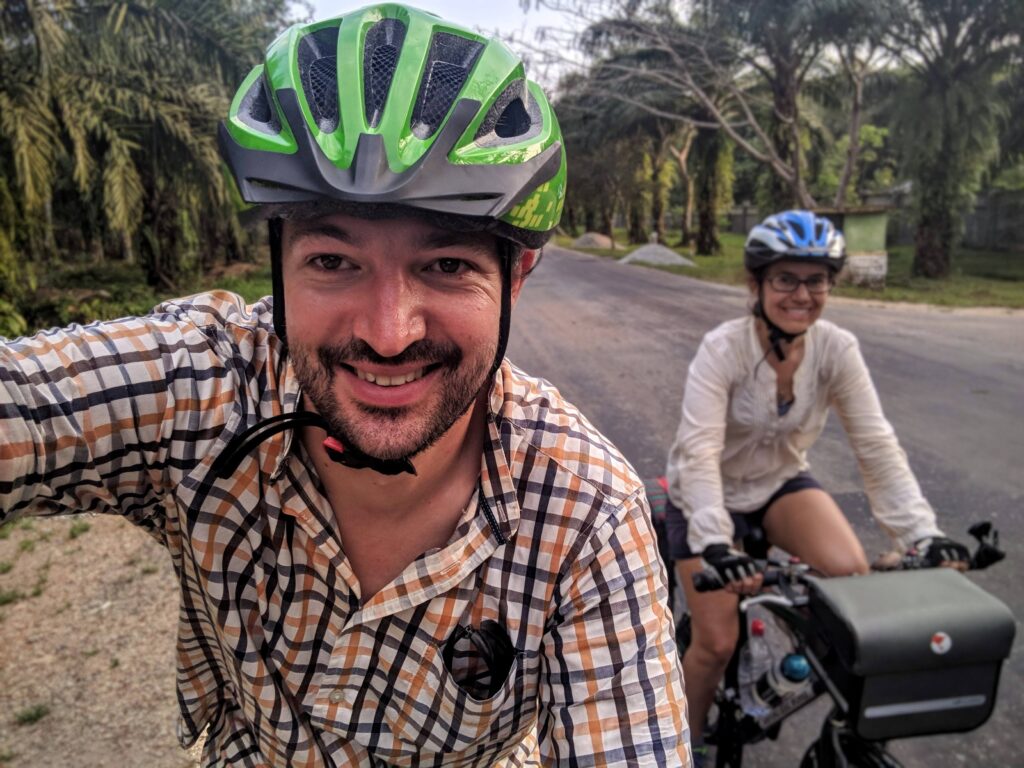
Gear-obsessed editors choose every product we review. We may earn commission if you buy from a link. How we test gear.
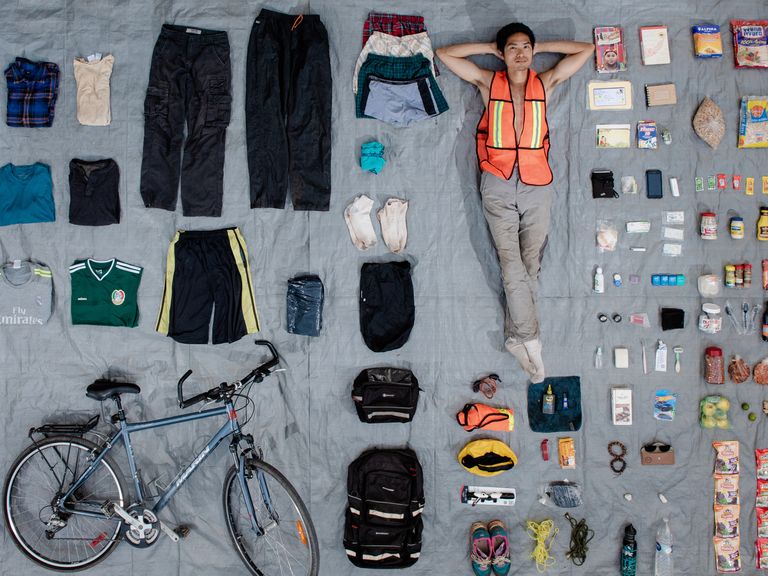
Check Out What These Cyclists Packed for a Long-Distance Bike Trip
From the practical to the sentimental, what we carry on the bike says a lot about who we are
Since 2012, I’ve been part of a global nonprofit community for cyclists called Warmshowers . People from all over the world sign up to offer free lodging and hospitality for folks who are traveling by bike. I learned about this group when I did my first long journey on a bicycle, from Playa del Carmen in Mexico where I live to Tikal, Guatemala—18 days and 1,400km. After that ride, I started opening my home to cyclists to learn more about long-distance bicycle touring.
After hosting more than 100 cyclists, and having three amazing long-distance bicycle experiences myself, I realized there are so many different ways that people set up their bicycles and gear for touring.
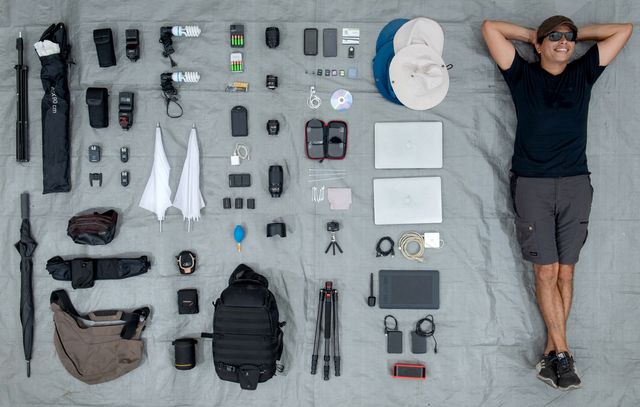
Using my photography, I wanted to show the different ways cyclists travel, what they carry, what is important for them and, most of all, I wanted to demonstrate how anyone can go places on a bicycle.
I started this photo project in February 2019. As a graphic designer and photographer, I liked how the grid format displays all the items in an organized way. I use a DSLR Nikon D750 with a 24-70 2.8 lens and two remote flashes. So far, I have photographed 22 participants. Here are 11 of them.
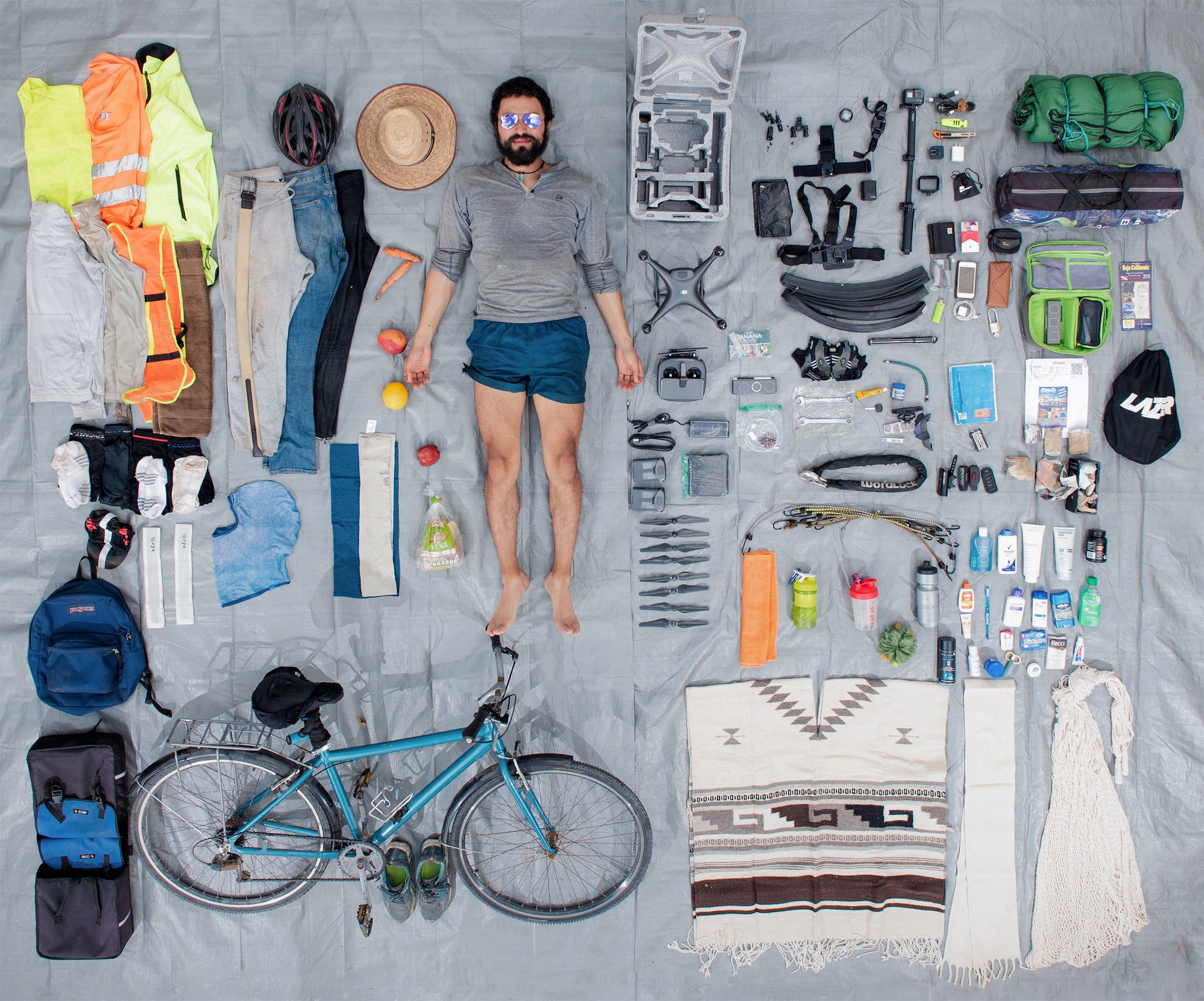
José Luis Osornio Ramírez
29 | San Luis Potosí, Mexico | Rides a seven-speed urban bike
I got the idea to ride Mexico end to end unsupported when I was on a ride in early 2019 and my gear cassette broke. It was Sunday afternoon and there were no bike shops to save me. I had to go home pushing myself on a skateboard.
My holidays were approaching, I had money saved, and the support of my family. Four weeks later, I got off the plane in Tijuana. I did not believe it. It seemed absurd and impossible. What am I going to do now? I wondered. I will pedal until I become sand that dries between the toes of Mexico.
Join Bicycling All Access for more tips and tricks!
In all the forums I read, the same advice was repeated: Travel light. However, I decided to travel heavy because I wanted to strengthen my legs. Everything was meticulously selected. I paid close attention to covering my skin. In order not to get sunburned, I wore two pants, clothes with UV50 protection, gloves, and glasses for hot days on the beach. Though I had never used saddlebags, they became a wonderful ally. My action camera was always at hand even though I didn’t use it very often. What fascinated me the most to use was the drone. When you reach the end of a road, the drone takes you further. I made it 5,000km from Tijuana to Playa del Carmen in four months.
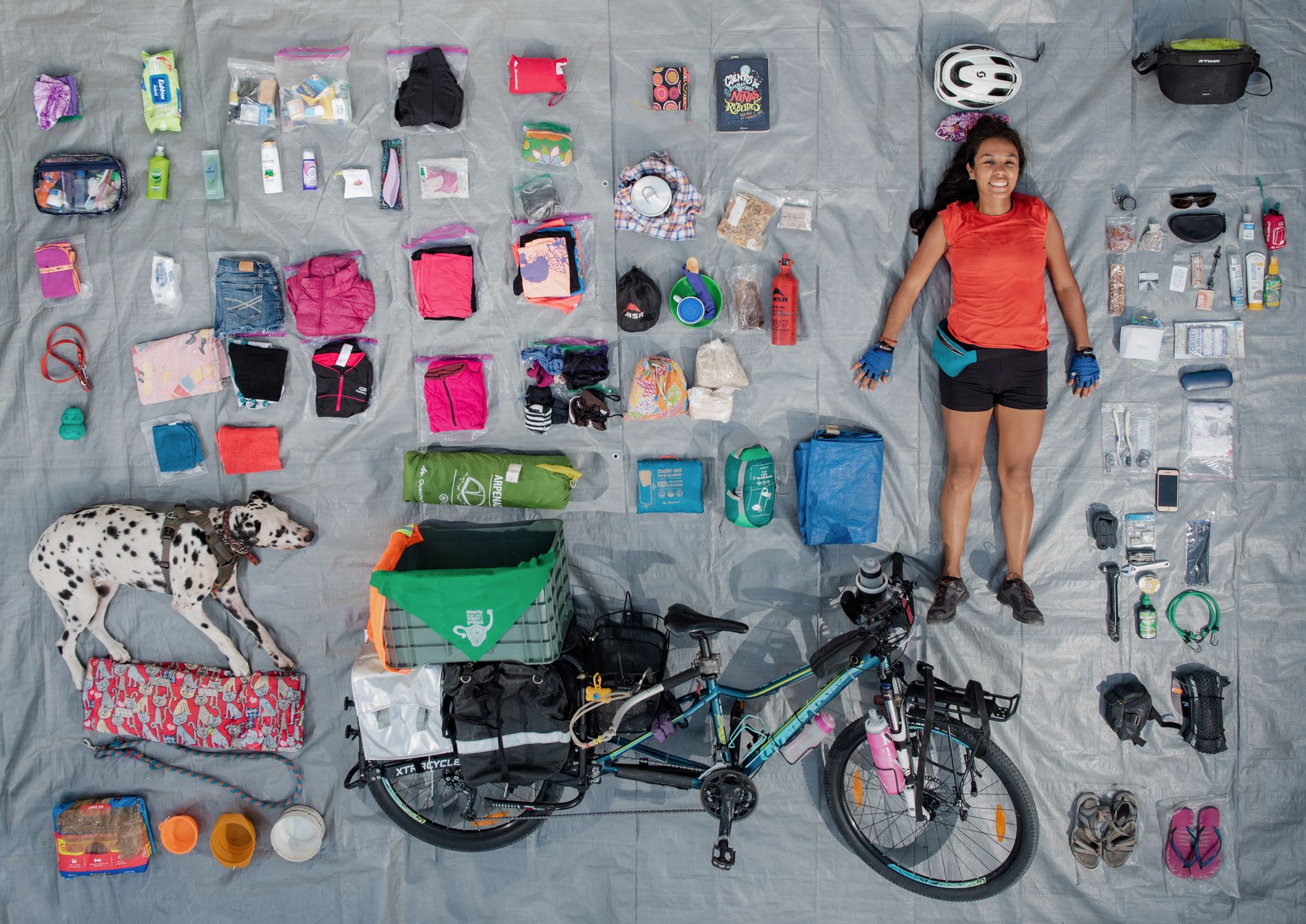
Abril Georgina Morales Rodríguez and Maku
40 | oaxaca, mexico | rides a giant liv tempt 29 v.
Traveling with my dog, Maku, has created a strong bond between us. It has been full of adventures that we have enjoyed and overcome together with patience, perseverance, and love. We started from Oaxaca, Mexico, in June 2018, and have traveled 2,500km so far. Our final goal is to reach Africa.
As a woman traveling without the company of a man in this macho world, sometimes it can become the worst experience when unknown men see you as a sexual object and believe they have the right not only to comment on your body, but to decide what to do with it. Fortunately, Maku and my strength—not physical but mental—have saved me in the most difficult situations. I’ve learned that I must never let my guard down.
I carry a photograph of me from when I learned to walk.

Two very useful items for me as a woman are my female standing urinal device and my menstrual cup. I also carry a children’s book, Good Night Stories for Rebel Girls , a green handkerchief in favor of women’s right to decide on our bodies, a photograph of me from when I learned to walk, and three photos of infants that I had in my charge while I lived 13 years in Africa.

Giuseppe Gemelli
41 | genoa, italy | rides a surly disc trucker.
I was not a cyclist before. I had a time with a little depression. I separated from my ex-wife, and this saddened me. Searching the internet, I found that there were people who traveled the world by bicycle. I found it incredible. So I bought a bicycle, and two months later I was at the top of the world in Prudhoe Bay, Alaska, with the dream of reaching the bottom of the world in Ushuaia, Argentina.
At first I didn’t know anything about a bicycle. Now after 18,000km I can say that the bicycle has blown my mind. It has been a great experience. Incredible. At first, I suffered quite a bit, especially my butt and my muscles. I was also afraid to sleep alone in Alaska with bears and other animals. Little by little I got used to it.
The bicycle has blown my mind. It has been a great experience. Incredible.
Each day was incredible, sometimes pure happiness and others crying like a child. This is what the bicycle gives you.
I really liked the ease of moving from one place to another without paying for gas or insurance. Or thinking about where to sleep. So many good people, they help you, they invite you to their home.
The Agata shirt is important because of a family bond. Agata is my niece; I take a photo with her shirt in places that are significant to me. I send them to my sister; they are making a collection.
A very important thing that I care for is the bicycle itself. It has all my things and takes me everywhere. I try to keep her well and take care of her as best as possible as if she were my girlfriend.
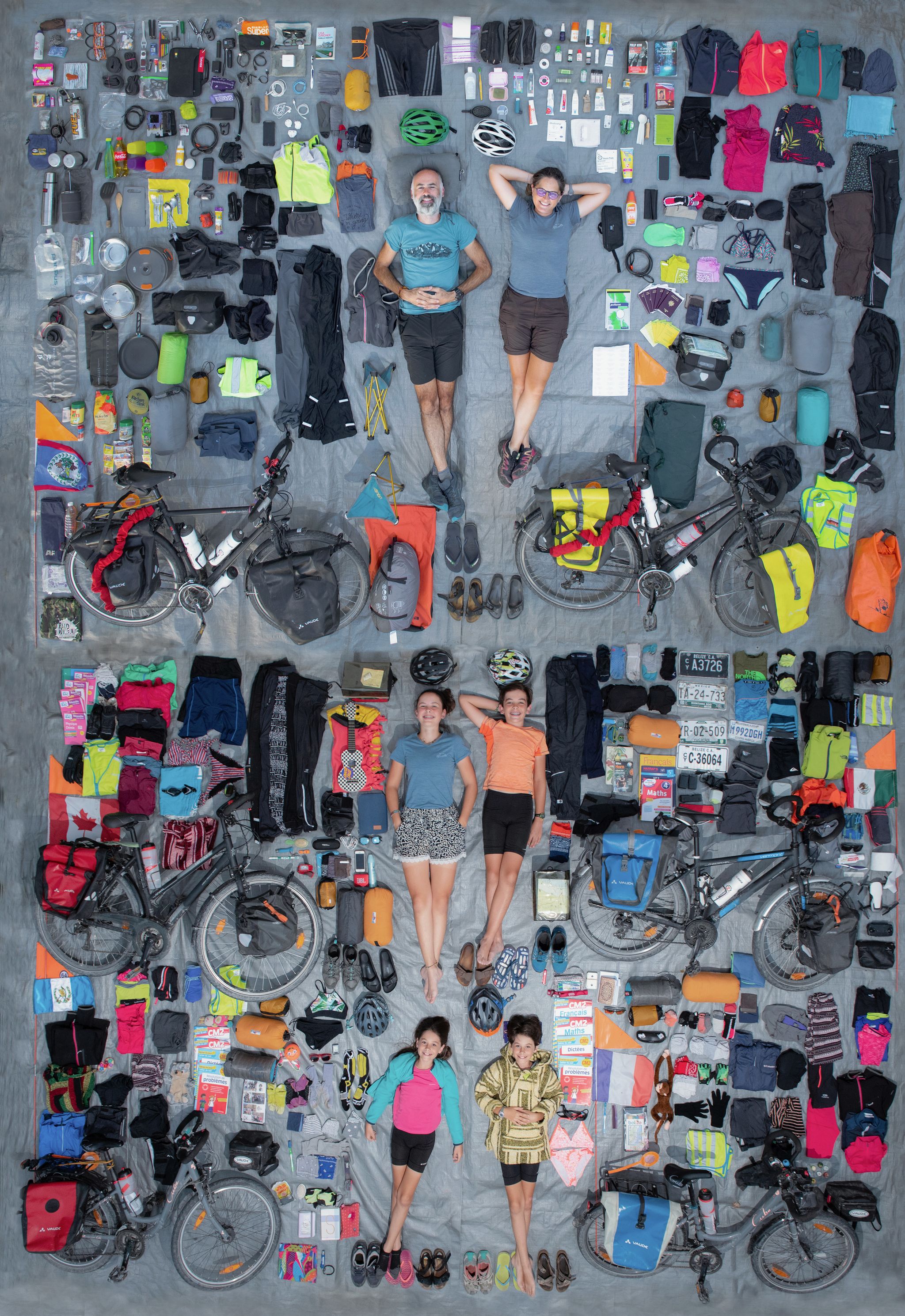
The Delgorgue Family
Jacques (43), pauline (42), élise (15), octave (13), solène (10), charlotte (10), marseille, france | ride a vsf fahrradmanufaktur t-700 (2), vermont 21-speed (2), cube 21-speed (2).
In August 2019, we cycled through the Americas for seven months with our four kids. We call ourselves 6 à Vélo (6 by Bike). We rode almost 6,000km through Canada, USA, Mexico, Guatemala, Belize, Cuba, and Chile. Through this adventure we discovered our children’s strengths and weaknesses, and they discovered who their parents really are. We met a lot of amazing people through Warmshowers, but also on the road, especially in Cuba. Many were living in poverty, but they were extremely generous. We want to model this generosity in our daily life.
Cycling is slow and cycling is tough, but this way of travel is so nourishing.
We had only basic and necessary equipment. To sleep: two tents, warm sleeping bags, and mattresses. To cook: one multifuel stove, two pans, one saucepan, six plates. To dress (each): three T-shirts, one long-sleeve T-shirt, two cycling shorts, one long cycling pant, one pair of trousers, rain- and cold-weather gear. We carried a drone, a GoPro, an iPad, and a phone to take pictures and make our film and blogs. Basically that’s it, plus medicines and spare parts for the bikes. The children also carried their school books and notebooks in their panniers. Cycling is slow and cycling is tough, but this way of travel is so nourishing. Now we can’t imagine traveling any other way.

33 | Zhongshan, China | Rides a Marin city bike
I had been working in Puerto Morelos, Mexico, and a coworker said that he just finished a bicycle trip from Chiapas, which is a little more than 1,000km away. I was interested in going to Oaxaca, which is next to Chiapas, and traveling by bike seemed like an excellent option. So I bought a bike.
I had fears and doubts but wanted to prove to myself that I could do it. As a beginner, I struggled to keep my stuff from falling apart, namely my rack and pannier bags. After getting those in order, I was happy with just the bare minimum. If I had to name one essential thing that made me happy, it would be my bivy tent. I had to use it twice when I couldn’t find accommodation; it kept a barrier between me and some angry dogs at a park!
As for the actual traveling part, I took pleasure from how simplified the days became. No complicated thoughts and a million things to do, only keeping those wheels spinning, satisfying that hunger and thirst with the simplest food, and finding shelter.
After a 120km day with not a cloud covering the sun, drinking a chilled cup of pozol with jalapeño was heavenly. I loved just living the simplicity and feeling the ups and downs of my emotions each day. But the greatest gift was becoming a part of a Mexican family by fate. I only planned to stay one or two nights, but ended up living and working the land and doing everything with them for a month. In the end I gave them my bike because I think they need it more than I do.
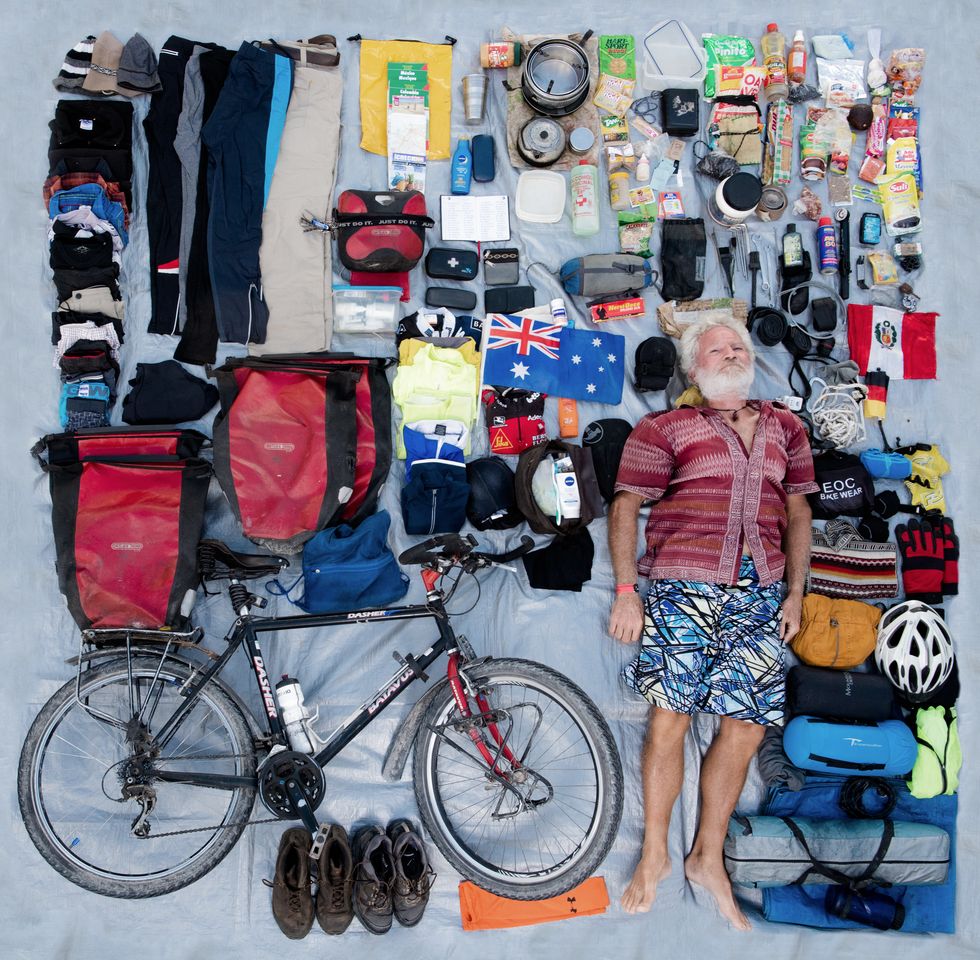
Detlev Swoboda
66 | perth, australia | rides a 25-year-old batavus dasher.
From 2016 to late 2019, my bicycle took me south from Brazil to Ushuaia, Argentina, then north to Alaska and Canada, covering 55,000km. My way of traveling includes a bit of comfort. And rather than speeding through the wonderful and interesting countries, I take my time.
I long for the freedom and solitude you can only achieve on the road.
Covering alpine to tropical climates, I need a good tent and two different sleeping bags. Another essential item is my Trangia stove which works with alcohol and is basically maintenance-free.
At the moment I’m waiting out the end of the travel restrictions so I can cycle from Germany to Australia. In my life, I have cycled approximately 115,000km around the world in all the different continents, starting my first journey in 1971, from Germany to Spain and back. Ever since then, I long for the freedom and solitude you can only achieve when you’re on the road exercising in the fresh air, experiencing foreign countries and cultures, and making new friends.
5 Great Touring Bikes

Co-Op Cycles ADV 2.2 Bike
Great price point to get up and get out.
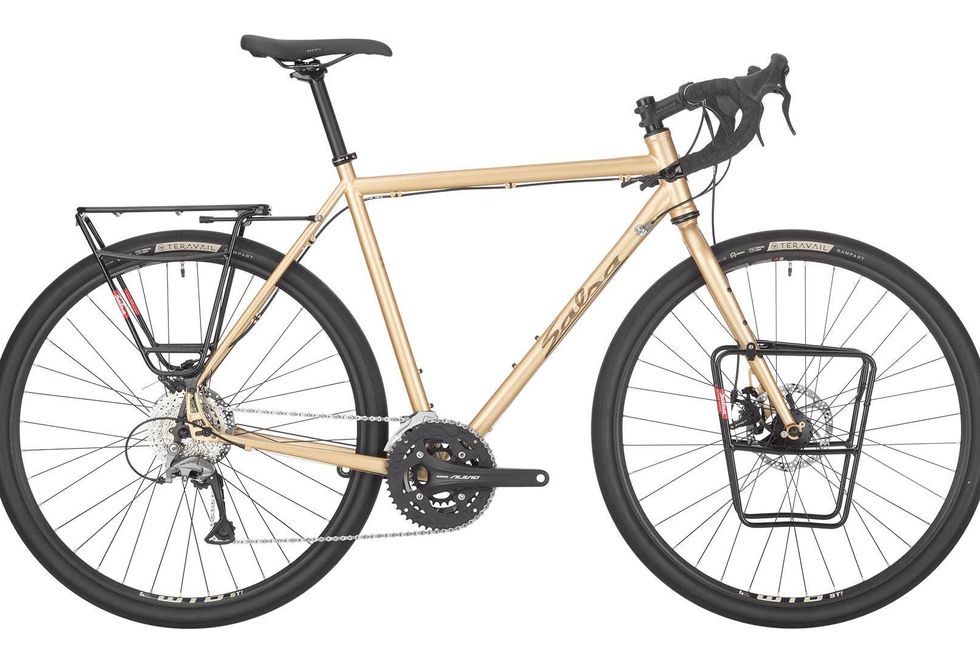
Salsa Marrakesh Alivio
Can be converted to a singlespeed.
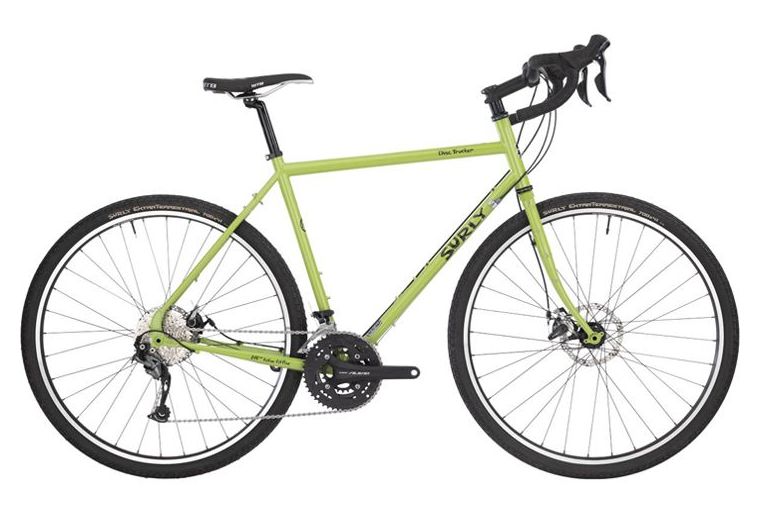
Surly Disc Trucker
Carry more gear with pack mounts on the fork.
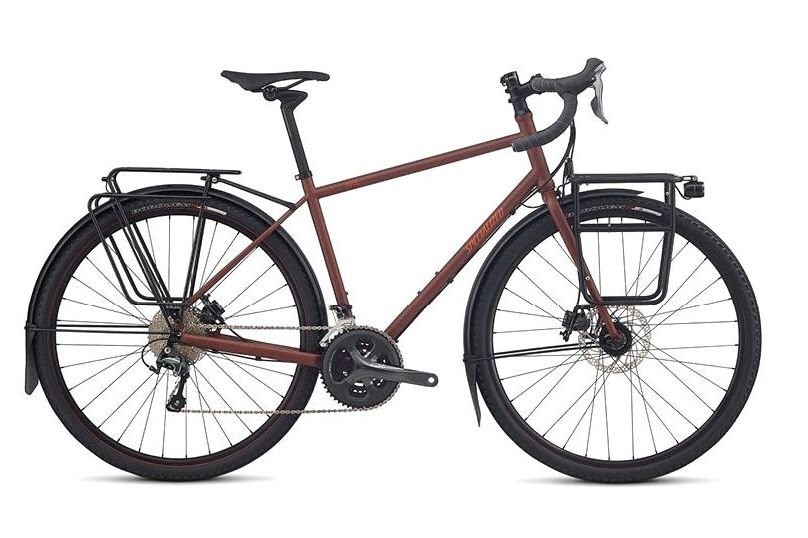
Specialized AWOL Expert
Integrated lights powered by a Dynamo hub.
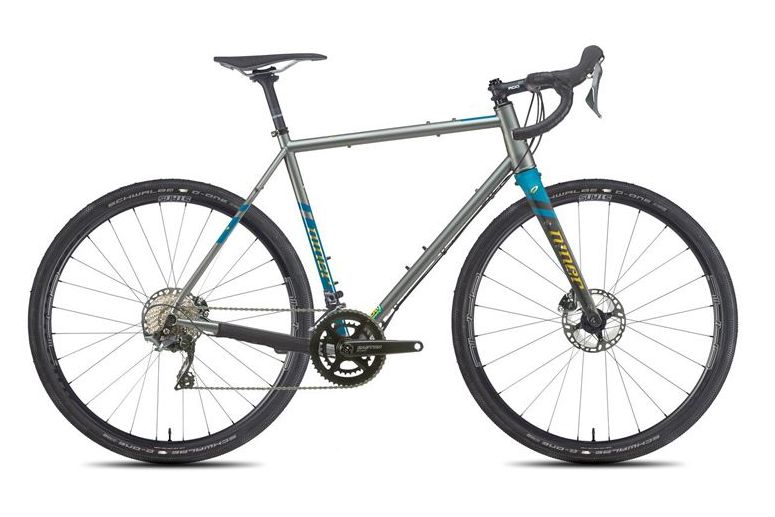
Niner RLT 9 STEEL
Massive tire clearance, and compatible with internal droppers.

Century Ride Tips for Success

All You Need to Know About Century Break Times

Why You Should Sign Up for a Sportive

15 Fun Bike Events in the U.S.

A Beginner’s Guide to Bike Touring

The Best Century Rides Across the U.S.

My Epic Bike Ride from Alaska to California

3 Must-Visit Trails and Routes in Puerto Rico

11 Tips for Conquering Your First Group Ride
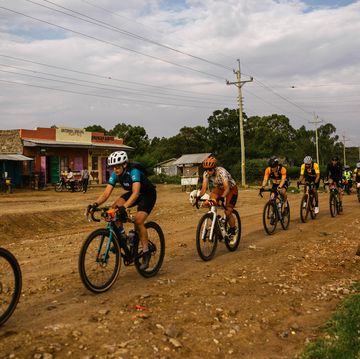
A Gravel Race Like No Other
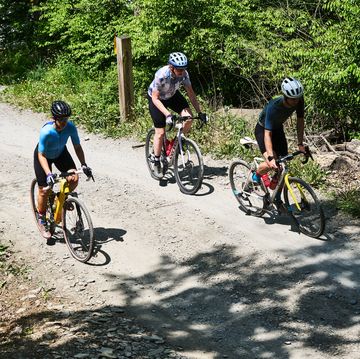
How to Plan a Century Ride Route

How to Tell if You’re Ready for a Century Ride

How to prepare for long distance cycling: tips, training, what to eat + more
If you’re planning some long distance riding for the first time, then this article is for you.
Cycling for a long distance requires preparation; you’ll want to do some training, get set up properly and think about practical matters like food, hydration and where you’re going to ride!
From how to set goals and put a training plan in place, to how to prepare your bike for a long ride, the kit you’ll need and what to wear, it’s all detailed right here. The tips you’ll read for preparing for long distance bike riding are based on the hard-won knowledge we’ve gained over our years of riding, cycling abroad and taking part in long distance events.
Read on so you can be all set for the long distance cycling challenges that await!
1. Define your long-distance cycling goal
The first of our long bike ride tips is to set a goal. Like all objectives, it’s best if this is SMART – Specific, Measurable, Achievable, Relevant, and Timely. Where exactly do you want your riding to be and when? Is this realistic? How will you measure your progress along the way?
What long distance means to you
When we talk about cycling and distance, what qualifies as long distance? To someone just starting their cycling journey, 20 miles may seem like an average cycling distance for beginners to aim for. An intermediate cyclist might cope with 50 miles, while a more experienced cyclist may manage 100 miles without too much trouble.
Cycling sportives tend to range between 50 and 150 miles. So you’ll need to be an intermediate or advanced level cyclist to cope with one of these. If this is your long distance cycling goal, then you may need to work towards achieving this fitness level.
You may also have heard of ultra distance cycling. We tend to think of this as a ride of over 100 miles, or a century, but the World Ultracycling Association – cite a longer distance of 125 miles or more. Probably best to work up to riding ultras!
Choose somewhere inspiring
Of course, we’re biased, but choosing an awesome location or event for your big ride can really help with motivation while you’re training and preparing. Our inspiration or destinations pages make a great start.
How are you going to achieve your goal?
Do you need to add in some intermediate objectives on the way? It can help to write your goal down, tell your friends and family or even commit to achieving it with someone else. These things can make it more likely you’ll actually do what you say you’re going to do.
Will you need help to achieve your objective? What time have you got to dedicate to it? Do you need any equipment like a power meter ( more on power meters here )? Might you need a professional to guide you – a coach who can help you create a training plan perhaps ( more on coaching in this article )? These are some of the things to think about when planning out the “how” part of achieving your objective – read on for more.
2. Train for long distance cycling
Having a training plan is a top tip for having a long distance cycling objective that succeeds.
Following a structured plan that works towards the goal already set ensures you’ll get the most out of your more prolonged rides.
If you have a plan in place when preparing for a long bike ride, your overall level of fitness will improve. You’ll be able to ride more quickly and efficiently while maximising your chances of performing well. This all means you can enjoy your sportive or cycling holiday to the full too.
We’ve got so much to say on the subject of training for long distance rides, that we’ve written this separate article on the subject of long distance training . Enjoy!
3. Check your bike is suitable for long-distance cycling (with a good saddle!)
Get a bike fitting.
Another of the key cycling tips for long rides concerns your comfort. An uncomfortable ride is never pleasant. Any discomfort is also likely to hamper your performance and may even lead to injury.
If you’re preparing for long distance cycling events, it’s a great time to get a bike fitting. Arranging one can pay dividends. You can be sure of riding the right size bike – and sitting on the most comfortable saddle possible.
A professional bike fitting can ensure the best size bike, and tailoring your position to suit how you ride. It can also improve your power output, and even reduce your risk of injury.
Having a bike fitting at the early stages of your long distance training also means you have more time to adjust to any changes – in advance of tackling any long distance cycling events you have planned.
Picking out a comfortable, supportive saddle is paramount when it comes to how to bike a long distance successfully. Though it’s very much a matter of personal preference, ideally the saddle should feel like a natural extension of your body.
A professional saddle fitting can form part of a general bike fitting.
Things to look for include the shape of the saddle. An endurance saddle is typically V-shaped, with a shorter nose than the average road bike saddle, and rounded edges.
Finding a gender-specific fit can play a part. Women’s saddles are typically shorter in the nose than those of their male counterparts. Any channel or cutout will be shaped to fit the male or female anatomy.
Finding the right shape and level of padding can also be subject to a bit of trial and error. So buying a good saddle in advance of your challenge gives you plenty of time to get it right if you do feel that improvements could be made!
If you’ve been training towards a big ride, the last thing you want is for your bike to suffer a mechanical which means you can’t complete it. It’s a good idea to schedule in a service a few weeks before your goal ride/event.
4. Wear the right clothes
Clothing is another thing to think about when planning long distance cycling. What to wear will vary depending on whether you’ll be riding in spring , summer, autumn or winter. Items you may not have thought of, for example, could include a neck warming buff, arm warmers, a gilet and windproof items such as jerseys or gloves.
Where you’ll be going for your cycling holiday or taking part in a sportive will also play a huge part in what to wear. You’re going to need different clothing for the French Alps than for a tropical island, for example!
Weather forecast
Which brings us neatly onto the weather forecast. What are the skies likely to have in store? This will depend again on the destination – and the season. One of the key factors when planning how to ride long distance cycling is to dress appropriately and be prepared for inclement conditions. (We share our favourite weather forecast app in this article !)
Cycling shorts are classic riding apparel for a reason. A good pad is key to an enjoyable long ride. Shorts reduce friction when in the saddle, and the streamlined shape makes the rider more aerodynamic. Cycling shorts are also very flexible, and can even help to keep the muscles compressed.
Chamois cream
Chamois cream can be applied directly to the skin, or to the inside of your cycling shorts. It’s applied to the areas that come into contact with the saddle to reduce friction. This turn will improve comfort, which for a long ride is even more important! It’s certainly one to consider for your list of long distance cycling essentials.
Wearing the right cycling shoes can really enhance your comfort level on the bike. Not to mention improving your performance. Whether to go for velcro straps, laces or dual dial fastenings is personal, but we’d say always invest in the best cycling shoes your budget will stretch to.
Go for the best quality and fit you can
Our advice for long distance cycling is not to skimp when it comes to clothing and accessories. A good fit and technical fabrics can make a world of difference, wicking away moisture and ensuring continued comfort. We love the Stolen Goat range and always recommend it.
Know your kit
No one we’ve ever met would advise riding a long way in a brand new, untested piece of kit. So if you’re planning on an upgrade, do it well before the big ride!
5. Bring the right kit
Once your big day gets closer, it’s time to think about your long distance cycling checklist for packing . What you’ll take along depends on whether you’re taking your own bike, or hiring one.
The clothing you’ll pack depends on how long you’ll be away and the climate. You’ll also need casual wear for when you’re off the bike. Plus any personal items, electronics and documents for your trip.
Water bottle(s)
How many water bottles will you need and how big should they be? You should be taking a few sips every 10 to 15 minutes.
For a long ride, you’ll certainly want two water bottles with you. If it’s going to be hot, it’s also worth finding out in advance where you can refill these along the way. Size-wise, you need enough to keep you hydrated between refill points – but not overly heavy bottles that will weigh you down. We tend to do long rides with two 750ml bottles.
There are certain tools you’ll need to take along on long distance cycling trips. Rear pockets in your jersey and/or a saddlebag are the best places to carry these – which you choose is a question of personal preference. Some people hate riding with full pockets. Others hate the look of a saddlebag and are happy to put up with bulging pockets instead!
Items to include are repair patches and inner tubes, a pump, lightweight plastic tyre levers, a quick release chain link and a multitool.
If you’re riding in a group, don’t be the one that relies on everyone else to bring the tools they need. Trust me, they’re never popular!
Phone (and apps)
Make sure your phone is fully charged before setting off. If you use the GPS, this will use a lot of battery life, so you may need a power pack too – or get a cycling computer instead so you don’t use your phone for GPS.
In case of emergencies, protect your phone from the elements and add an emergency contact number.
Don’t forget to load/reload any cycling apps you might want to use, in advance of your epic ride.
How are you going to plan your route? If you’re using GPS, do be aware that this will drain your phone’s battery very quickly. A paper map is always a good back-up in any case. It could get you out of trouble if technology fails! This articles contains our tips on route planning .
You might need cash or a card for a cafe stop, a full meal or even a taxi ride if you do get stuck, so don’t go without packing some cash and/or a card!
6. Get your nutrition right
While one of the benefits of long distance cycling can be weight control, it’s also critical to eat and drink properly. We’ve got a whole article dedicated to nutrition, but here are a few of the main points to consider.
What you eat and drink
Drinking regularly as mentioned above is important – and in advance of the long ride too.
You don’t have to load up on carbs in advance of the ride. Light protein such as fish or chicken plus rice, pasta or potatoes makes a perfect meal. A breakfast of porridge or omelette is also ideal.
While you’re on the road you’ll also need to take in nutrition. Gels and bars are ideally suited to on the go refuelling. We suggest taking along a mix of types, such as natural, sugary, protein-packed or caffeinated snacks (read this article for the low down on the best snacks for cycling ). You’re riding a long way; eat good stuff, it will fuel you for your ride and it’ll have benefits for your mind-game too (more on that below).
When you eat and drink it
There are lots of different strategies for when you eat. Some people like to program exactly when they’re going to eat. Some like to wait until they are a bit hungry.
If you opt for the latter, just don’t wait until you’re too hungry – it might be too late and you’ll already be well on the way to running out of juice!
Most cyclists agree that it’s best to eat a little and often. But again, this is another thing to practice in training.
7. Ride well
Completing a challenge ride is not just about raw fitness. Things like pedal stroke and pacing make a big difference too.
Pedal efficiently
Once you’ve had that bike fitting, another of the pro long ride cycling tips is to perfect your pedalling. It’s all about the position. Your knee should be above the ball of your foot when the pedal is at three o’clock, with the knee slightly bent when it passes the six o’clock mark.
Pace yourself
Like long distance running, long distance road cycling requires you to pace yourself. Practice makes perfect here, so working on this is something to add to your training schedule. Don’t go off too hard!
Be effortless
The French call it “souplesse”, the Italians call it “sprezzatura”. The nearest English-equivalent is probably elegance. Your aim should be to be smooth, graceful and effortless on the bike. Not only will it mean you don’t waste energy, but you’ll look good too!
Don’t waste time
Don’t get me wrong, photos and coffee stops are important, but if you’re on a long ride, you should always have one mind on the clock. If you’re riding an event, know when your cut-off times are; know when dusk is going to fall and how far it is to where you’re staying that night. Don’t waste time faffing around, queuing unnecessarily or taking your millionth photo if you don’t have time and you’ll regret it later. Remember the bigger objective!
8. Use your brain
Cycling is both a physical and a mental game. Often a cyclist’s head will give up before their legs do. So a bit of self-belief and a good dollop of determination go a long way.
Half way through your first mega ride, you might start to wonder why you embarked on this crazy plan at all. “Remind me, why are we doing this anyway?!” It would be surprising if you didn’t have that thought at some stage!
If you’ve picked right, your ride will be hard, you will get tired, you will get hungry. But if you can accept and deal with that, then it’s all part of what will make your ride the incredible adventure and challenge you were looking for.
Play mental games
Good preparation can be a big part of winning the mental game. If you know your route really well, if you know your elevations, where you’re going to stop, where you’ll be able to rest your legs on a long downhill – and so on – this can really help you feel you’re going to be able to complete the challenge ahead of you.
Some cyclists like to break up a long ride into chunks. Perhaps based on where they’re planning to stop for a break or food. This can make what seemed like a huge distance at the start of the day, much more manageable.
Another good tip if you’re feeling negative is to think about all the hard rides that you’ve completed previously and all the training you’ve done to be on this ride. This can be a major motivator.
Benefits of long bike rides
It can also be helpful to remember the physical benefits of long bike rides!
Cycling is typically a good idea for your body. The exercise strengthens your heart and other muscles, reduces fat levels within the blood and lowers your resting heart rate. Cycling can also improve coordination and balance.
Long distance cycling on a bike can build on this. Endurance riding can also make for a more efficient aerobic energy system as your fitness levels improve. This enhances your chances of completing a race – and performing well.
Other long distance cycling benefits include improved mental health, effective weight control, a stronger immune system, better brain power, and more satisfying sleep.
Keep thinking while you’re riding
When the going gets tough, don’t switch off your brain. It can be worth having a regular check through a list of points to ensure you haven’t zoned out of the important things that will let your body keep going. For example
- Am I hungry? Am I thirsty?
- How far have I gone? How far have I got to go?
- Does anything hurt?
- Am I going too fast? Could I go faster?
9. Other practical long distance cycling tips
Boring but true – don’t forget to check the rules of the road for wherever you’re riding.
And if you’re going abroad to ride, check current government advice for the country you’re going to. Also make sure you have insurance cover , and take a look at the weather forecast before booking.
For more tips on how to plan an overseas holiday, read our full article on planning a cycle holiday .
Our tips on solo cycling trips might also be useful.
Preparation for long distance cycling is key to success. Getting your clothing, kit and bike just right can be every bit as important as putting a training and nutrition plan in place.
But with a little forward planning, preparing for a long cycle ride doesn’t have to be difficult. It can even be fun!
We hope this article has inspired your long distance ride preparations. Do share your tips below!
Please support Epic Road Rides
A huge amount of time and effort goes into the article you’ve just read, all with the aim of helping you!
If you found what you’ve read useful, I’d really appreciate it if you dropped something in the tip jar here .
It’s a way you can say thank you and help us carry on creating top quality content with no annoying ads and no pay wall.
Leave us a tip here!
Got a question for Clare?
Fill out this form and we will send it to Clare. We aim to get you an answer within 24 hours wherever possible!
We will use this info to send the enquiry to Clare and/or their team. Our privacy policy explains more and here’s a reminder of our disclosure policy and terms and conditions.

Clare Dewey is a cyclist with a passion for travel. She set up epicroadrides.com in 2018 to help make it easy for cyclists to explore the world by bike. Today her mission is still inspiring cyclists to discover new places on two wheels – and doing what she can to make sure they have the best possible time while they’re there. Clare has visited 50+ destinations around the world, many of them by bike.
The contents of this website are provided for general information purposes only. It is not intended to amount to advice and you should not rely on it. You should carry out your own due diligence and risk assessments and take professional advice. Views expressed by interviewees or other users of this website do not necessarily represent our views. We make no representations, warranties or guarantees, whether express or implied, that the content on our website is accurate, complete or up to date. If you use any information or content on this website, download from, or otherwise obtain content or services through our website, it is entirely at your own discretion and risk. Epic Road Rides Ltd disclaims all liability and responsibility arising from any reliance placed on the information and content on this website. Find out more here .
One Response to “How to prepare for long distance cycling: tips, training, what to eat + more”
Mesmerizing piece, great job!
Leave your comment
Click here to cancel reply.
- Name (required)
- Mail (required) (will not be published)
This site uses Akismet to reduce spam. Learn how your comment data is processed .
How to ride longer distances
Riding longer distances is a true feat of endurance but it takes time, energy and preparation. we spoke to two canyon riders who know all about it: emily chappell and james hayden..
Every rider remembers their first 100 km and initiatives like the Rapha Women’s 100 have encouraged many cyclists to take on the annual challenge. Knowing your legs and bold determination have carried you such a long distance gives a sense of accomplishment that is unmatched. If you’re yet to spend longer than a few hours in the saddle, you needn’t be put off. Long distance cycling requires not only fitness but also tactics and planning.
Long distance bike rides require high levels of endurance built up over a period of weeks, months or even years for ultra-distance rides. The best method of increasing your endurance is the one that works for you. Everybody’s different, so you’d be wise to figure out what works for you and go at your own pace.
If there are two people that know more than most about riding long distances, it’s Emily Chappell and James Hayden. Both riders have won the Transcontinental Bike Race which is a 4000 km ride across Europe. While Emily continues predominantly with long distance road cycling, James has jumped into the world of long distance mountain biking and gravel racing , too. We asked both of them for their tips for getting on your bike to ride longer distances.
What is long distance cycling?
The definition of what actually constitutes a long-distance bike ride is open to discussion. What’s categorised as long distance for one person can be considered relatively short for the next. For the purposes of this article, we’ll be referring to rides longer than 100 km.
How to increase your distance:
Nobody goes from 0-100 km+ overnight. Like most other things, it takes practice, trial and error, and time. Emily Chappell’s odometer means she is a real expert in this field so she’s given us a few of her long distance cycling tips that have enabled her to conquer her cycling dreams.
The most ambitious projects start small and long distance cycling is one of them. If you know you’re capable of comfortably riding 70 km then try adding 10 km to that distance over the course of a couple of weeks.
“I always try to stretch further and further from home seeing more wonderful locations and routes,” says James Hayden who is applying this exact mentality to his new home roads in Girona, Spain.
After the winter months, you’ll want to ease yourself into it to get a feel for your current fitness. As daylight increases and the mercury rises, it becomes easier to ride for longer. Sign up for cycling events including sportives and races or even scout out your local audax or randonneuring club. Randonneuring is a form of ultra-distance cycling - a discipline steeped in history and tradition around the world.
“A super randonneur award (200 km, 300 km, 400 km, 600 km in one season or year) is a good way of creating stepping stones throughout the season,” says Emily. “I also like to book in visits with friends and family who live a requisite distance away.”
One of the easiest mistakes is to be a little too over excited at the very start of your ride and blow up halfway around because the pace was just a little too spicy for you. We’ve all learned the hard way, but you can avoid making this mistake from the moment you set off.
If you’re planning to ride for 8 hours, make sure you save some energy for later on in the day. It’s easy to get swept up in the excitement of others at the start of an event but if you focus on yourself and ride well within your comfort zone at least for the first half, you can push on for the final part of your route when you know you’re getting closer to home.
“I’ve discovered (over many years and thousands of miles) that I ride best in the morning, slow down in the afternoon then perk up again after sunset,” reveals Emily though she confesses that it’s easier when riding alone when you don’t have others to whom you invariably end up comparing yourself. “Try taking a longer view and think about how much progress you make daily rather than whether you’re falling behind in any particular moment,” she adds.
Riding long distances means you’re out and about for hours or days at a time. Some people prefer to ride alone but for others the motivation and company of fellow riders can help a great deal in persevering when the going gets tough.
“It makes a huge difference knowing that you have a cohort of people who get it,” concludes Emily. She points out that these people can exist both in real life or within your mind, the latter she explains: “I call this my invisible peloton and when a ride gets really hard, I sometimes imagine they’re riding around me or ahead of me to take me in the wind. This is one of the reasons why social media can be such a lifeline on long rides - it helps you feel less alone.”
Finding someone else who has the same goals as you will work wonders for helping you reach your long distance targets.
When riding long distances, you’re likely to ride into territory you won’t have covered before but this is no bad thing. “I find that riding through new areas makes some rides go faster as my senses are overloaded,” explains James, referring to the constant buzz of discovering new people and places. “Do your research before the ride: look for new, interesting areas and also determine the terrain, services available and potential weather,” he advises.
Emily echoes many of his sentiments but highlights the different types of events will dictate your route. “If it’s a race, you’ll want the shortest, flattest route between A and B. If you’re out for an adventure, I’d recommend giving yourself as much time as possible to allow for detours and quieter roads,” she suggests. “My favourite discoveries have always been the ones I wasn’t expecting!”
Apps like Strava , Ride With GPS, Komoot and Epic Ride Weather are essential for people planning their next great escape.
What to eat during a long bike ride
It’ll come as no surprise that riding long distances also requires adequate fuel to get around. If you don’t provide your body with enough energy, you will “hit the wall” so to speak. This occurs when your body is hypoglycemic (low in blood sugar).
The most important aspect of fuelling is figuring out what works for you. No two people are the same and what works for one person may not work for you. Eating while cycling for hours at a time can put your body under a lot of stress, so it’s important to try different foods at different times of the ride.
Carbohydrates, fats and proteins all have their place in the human diet, however there’s a lot to be said for eating what you crave while riding long distances. Importantly, don’t forget to stay hydrated. Not only is this vital for your health but it also keeps you more alert when you’re tired.
What to wear on a long distance ride
Comfort should be high on your list of priorities when riding your bike a long way. If you’re not comfortable on your bike then things will turn sour pretty quickly. Kit can sometimes take quite a while to break in and it also takes time to figure out which items work best for you.
“Research and advice will only get you so far because everyone’s anatomy and riding style is different,” explains Emily. She acknowledges that indoor training can work wonders on your fitness but for kit, there’s good reasons to venture outdoors. “You need to put your kit through all the horrible conditions you might experience during your challenge. As a general rule, I set myself the deadline of making no new kit decisions within a month of the event,” she insists.
Important pieces of kit to test for long distance cycling include cycling shoes, bib shorts, gloves and upper body layers such as jerseys, base layers, gilets and jackets. Find out what’s comfortable for you regarding the kit combinations that will survive rain, sun and everything in between.
What to take on a long distance bike ride
Just like any other bike ride, you should take a repair kit that includes one or two spare tubes, a pump and tyre levers. If your ride ventures into more remote territory, a spare derailleur hanger and a couple of spokes won’t weigh you down and could save your bike ride from disaster. You’ll need a multitool and a spoke key for any roadside repairs. Another useful tool is a chainbreaker (sometimes included on many multitools) and a couple of quicklinks. Broken chains are fairly common especially off-road, so don’t be caught out.
If you’re out for a whole day or longer, a battery pack and the relevant cables are useful for charging lights, a GPS computer and your phone. The last thing you want is to be lost in the dark with no phone battery! You can easily stash these essentials in a frame bag for easy access but it’s good to keep your electricals in a waterproof dry bag just in case the weather turns unexpectedly.
Finally, a credit card can be useful for getting yourself out of unfortunate situations. Keep it separate to your other money in case you lose your wallet or it gets stolen.
Best bikes for long distance rides
Depending on the terrain, the best bike is also the most comfortable. Typically, the geometry of endurance bikes is more relaxed and less aggressive than other road bikes. Bikes like our Endurace are designed for going the distance on the road thanks to a lightweight frame and an ergonomic riding position.
For long distance off-road exploits, the Grizl is a clear winner for multi-terrain gravel riding over hundreds of kilometres. It’s set up for carrying all your gear and is the reliable friend when you’re seeking off-grid adventures.
James Hayden rides an Exceed mountain bike for long distance rides across harsh, rocky terrain like the Silk Road Mountain Race, Atlas Mountain Race and in training.
Where will your bike take you?
Now you’re equipped with everything you need to know, it’s time for you to ride off into the sunset. Which long-distance adventure will you take on? Make sure you tag us in your photos on Instagram!
The phone number you entered appears to be invalid:
Did this article help.
Thank you for your feedback
Related Stories
- Skip to primary navigation
- Skip to main content

Cycling Road
How to Prepare for Your First Long-Distance Bike Ride
Planning for your first long ride is exciting. Knowing what to bring and how to prepare your bike will give you more confidence going into your first long ride. As long as you know that you are prepared to fix minor problems, you can focus on enjoying – and finishing – the ride rather than worrying about things that could go wrong.
In this article, we’ll take a look at items you’ll want to bring on a long ride and how to prepare your bike and yourself for the ride. We’ll tell you how to pack them, too. And lastly, we’ll take a look at some extra items if you’re planning on an ultra-long ride. Let’s get started.
How Long is a Long Bike Ride?
The answer depends on how experienced you are as a cyclist. If you just got started cycling, maybe 50 km or 30 miles is hard and you might need to bring snacks for the ride. For experienced cyclists, a 100 km or 60-mile ride might not be too hard so they only bring two bidons and some cash with them.
It also depends on how far away you are going. If you ride 100 km within the city, you won’t probably need to bring spare tubes and a pump with you since you can go home easily. If you ride 50 km to a remote area, you definitely want to bring extra supplies with you.
Basically, if it’s outside of your comfort zone, you will want to be extra prepared. And it’s better to be overprepared than not.
Table of Contents
- What to Bring on a Long Ride
How to Pack Your Gear
- Additional List for an Ultra-Distance Ride
- How to Prepare Your Bike
- How to Prepare Your Body
What to Bring on Your Long Bike Ride

If you’re going for a long ride, you’ll definitely want to bring along the following items.
Two bidons . Never ride without hydration! You should be drinking 1 to 2 bidons per hour, so if you ride more than two hours, plan some stops in your ride to refill them. You can also fill one of your bottles with plain water and the other with electrolytes.
Some people prefer having one large bidon and using the other bottle cage for storage. That’s okay too, but if you have a small bike frame it can be difficult to take and put the bidon back in the cage when you’re on the road.
Tubeless tire plugs . Tubeless tires will reseal if you get a small puncture. For a large puncture, though, you’ll need some tubeless tire plugs. They come in small packages that are easy to pack on your bike or in your jersey pockets.
Spare inner tubes . Even if you run tubeless, bringing spare inner tubes is a good idea because sometimes they can fail to seal the hole. If you use clinchers, make sure you bring more than one tube. Using TPU inner tubes can save some space, but they can be tricky to install.
Tire patch kit . Patch kits are useful if you run out of spare tubes. They take up almost no room, so always bring some of those along. Self-adhesive patches are the easiest to apply when you’re out on the road.
Three tire levers . Even if you can take off your tire at home without them, it’s still a good idea to bring tire levers on the road because your hands might be tired from the ride. You need at least two levers, but if your tire is new or hard to take off, bring three tire levers in case you break one of them.
Tire boot . A tire boot is a heavy piece of paper or cotton that goes inside your tire if it gets a long slice. If you leave the hole open, the inner tube will get pinched and blow. Some people use dollar bills, duct tape, snack packaging, or dry leaves as a tire boot in a pinch.
Mini pump or CO2 pump . A high-quality mini pump is a valuable asset on a long ride. Cheaper versions will work, but you might spend all day pumping up your tire! You can choose to attach it to your frame or fit it inside your saddle bag. Many people prefer to use a CO2 inflator, if you’re one of them, bring along a nozzle and a couple of mini CO2 canisters. If you’re not experienced in using CO2, bring more canisters.

Multitool with chain splitter . Always bring your multitool, even if you don’t know how to use it. If you have a mechanical, you might be able to fix it with your multitool – or flag down a passing cyclist who can. Even if you don’t have a mechanical, you might need some minor adjustments to your seat or bars if you have pain on your ride.
Choose a multitool that has a chain splitter on it. If your chain breaks, this will make it possible to fix it on the road.
Chain quick link . The chain splitter is useless if you don’t bring a quick link with you. Some multitools have hidden storage for quick links, but I personally don’t use them. Make sure your chain links are stored in waterproof storage because they get rusted very easily.
Energy gels or bars . To fuel your ride, you should be taking in 30 to 60 grams of carbohydrates per hour, which is around 120 to 240 calories. So make sure you pack enough energy gels or bars for your entire ride.
Sunscreen . If you’re going to be gone for a few hours or more, you’ll need to bring along some sunscreen so you can reapply it to protect yourself from sunburn and skin cancer. Most sunscreens last up to two hours, or less if you sweat a lot.
You can also bring sun protection clothing if you prefer to reapply sunscreen multiple times.
Warm and waterproof layers . The weather during spring and autumn can be totally unpredictable, so you’ll want to pack (or wear) some extra layers if it’s cool. Consider wool for warmth and a packable raincoat to keep you dry.
Headlight and taillight . You should always have these with you, not just for long bike rides. A headlight and taillight will make you more visible to passing motorists, helping you to stay safe on the road. If you plan to ride at night, make sure to have at least 600 lumens on your front light, or brighter if you’re outside the city.
Cash and mobile phone . So bring along some cash in case you need food, water, or other items. And don’t forget to pack your cell phone so you can call for help or an Uber or just take pictures for bragging rights.
You’re probably wondering how to pack all of these goodies on the bike. Here are a few ideas to help you safely stash everything you need.
In jersey pockets: A jersey with good pockets is a great place to pack some of your most essential items: your mobile phone, money, ID, keys, and energy gels. Also, if you need to, you can stash your mini pump in a jersey pocket, especially if it can’t be mounted on your bike frame or packed in your bags.
Saddle bag: A good saddlebag can fit a lot of items. It’s a good spot for your spare tubes, patch kit, tubeless plugs, tire levers, tire boot, multitool, and quick link. Pack your items carefully so that nothing rubs or puts a hole in your tubes.
Handlebar or top tube bag: These are my favorite bags to stash food, sunscreen, and your spare clothes. A small top tube bag makes it easy to reach your treats and eat them on the go.

If your bags aren’t big enough for the rest, bring panniers or put your tools and tubes in a spare bottle.
In terms of aero drag, a saddle bag is better than a top tube bag, and a handlebar bag is the worst. So, if you only bring the most essential items, use a saddle bag unless you want them to be accessible while riding the bike, then a handlebar or top tube back might be best.
What to Pack for Ultra-Distance and Multi-Day Rides
You’ll want to consider some additional items if you’re going on ultra-long rides. If you’re going to be on an all-day ride or a multi-day ride, bring along some of these:
Chain lube . A squeaky chain can be really annoying over the course of a long ride, it’ll make you slower, and it can cause damage to your drive train. If the weather is wet, your lube will be washed off faster than you think. A little bottle of chain lube can help.
Spare tire . Tire boots are for emergency situations only. If you plan for an ultra-long ride, you will need a spare tire in case you get a big tear. New tires usually came folded nicely, but if you pack an old tire, here’s a video on how to fold them .
Zip ties and duct tape . A little bit of duct tape and some zip ties can fix a multitude of problems. You can attach a broken derailleur hanger, wrangle a wayward spoke, or attach a broken bag strap with these.
You don’t have to bring a whole roll of duct tape. Instead, make 10-30 cm strips and wrap them on your seatpost or seatstay. Make sure to clean the surface first.
Extra jersey, bibs, and socks . If the weather is cold and wet, you could suffer from hypothermia. Extreme heat or rain can cause chafing and saddle sores. Extra bike clothes can be a massive help for long rides.
First aid kit . We hope you never need it, but it’s good to bring it along just in case. You can create your own or find specialized cycling first aid kits that fit in a jersey pocket.
Chamois cream . Prevent chafing and saddle sores with some extra chamois cream mid-ride. One application can last up to 3 hours.
Power bank . If you have one of those bike computers that connect to your phone via Bluetooth, you’ll realize that your phone battery will drop very quickly even when you don’t actively use them. Pack a power bank so you can recharge while you ride.
Wet wipes or compressed towels . If you need to clean your hands after a mechanical, wipe up to eat, or clean your equipment, some compressed towels or wet wipes will help you out. Bring a small pack in your jersey pocket or saddle bag.
Tent and/or sleeping bag . If you plan on sleeping outside.
Spare electronic groupset battery . The biggest downside of an electronic groupset is that if you run out of battery there’s nothing you can do in the middle of the road. Bring a spare battery or two for an ultra-distance and don’t forget to bring the charger too.
If you’re riding with your mates, you can divide up who brings what items. For example, you’ll each need your own cycling clothes, snacks, bidons, and chamois cream, but you could decide who will bring a multi-tool, a first aid kit, and even spare tires if you need to lighten your loads.
Getting Your Bike Ready for a Long Ride

It’s important to make sure your bike is ready for the challenge. There are a few things you can do to get it in shape for the big ride.
Here’s what to prepare at least one week before the long ride:
Clean up and lube your bike . Before you embark on the ride, it’s important to give your bike a good deep cleaning. This includes removing dirt and grime from the frame and components as well as lubing the chain with a lubricant of your choice. Cleaning your bike will help ensure it performs optimally during your long-distance ride. If you have a creaking sound, find the source and fix it.
Properly index the groupset . Hearing ticking noise and getting chain skips during a long ride is super annoying. Make sure your groupset is perfectly tuned.
Check for wear and tear . Check if your tires, chain, cassette, cables, and brake pads, are in usable shape. If not, replace them immediately, and don’t wait until one or two days before the ride day.
It’s not a good idea to replace drivetrain components too close to the long ride because you might not have enough time if something goes wrong. If the chain, cassette, or chainring is slightly worn out but still usable for a few hundred kilometers, it’s probably best not to replace it just before a long ride.
Stop adjusting your bike fit . If you need a bike fit, do it no sooner than one week before the big ride. Your body needs to adapt to the new position, and doing it too late might do more harm than good.
Don’t change contact point components . For the same reason as bike fit, don’t get new handlebar, saddle, pedal, and shoes one week before the ride.
Check your tubeless sealant . If you use tubeless and haven’t refilled the sealant for months, make sure it’s not dry. To check, move the valve to the bottom and open it, then insert a small stick and see if it’s still wet.
Try your new bags . If this will be the first time you ride with bike bags, give it a try with all the gears packed. You need to get used to how it feels riding with bags, and it might not be that easy if you pack heavy.
And here’s what to do the day before and just before the long ride:
- Charge your power meter, bike computer, lights, and electronic groupset
- Check for tire pressure
- Re-lube your chain if you ride a lot in the last week
- Make sure your lights and brakes work
- Slightly lift and drop your bike to check if there’s an abnormal rattling sound
How to Prepare Yourself for a Long Bike Ride
Our final type of preparation is how to get yourself ready for the long ride, mentally and physically. This will probably take the longest time if you account for the total time you need to train. But if you have a good endurance base already, the rest is just a matter of fueling and knowing what to do during the ride.
How to fuel correctly for a long ride . It’s a long topic on its own so we have a separate article talking specifically about cycling nutrition and how to fuel yourself during a long ride. Give it a read . In a nutshell, you need to eat 30-60 grams of carbohydrates every hour of your ride and 1-2 bidons of water or electrolyte per hour.
Ride in zone 1 and 2 . The most common mistake for beginners is going all-in at the start of their first long ride. Your ride shouldn’t feel hard at all, at least for the first 50-70% of it, unless you’re trying to win a race. If you have weeks to train for an endurance event, increase your distance gradually over the weeks.
If you ride in a big event, your heart rate monitor might not accurately show your zones during the first few hours because of nervousness and your heart rate will be higher than normal. It’s a good idea to learn how it feels to ride in zone 2 if you don’t have a power meter.
Get your body used to your bike . Believe it or not, the biggest challenge for many first-timers to finish a long ride is not the aerobic endurance itself, but the soreness they feel in the upper body – shoulders, neck, lower back, and hands – because they are not used to sitting on a bike for a long time. Even with a proper bike fit, your upper body is bound to get sore if you’re not used to it. Increase your duration on the bike gradually over the weeks.
Don’t race other people . On a mass start event, you will likely be riding with people stronger than you and it’s easy to get pulled along with them. Staying on someone’s slipstream is a good way to save energy, but make sure you don’t go outside your endurance zone just to stay on their wheels.
Remember that you can’t recover your muscle during a ride, so if you’re going too hard at the start, no amount of fueling can fix the fatigue you will get on the second half of the ride.
Reader Interactions
Leave a reply cancel reply.
Your email address will not be published. Required fields are marked *
Save my name, email, and website in this browser for the next time I comment.
This site uses Akismet to reduce spam. Learn how your comment data is processed .
What is a Long Bike Ride? Exploring the Essentials and Benefits
- June 18, 2023
- No comments
- 9 minute read
- Andrew Hampsten
Table of Contents
Defining a long bike ride, fitness level, physical training, bike maintenance, nutrition and hydration plan, protective gear, local clubs and organizations, online sources, how long should a beginner bike ride, what distance is ideal for weight loss through cycling, what is the average time to complete a 25-mile bike ride, how many calories are burned during a 40-mile bike ride, what is the average cycling distance in kilometers, what’s considered a long bike ride in terms of hours or miles.
The concept of a long bike ride can vary significantly depending on an individual’s experience, fitness level, and personal goals. Cycling enthusiasts often have different opinions on what constitutes a long ride, making it essential to consider various factors when determining the appropriate distance for each cyclist.
For an average person with a moderate fitness level, a long bike ride might be around 20 miles. However, this distance may not seem as challenging for an intermediate cyclist, who may consider a 40-60 mile ride to be lengthy. Advanced riders, on the other hand, could view cycling 70-100 miles or more as an extended journey. Various environmental factors, such as terrain and weather, can also influence the perception of a long ride. Ultimately, determining what constitutes a long bike ride largely depends on an individual’s cycling experience and physical health.
A long bike ride can be a subjective term, as it depends on an individual’s experience, skill level, and physical fitness. For some, a 15-mile ride may seem lengthy, while others may consider anything over 70 miles as a long journey. The key to understanding what constitutes a long bike ride is to examine various factors that contribute to the different perceptions.
For people of average fitness, a long bike ride typically covers about 20 miles . This distance can be challenging for beginners, as it requires a decent level of physical endurance and cycling experience. More casual or occasional cyclists may find an hour or 10 to 15 miles to be a long ride.
Intermediate cyclists, who are used to more regular riding and have built up endurance, may consider 40 to 60 miles as a long ride. These cyclists often participate in group rides or events that demand a higher level of stamina and skill.
Advanced cyclists, on the other hand, may define a long bike ride as 70 to 100+ miles . These individuals often partake in ultra-distance events and have trained for many years to achieve impressive endurance levels. Such cyclists are accustomed to spending hours on the saddle and tackling various terrains, making this range of distance a more appropriate definition of a long ride.
The type of bike used can also influence perceptions of a long ride. For example, a road bike with drop handlebars and lightweight frame allows for more speed and distance, while a mountain bike with wider tires and suspension is suited to shorter, off-road rides. Therefore, a long bike ride may vary based on the cyclist’s choice of equipment.
In conclusion, what is considered a long bike ride depends on various factors, including an individual’s fitness level, cycling experience, and the type of bike used. Ultimately, it’s important to understand that each cyclist’s definition of a long ride is unique to their capabilities and preferences.
Essential Factors to Consider
When determining what constitutes a long bike ride, there are several essential factors to consider. These factors include the rider’s fitness level, the terrain, and the distance.
The rider’s fitness level plays a significant role in deciding what is considered a long bike ride for them. For beginner cyclists, a ride of 20 miles may be considered long, whereas more experienced and fitter riders may not find it challenging. It’s crucial to assess your endurance and physical abilities before embarking on a long ride, and gradually increase mileage and intensity to avoid overexertion and potential injury.
Another essential factor to consider is the terrain of the ride. Hilly and more challenging routes can make a bike ride feel significantly longer, even if the total distance covered is relatively shorter. For example, a 50-mile ride on a hilly terrain can feel as exhausting as a 100-mile ride on a flat course. When planning a long ride, it’s important to take into account the elevation gains, road surface, and other environmental factors that may impact the ride’s difficulty.
Finally, the actual distance of the bike ride is an obvious factor when determining what is considered a long ride. While opinions on this may vary, some general benchmarks can be used as a basis for what is considered a “long” bike ride:
- 25 miles: A moderate cycling distance for most enthusiasts.
- 40 miles: A relatively challenging ride for the average cyclist.
- 100 miles: Known as a century ride, this is a significant milestone for many cyclists and often considered a long ride.
It’s essential to remember that these distances are subjective, and what may be considered a long ride for one cyclist can be different for another. The main goal should be focusing on personal growth, challenge, and enjoyment during your cycling journey.
Preparing for a Long Bike Ride
When preparing for a long bike ride, it’s essential to gradually increase your miles and intensity. Start by building endurance through shorter rides and gradually increasing the distance over time Reid Bikes . It is also important to incorporate interval training two to three times per week to improve aerobic capacity. For example, ride hard for three minutes and rest for three minutes Livestrong .
Before heading out on a long ride, make sure your bike is in its best condition. This includes checking your tires, brakes, and gears. Also, remember to plug in and charge any electronic components you’ll be using during the ride, such as a bike computer, head and tail lights, and electronic shifters Triathlete .
For optimal performance during a long bike ride, it’s vital to have a nutrition and hydration plan in place. Ensure you have enough water and electrolytes to keep yourself hydrated. In addition, pack energy-dense food items, such as energy bars and bananas, to consume throughout the ride. Maintaining a balanced and sufficient intake of nutrients will help support your body’s energy demands and prevent fatigue.
Safety Measures
Cycling is an enjoyable and healthy activity, but it’s essential to prioritize safety measures when considering a long bike ride. In this section, we’ll discuss the importance of wearing protective gear, carrying first aid supplies, and navigating your route safely, ensuring an enjoyable and secure cycling experience.
Wearing proper safety gear while cycling is essential for all riders, regardless of age and experience. In particular, your head and hands need reliable protection during a long bike ride. The most important accessory to wear is a helmet . Helmets reduce the risk of head injuries, and they should fit securely and comfortably.
In addition to a helmet, other protective gear such as gloves, padded shorts, and cycling shoes can help minimize injuries and discomfort during the ride. When selecting your gear, make sure to choose appropriate clothing for the weather conditions to avoid overexertion or overheating.
Preparing a compact first aid kit for long bike rides is vital for dealing with unexpected injuries. Your first aid kit should include essentials such as band-aids, adhesive bandages, sterile gauze, antiseptic wipes, and an elastic bandage. Pain relievers, sunscreen, and insect repellent are also useful additions if you expect exposure to environmental factors.
In case of an emergency, be familiar with basic first aid procedures and be prepared to use your kit effectively. It’s recommended that cyclists take a first aid course or refresh their first aid skills periodically to stay prepared.
Navigating your route accurately and securely is essential to avoid getting lost during a long bike ride. Plan your route in advance and familiarize yourself with the landmarks and directions. Using a bike-specific GPS device , smartphone navigation app or a traditional map is an excellent way to assist with navigation.
Moreover, be aware of traffic rules , signage, and any potential hazards that may exist along your planned route. Prioritize routes with designated bike lanes, well-maintained trails, or less traveled roads to ensure a safer journey.
By paying attention to these safety measures, you can better enjoy your long bike ride and reduce the risk of accidents or injuries.
Finding Long Bike Rides
One effective way to discover long bike rides is by connecting with local clubs and organizations. Many cycling clubs arrange group rides of varying distances to accommodate riders with different skill levels and preferences. By joining a club, you can benefit from the experience of fellow cyclists, who will likely be familiar with good routes for lengthy rides in your area. Additionally, participating in organized events, such as charity rides and sportives, offers opportunities for tackling longer distances with the support of route markings, rest stops, and mechanical assistance.
In addition to local clubs, there are numerous online resources available for finding long bike rides. Websites like RideWithGPS and Strava provide extensive databases of user-generated routes, making it easy to search for rides of a specific length in your area. These platforms offer helpful tools such as route planning, elevation profiles, and downloadable GPS files for convenient navigation. Furthermore, social media groups and forums dedicated to cycling often share information about upcoming events and recommended long bike routes, providing valuable insights from the cycling community. By exploring both local and online resources, you’ll be well-equipped to find a long bike ride suited to your abilities and preferences.
Frequently Asked Questions
A beginner’s bike ride length depends on one’s fitness level and comfort on a bike. It’s generally recommended that a beginner starts with rides of 30 minutes to an hour, gradually increasing the distance as they gain more experience and confidence. The primary focus should be on getting comfortable with the bike and maintaining a consistent pace.
Weight loss through cycling can be achieved with consistent rides of moderate intensity. It is essential to combine cycling with a healthy diet for effective weight loss. An ideal distance for weight loss varies depending on the individual’s fitness level, but a good starting point is around 30 minutes to an hour of cycling per day, gradually increasing the distance and intensity as fitness improves.
The average time to complete a 25-mile bike ride varies depending on the riders’ skill level, the terrain, and weather conditions. On flat terrain, a recreational cyclist with an average speed of 12 to 14 miles per hour can expect to complete a 25-mile bike ride in roughly 1.5 to 2 hours.
The number of calories burned during a 40-mile bike ride depends on factors such as the rider’s weight, the intensity of the ride, and the riding terrain. On average, a person weighing 150 lbs can burn around 1,100 to 1,500 calories during a 40-mile bike ride, with heavier riders burning more calories.
Cycling distances vary greatly depending on the purpose of the ride, the rider’s fitness level, and the terrain. It’s essential to consider the individual’s goals and abilities when determining an average cycling distance. For recreational riders, an average cycling distance could be anywhere from 15 to 40 kilometers, while more experienced cyclists may cover distances of 50 kilometers or more in a single ride.
A long bike ride is subjective and depends on the rider’s experience and fitness level. For some, a long bike ride may be anything over 20 miles, while others may consider rides of 30 to 40 miles or more to be long bike rides source . In terms of hours, a long bike ride could range from 2 to 6 hours or more, depending on factors such as the rider’s pace, terrain, and rest stops.
In summary, determining what is considered a long bike ride depends on several factors, such as an individual’s experience, skill level, and physical fitness. Some people might find 25 miles to be a long ride, while others might only consider distances of 40 or 100 miles long.
As a rider’s fitness and experience increase, their perception of what constitutes a long bike ride may change. It is essential to gradually build the distance and intensity of rides to develop the necessary endurance for longer distances.
There is no one-size-fits-all definition for a long bike ride. Ultimately, it is up to the individual cyclist to determine what they consider as a long ride based on their level of fitness and experience . It is crucial to listen to one’s body and adjust the ride length accordingly to ensure a safe and enjoyable cycling experience.
Andrew is a passionate bike enthusiast who has been cycling for over a decade. With a deep love for exploring the outdoors, he spends most of his free time on two wheels, discovering new trails and pushing his limits. When he's not cycling, John works as a freelance writer and shares his cycling experiences through his writing, inspiring others to hit the road and explore the world on a bike.
You May Also Like
How to hang a bicycle in a garage: maximizing space and ensuring safety.
- August 27, 2023
How Many Calories Do You Burn Bicycle Riding?
Understanding bicycle wheel sizes: a comprehensive guide to measuring and choosing the right wheel for optimal performance, demystifying the calorie burn of bicycling: how many calories does riding a bicycle actually burn, cycling and hemorrhoids: debunking the myth and finding comfort on two wheels.
- August 23, 2023
Measuring Chain: A Comprehensive Guide to Ensuring Accuracy and Compatibility
Do tubeless tires need air: exploring the advantages and misconceptions surrounding air-free tire technology.
- August 14, 2023
Achieving the Perfect Fit: Your Expert Guide to Bike Shorts Sizing and Adjustments
- August 13, 2023
Leave a Reply Cancel reply
Your email address will not be published. Required fields are marked *
Save my name, email, and website in this browser for the next time I comment.
Input your search keywords and press Enter.
Cycling made Simple.
Made By Cyclists
Best Bikes For Long Distance
February 12, 2024

Key Takeaways
- Touring bikes should combine load-bearing capacity and comfort for long distances.
- The type of touring bike you choose should correspond with your journey needs.
- Proper selection involves personal preference, with a focus on bike features.
Venture on epic journeys with the finest touring bikes tailored for long-distance adventures. Let’s explore the best models for your adventure.
The best touring bikes for long-distance journeys are the Trek 520, Surly Long Haul Trucker, Kona Sutra, Co-op Cycles ADV 1.1, Cannondale Topstone, Salsa Marrakesh, and Specialized AWOL. These models offer durability, comfort, and versatile features ideal for extended travel.
With years of firsthand experience and a deep passion for touring bikes, I've navigated countless long-distance journeys, testing and refining the top models. My expert insights and firsthand knowledge ensure you're equipped with the best advice for your next adventure.
TABLE OF CONTENTS
Best Touring Bikes For Long Distance Journeys
Touring bikes are designed with the long haul in mind, built to handle both the weight of luggage and the demands of long-distance riding. They offer the stability and comfort necessary for travelers who are bound for adventure across varied terrains. While the search for the best touring bike is subjective and hinges on individual needs and preferences, certain characteristics are common in all great touring bikes, such as durability, comfort, and the ability to carry heavy loads with ease.
Selecting the ideal touring bike can seem daunting with the myriad options available. Expedition touring bikes are built sturdy to endure rough trails, whereas classic touring bikes cater well to paved roads and lighter loads. For those drawn to unpaved paths, off-road touring bikes offer the necessary robustness, while lightweight touring and adventure touring bikes strike a balance between performance and functionality for long-haul endeavors.
Here’s a table comparing the key features of the best touring bikes:

1. Trek 520

The Trek 520 stands as a testament to enduring design and functionality in the touring bike category. Recognized for its ability to handle heavy loads over long distances, this bike is tailored for the adventurous rider.
Specifications
Performance.
The Trek 520 is designed to deliver a comfortable ride under heavy load, making it ideal for long-term touring. The bike's steel frame and touring bike geometry contribute to its reliability and strength on diverse terrains.
What Sets It Apart
This touring bike distinguishes itself with a comfortable steel frame and classic touring design, designed for stability and endurance. Its ample tire clearance and ability to fit both front and rear racks, as well as bottle cages and mudguards, make it a versatile choice.
Recent Updates
The latest iteration of the Trek 520 has seen enhancements in tire clearance and the incorporation of a Trek 520 disc brake system, improving stopping power and performance in various weather conditions.
- Puncture-resistant tires for fewer interruptions
- Upright riding position enhances comfort
- Robust steel frame for durability on long rides
- Versatile frame geometry for stability with heavy loads
- Heavier than carbon or aluminum frame bikes
- Disc brakes may require additional maintenance
Who Should Buy It
If you're planning on embarking on long-term touring, the Trek 520 is tailored for you. Its ability to carry heavy loads coupled with its comfortable ride makes it a reliable companion.
Where To Buy It
For purchasing, the official Trek Bikes website offers the latest models.
2. Surly Long Haul Trucker
The Surly Long Haul Trucker stands as a top choice for long-distance touring, known for its exceptional frame durability and comfortable ride. This bike is built to handle heavy loads and offers great value for money, making it popular among marathon cyclists who prioritize self-sufficiency on the road.
Frame Materials:
- 4130 Chromoly steel
- Double-butted main triangle
- Extended for stability
- Comes in both rim and cable disc brake options
The bike's long wheelbase contributes to a stable and comfortable ride, especially under a heavy load. The frame stiffness is fine-tuned to absorb road vibrations, ensuring comfort during long hours of riding.
Unlike many touring bikes, the Surly Long Haul Trucker offers a balance of durability and comfort. It's highly acclaimed for self-sufficiency with ample braze-ons for spare parts and pannier racks.
Recent versions of the bike, including the Surly Disc Trucker, have introduced disc brakes for improved stopping power and tire clearance for different riding conditions.
- Made for the long haul
- Suitable for various touring conditions
- Designed to carry whatever you need for the journey
- Heavier than some other touring bike options
- Not the fastest bike due to its robust construction
If you're gearing up for long-distance touring where reliability, comfort, and the ability to carry a heavy load are crucial, the Surly Long Haul Trucker is a bike worth considering.
The Surly Long Haul Trucker and its variants are available through official Surly dealers , offering different build and customization options.
3. Kona Sutra

When it comes to versatile long-distance touring bikes, the Kona Sutra stands out for its robust construction and readiness for adventure. Designed to handle a heavy load with ease, this bike promises a reliable ride across diverse terrains.
- Frame Material: Cromoly steel
- Brakes: Hydraulic disc brakes
- Wheel Size: 700c
- Tire Clearance: Up to 50mm
- Gear Range: Wide range for challenging inclines
- Pannier Racks: Included, front and rear
With its cromoly steel frame, the Kona Sutra delivers strength and a smooth ride over bumpy roads. The hydraulic disc brakes provide you with consistent stopping power, giving you confidence even when fully loaded.
Unlike some touring bikes, the Kona Sutra is equipped with fenders and pannier racks, making it tour-ready straight off the sales floor. The durability and comfort of this bike make it suitable for both on-road and off-road use.
The latest models come with improved puncture-resistant tires and hydraulic brakes for better performance under load. Moreover, the introduction of the Kona Sutra SE brings even more versatility to the range.
- A sturdy frame supports heavy loads
- Comes with essential accessories like fenders and pannier racks
- Hydraulic disc brakes ensure reliable performance
- Heavier than some other materials, which may affect speed
- Chromoly steel frames can be less forgiving on extremely rough terrain
If you're planning multi-day journeys and need a bike that can closely follow your ambitious spirit, the Kona Sutra is for you. Its design caters to both the devoted tourer and the weekend warrior.
For a secure purchase, you should consider reputable bike shops or the official Kona website . Online marketplaces like Amazon often stock the Kona Sutra, providing convenience and buyer protection.
4. Co-op Cycles ADV 1.1

When you're gearing up for a long-distance journey, the Co-op Cycles ADV 1.1 stands out as a robust option for adventurers. Throughout this section, we'll examine its specifications, on-road performance, unique features, and more to understand why it might be your next touring companion.
- Frame Material: Aluminum
- Gearing Type: 3x10 speed
- Brake Type: Hydraulic disc brakes
- Weight: Approximately 30 pounds
- Suspension: None
The Co-op Cycles ADV 1.1 is designed to provide a stable and comfortable ride. Its cable-actuated hydraulic disc brakes ensure effective stopping power in various weather conditions, while the 30-gear system offers versatility for different inclines.
What makes the ADV 1.1 a standout is its capacity to carry heavy gear loads without compromising the bike's handling. Its durable aluminum frame can withstand the rigors of long-distance touring, which is critical for solo travelers who need reliability.
In recent iterations, the ADV 1.1 has seen improvements in comfort and functionality. These include enhanced brake systems and more ergonomic handlebar designs, ensuring that riders have a more enjoyable experience on their tours.
- Durable construction handles demanding tours
- The versatile gear range is well-suited for varying terrains
- Hydraulic disc brakes provide reliable stopping power
- At around 30 pounds, it is not the lightest touring bike
- Lack of suspension might affect ride comfort on rough terrains
If you're an avid cyclist craving adventure across different landscapes, the Co-op Cycles ADV 1.1 is tailored for you. Ideal for solo expeditions, it's built to support you and your gear mile after mile.
For the latest Co-op Cycles ADV 1.1, head over to the official REI website where you can purchase it directly. This ensures you receive the manufacturer's warranty and support.
5. Cannondale Topstone

When considering a bike for long distances, the Cannondale Topstone is a standout choice, designed for the ultimate adventure cycling experience. Below, I’ll provide an in-depth look at what makes it a top contender in the touring bike category.
- Frame: Aluminum
- Fork: Full Carbon
- Gears: 1x and 2x drivetrain options
- Tires: 700c, various widths available
- Brakes: Hydraulic disc
The Cannondale Topstone is a bike that's ready to take on a variety of terrains. You’ll appreciate the smoothness of the ride, whether tackling gravel paths or paved roads. It's geared for reliability, providing consistent performance mile after mile.
What distinguishes Topstone from other touring bikes is its focus on comfort and adaptability. Its frame geometry is designed for long hours in the saddle, without sacrificing efficiency or control.
Cannondale has revamped its Topstone models to include updated alloy versions and the introduction of a carbon fork, which brings down the weight and increases vibration dampening for a smoother ride.
- Enhanced comfort for long rides
- Versatile gearing for various inclines
- Durable construction
- Heavier compared to race-oriented bikes
- May require customization for ultra-endurance rides
If you’re the adventurous type looking to embark on multi-terrain rides, the Cannondale Topstone is tailored for you. Its balanced setup makes it ideal for both new touring cyclists and seasoned riders.
To purchase the Cannondale Topstone, you can find it available on platforms like Rei , where a range of options and price points are offered.
6. Salsa Marrakesh
The Salsa Marrakesh is built for the long haul, offering a sturdy and comfortable ride for adventurers.
The Salsa Marrakesh handles beautifully on diverse terrains, providing a smooth ride quality. Gear shifting is seamless, making it ideal for variable inclines.
Unique to the Marrakesh are the Alternator Dropouts, which allow for easy adjustments and finer tuning of the bike’s geometry.
The latest models feature updated color schemes and compatibility with modern bikepacking gear.
- Reliable across multiple terrains
- Durable steel frame construction
- Heavier than some touring bikes
- Limited color options
If you thirst for long-distance cycling adventures with no compromise on gear load, the Marrakesh is for you.
The Salsa Marrakesh is available for purchase directly through the official Salsa Cycles website or selected retailers, including options to buy complete setups or just the frameset.
7. Specialized AWOL
The Specialized AWOL series represents sturdy and reliable companions for your long-distance touring adventures. With a focus on comfort and versatility, the AWOL is engineered to handle a variety of terrains while fully loaded with gear.
- Frame : Premium Steel
- Fork: Steel, with eyelets for racks and fenders
- Gearing: Wide-range gearing system
- Brakes: Mechanical disc brakes for consistent stopping power
- Wheelset: Robust rims paired with multi-surface tires
- Weight : Balanced to support heavy loads without compromising handling
You'll find the Specialized AWOL is a heavy-duty workhorse ready to take on long treks. With endurance-optimized geometry, you can expect stability and control even when the bike is burdened by full panniers and weighty handlebar bags.
The AWOL stands apart with its exceptional steel frame that absorbs road vibrations, coupled with a thoughtful component mix, it's a bike that's designed for comfort on extended journeys.
Specialized's commitment to innovation keeps the AWOL line fresh. Recent models have upgraded drivetrains for greater reliability and include mounting points for bike-packing and touring essentials.
- Steel frame construction ensures longevity
- Capable of handling a mix of terrains
- On the heavier side compared to lightweight touring options
- Not designed for those seeking a race-ready bike
If you're gearing up for cross-country trips or lengthy bikepacking adventures, the AWOL has the ruggedness you're looking for. It's built for riders who prioritize durability and versatility over speed.
To get your hands on a Specialized AWOL, check the official Specialized website for availability and competitive pricing.
How To Choose The Best Touring Bike For You
Embarking on the journey of selecting the ideal touring bike requires thoughtful consideration of various factors tailored to your individual preferences and riding needs.
Consider Your Riding Style
Your riding style greatly influences your choice. Are you a fast-paced road cyclist or an adventurous off-roader? Choose a bike that matches your preferred terrain and riding speed.
Frame Material Matters
Steel frames offer durability and absorb road vibrations, ideal for long-distance comfort. Aluminum frames provide lightweight options suitable for speed and agility. Consider your priorities when selecting frame material.
Gear Range and Components
A wide gear range ensures versatility across various terrains. Opt for bikes with ample gears, accommodating both uphill climbs and speedy descents. Quality components enhance performance and reliability on extended journeys.
Tire Clearance and Size
Tire clearance determines the width of tires your bike can accommodate. Choose models with sufficient clearance for your desired tire size, balancing comfort, traction, and stability on different surfaces.
Comfort and Fit
Prioritize comfort and fit to avoid discomfort during long rides. Look for features like ergonomic handlebars, adjustable saddle positions, and frame geometry optimized for touring to ensure a comfortable and efficient riding experience.
Budget Considerations
Set a budget that aligns with your needs and priorities. While higher-priced bikes may offer advanced features and materials, there are also quality options available at lower price points. Evaluate the features and benefits against your budget to make an informed decision.
Frequently Asked Questions
Choosing the right touring bike for long-distance journeys can be overwhelming, but knowing the right questions to ask can simplify the process. Whether you're a beginner or a seasoned rider, understanding the differences between touring bike features and their benefits is key to making an informed decision.
What should a beginner look for in a touring bike intended for long-distance travel?
When you're starting, look for a touring bike with a comfortable geometry that allows for long hours in the saddle without strain. Durability in components is crucial for enduring the rigors of extended travel. Additionally, opt for a bike with multiple mounting points for carrying gear.
How does a touring motorcycle differ from a standard motorcycle in terms of features?
Touring motorcycles are built for the long haul, featuring a larger fuel tank, comfortable riding position, and ample luggage space. They often have fairings and screens for wind and weather protection, which is not always the case with standard motorcycles.
What are some affordable touring bikes suitable for extended trips?
For budget-conscious riders, there are affordable touring bikes that don't skimp on quality. Look for models with robust frames, reliable gearing systems, and the capability to carry luggage. Many brands offer entry-level options that are well-suited for extended trips.
What characteristics have made some touring bicycles stand out as the greatest of all time?
Bikes that have withstood the test of time typically boast exceptional durability, versatile gearing, and comfortable, yet efficient, frame geometries. The ability to customize the bike to fit the rider's needs and preferences is also a hallmark of top touring bicycles.
Can you explain the difference between a touring bike and a trekking bike?
Touring bikes are designed for long-distance rides carrying heavy loads, with an emphasis on comfort and durability. Trekking bikes, while similar, cater more to recreational riding and commuting, often featuring accessories like lights and fenders for daily practicality.

10 Offbeat Cycling Competitions Across the Globe

10 Must-Visit Bicycle Museums Worldwide

10 Hidden Alley Bike Tours in Historic Cities

10 Bicycle Accessories That Went Viral
This article may contain affiliate links where we earn a commission from qualifying purchases. The images and content on this page may be created by, or with the assistance of, artificial intelligence, and should be used for entertainment and informational purposes only.
About THE AUTHOR

Danny Lawson
Mountain biking is more than just a hobby for me - it's a way of life. I love the challenge and excitement that comes with it, and I'm always pushing myself to go faster and ride harder. Some people might think that mountain biking is dangerous, but I see it as the only way to live.
Trending Now

The Top 10 Toughest Hill Climbs in Road Cycling

The 10 Most Influential Bicycle Races in History

The 10 Best Bicycle Cafes in Asia

10 Most Bizarre Cycling Laws Around the World

About PedalChef
PedalChef is a blog on all things cycling. We are a group of people who love bikes, and we want to share the joy that comes with the experience. You can read more about us here .

©2024 PedalChef. All rights reserved.
We can be reached at [email protected]
PedalChef.com is a participant in the Amazon Services LLC Associates Program, an affiliate advertising program designed to provide a means for sites to earn advertising fees by advertising and linking to Amazon. This site also participates in other affiliate programs, and is compensated for referring traffic and business to these companies.

- Accessories
- Cycling Caps
- Warranty Registration
- User Guides
Your Cart is Empty
- $0.00 USD Subtotal

- Bike Lights
Long Distance Bike Riding, How To Prepare For Long Bike Rides
by KEVIN ANDREW ORDOÑEZ November 27, 2019

As a cyclist, there's nothing more fulfilling than taking your bike for a long ride outdoors. Now, if you're relatively unseasoned compared to others or have yet to try anything longer than an hour, then there's no need to feel intimidated about it. A successful long-distance ride always involves proper planning and strategy to make it work-- and not just your fitness.
Although every pro cyclist would agree that long bike rides require a specific level of endurance, you can always work on it at your pace as you gradually build the intensity and distance of your rides. So, if you spend two hours every week on your bicycle, you can add about 30 minutes to each trip over eight weeks. In that way, you can surely get yourself ready for a century ride. Adding more time to your bicycle rides can help you train for long-distance cycling.
As a beginner cyclist, we know that you want to survive your first 50-mile ride. So, to help you reach your goals, here are a few tips that can help boost your endurance and help you prepare for a long bike ride.
Basic carb-loading tips

Long distance cycling is as intense as any other physical activity, including aerobics, bodybuilding, and more. That’s why you need to fuel yourself with enough carbohydrates to help your body store enough glycogen to last you for at least 90 minutes of hard labor. If you’ll be doing it, ensure that the key races will last longer than 75 minutes. Meanwhile, races that last for 90 minutes will require on-bike fueling while those that last for 36 to 48 hours will require you to consume up to 10g of carbs per kg per day
Here is a sample diet that you can do for a 70kg athlete:
- A bowl of oatmeal (60g)
- One banana (25g)
- A tall glass of favourite juice (25g)
Mid-morning
- Two slices of bread with jam (45g)
- 500ml smoothie ( bananas, mango, pineapple ) (40g)
- Four slices of bread with any of your favorite filling (50g)
- Slice of apple pie (35g)
- One can of cold lemonade (35g)
Mid-afternoon
- Watermelon smoothie (20g)
- Cereal bar (30g)
- A large bowl of pasta with sauce (80g)
- Three slices of bread (50g)
- Two glasses of juice (35g)
Evening snack
- Two Chocolate muffins with jam (70g)
- 500ml smoothie ( banana, blueberries )(40g)
- Total: 630g (equivalent to 9g per kg/ day)
So that you can achieve the best results, it’s best to periodize your carbohydrate intake for your entire race-preparation training block. You should also carefully plan what you eat instead of gorging on sweets and starchy meals. Overeating will only cause you to bloat and negatively affect your performance.
Foods such as rice, sugary cereals, potatoes, jams, and pancakes are perfect if you want to increase your carbohydrate intake. If you’re not into these meals, then choose foods that can provide you with the highest level of carbohydrates in the smallest volume possible.
Gears to Wear for Long Distance Bike Riding
Aside from loading yourself up with carbs, you also need to think about the gears that you need to wear for the event. Wearing a bike jersey is perfect, especially if it’s made of light material. Wearing one can stave off even the worst of elements and can easily fit in your back pocket when it’s hot.
Bike Shorts
Although bike shorts may look weird on a road bike, there are ones that have inbuilt padding that can help you feel comfortable even on a long ride. So if you decide that Bibs and Jerseys are not for you go with padded shorts. When wearing bike shorts, ensure that it the right panel construction, padded liner, longer- cut legs and leg gripper and the right waist style.
On the other hand bib shorts are the go to choice because of their comfortability. Believe it or not, but you can get faster with a well fitted bib and jersey set, because you become more aerodynamic and have less wind resistance.
Thermal Underlayers
Thermal underlayers are also perfect, especially if you’re braving the winter roads ahead. Cycling tights can cover the entire legs and often includes weather-resistant front panels. If you want to layer it, you can mix it with some tights and knickers, too. Meanwhile, others choose a cycling jacket to keep themselves warm, especially when it’s raining.
Biking Shoes and Socks
Wearing the right shoes and socks is also a must, especially if you want to get a grip on the trail. For rainy rides, wearing either shoe or toe covers can ensure that your toes will stay warm for the entire ride. Meanwhile, bike socks made of merino wool can help wick away perspiration and dries fast. It’s a perfect pair of foot warmers for any unexpected storm.
Other Gears to Wear
Other accessories items that you can wear are caps and arm/leg warms, which are perfect for winter rides. These pieces of clothing can help you get insulated even in the coldest of season. You can also wear gloves with short-cut fingers to help provide your hands with a little warmth.
A game plan for beginner cyclists
Pedal Smartly
If you want to make sure that you last long on your first 50-mile ride, you need to reserve your energy as much as you can. Going all out from the start will only drain and fry your legs. So, choose a slightly easier gear that has higher cadence instead of selecting a lower one because the pedals are more difficult to turn over. If you maintain your cadence to at least 90 RPM, you're not going to strain your legs.
Get energized
When you're out on a long ride, it's best to eat and drink lots to sustain your energy. You need to drink at least one bottle every hour, depending on the effort that you exert as well as the heat. A much better option is to have an electrolyte-rich drink to get you going throughout the day.
Aside from getting yourself hydrated, it's also essential to take a bite or two every 15 minutes to get the right nutrition. Remember that consistency is crucial when it comes to long-distance riding. So, if you're out for longer than two hours, you need to plan a stop on a corner so that you can refill your bottles and grab a snack.
Practice the right pace
Remember that achieving long-distance travel is about endurance. You need to work at your own pace and gradually increase it as you go. If you can still talk with your fellow cyclists, then the speed isn't probably a concern. If it becomes a struggle to even complete your sentences without sucking in a lungful of air, try to slow down a little and relax.
You can try dividing your ride into three equal distances and have a plan for each segment. The first part shouldn't be difficult since you're just spinning along the trip. But once you reach the second part, you should start feeling your muscles aching. Although it can be discomforting, put all your energy to the last third until you reach your goal.
Ask a friend
As with most activities, long-distance bike rides are fun when done with friends. Not only does having a company make your trip more enjoyable, but it can also help you when dealing with the brunt of the wind, too.
Sticking to a group can help everyone face headwind stretches as each takes a turn at the front. Once your turn is over, you can ask one of your friends to get to the friend. Doing so allows everyone to maintain their pace as a group and help them conserve their energy.
Plan for emergencies
You'll never know what's going to happen while you're on the road, especially during long rides. That's why you should get yourself ready regardless of what might happen while you're on the road. At a minimum, you can put all the tools that you need to fix your mountain bike in your seat post bag . Don't forget to charge your bike lights the day before, no matter if you ride day or night, extra safety is never too much. You should also have your cell phone fully charged, too. Also, never forget to bring some cash, as well as your ID.
Reposition yourself
Sitting for hours can cause you to experience small aches and pains as you maintain your upright position for the entire duration of your ride. So, remember to change your riding position now and then to make the trip less discomforting. You can try moving your hands from the top of the bars to the hoods so you can flex a few of your muscles. Also, try to stand occasionally so that you can stretch your legs.
Practice resistance training
Aside from taking your bike out for a ride, there are other ways to help build your resistance for the upcoming long distance bike riding. One way to do it is by concentrating on your leg muscles by making lunges while holding onto free weights. Do at least 50 repetitions for each leg to develop your performance. You can also use leg machines that have weights similar to the amount of resistance that you need while you pedal.
Learn to control stress
You need to learn how to focus on the rhythm of your breathing. When you get stressed out, you tend to breathe raggedly, which can distract your pedal stroke.
If something unexpected happens, such as a mechanical problem or a strong headwind, focus on your breathing, and try to relax for at least a minute.
Get a comfortable bike
Lastly, you need to get a bike suited for long travels. If you haven't had a chance to have a professional bike fit before, then now is your time. Speak with a shop mechanic and tell him that you'll be doing long-distance biking. A typical bike fit for ultra-distance values comfort more than aerodynamics. So, it might feel a little different than usual.
You need to pay close attention to your body's points of contact and see if there is any discomfort around these parts. Using a bike that isn't meant for long rides would only feel uncomfortable, painful at most.
How To Prepare For Long Bike Rides - Final Words
Training for a long bike ride requires tedious planning and a couple of endurance exercises. You need to prepare yourself both physically and mentally to finish it successfully. Remember to get everything ready the night before so that you wouldn't be cramming the day of your ride. Most importantly, relax and enjoy everything.
Related Articles
- Long Distance Bike Riding, How To Prepare for Long Bike Rides
- When To Replace Bicycle Tires, 7 Common Signs
- 8 Essential Bicycle Maintenance Tips for Beginners & Advanced Riders
- What To Look for When Buying a Used Road Bike
- Top 10 Most Bike-friendly Cities in the World
- Must-Have Cold Weather Cycling Gears - Winter Cycling Gear Guide 2023
- Cycling Safety Tips: Your Ultimate Bike Safety Guide for a Safer Ride
- Must-have Commuter Bike Accessories - Commuter Guide
- Cycling for Weight Loss, How To Start Cycling To Lose Weight
RELATED PRODUCTS YOU MIGHT LIKE
If you're in the market for reliable and high-quality bike accessories and gears, we offer a wide range of options to suit your needs. Cycle Torch provides a variety of bike lights designed to keep you visible and safe on the road. From front and rear lights to versatile and easy-to-mount options, Cycle Torch delivers dependable lighting solutions for cyclists of all levels.
KEVIN ANDREW ORDOÑEZ
Leave a comment.
Comments will be approved before showing up.
Also in Cycle Torch Blog

Saddle Bag Essentials - How To Pack Your Saddle Bag
by Andrei Ureche December 08, 2019

Homemade DIY Electrolytes Recipes
by Andrei Ureche December 07, 2019

How To Choose the Best MTB Bike Light
by KEVIN ANDREW ORDOÑEZ December 07, 2019
Recent Articles
- Saddle Bag Essentials - How To Pack Your Saddle Bag December 08, 2019
- Homemade DIY Electrolytes Recipes December 07, 2019
- How To Choose the Best MTB Bike Light December 07, 2019
- Long Distance Bike Riding, How To Prepare For Long Bike Rides November 27, 2019
- WHEN TO REPLACE BICYCLE TIRES, 7 COMMON SIGNS November 27, 2019
- 8 Essential Bicycle Maintenance Tips for Beginners & Advanced Riders November 27, 2019
- What To Look for When Buying a Used Road Bike October 20, 2016
- Top 10 Most Bike-Friendly Cities in the World October 17, 2016
- Must-Have Cold Weather Cycling Gears - Winter Cycling Gear Guide 2023 September 13, 2016
- Must-Have Commuter Bike Accessories - Commuter Guide September 12, 2016
Sign up to get the latest on sales, new releases and more …
Your cart is empty
Have an account?
Log in to check out faster.
Estimated total
SAVE UP TO 65% OFF BIKE PARTS & GEAR
FREE SHIPPING ON ORDERS $99+*
0% INTEREST ON SELECT PURCHASES, MORE INFO

How To Prepare for a Long Bike Ride
6 minute read.
How to Prepare for a Long Bike Ride
Whether you’re going out for a long ride up the canyon, entering a day-long race like Lotoja, or going for something far more ambitious like South Africa’s Cape Epic, there’s something about distance cycling that is far different from a trip to work, a morning wake-up ride, or a casual jaunt with the kids through the park. A long-distance bike ride takes a different set of skills, a new level of preparation, and some intense dedication to your sport. But it’s extremely rewarding, both in the physical and mental benefits that you receive from it, and in the sense of accomplishment and pride you feel crossing that finish line.
So how do you get ready for a long distance ride? It can vary a lot depending on whether this is a race, whether it stretches more than one day and requires a support team, or whether it’s just you on the open road, pushing yourself to your limits. But there are some things that are common to all distance rides, and you would be wise to prepare your body and mind for them.

Build Up Endurance
This seems like a no-brainer. Before you can take a long distance ride you have to have put in some endurance training. But how do you go about it? The answer is: gradually. You can’t jump from a two-hour ride to an eight-hour ride without risking serious injury and painful recovery.
A good idea is to add a little bit to your workout every week. If you regularly ride two hours once a week, try adding a half hour to that ride each week, slowly building up your stamina. Do that for two months, and your two hour ride will be a six hour ride. You’ll be stretching yourself and pushing yourself--and it may require digging deep to power through--but you’ll make it if you take it slow and build gradually.
At the same time, you don’t want to push yourself with every ride. You need recovery rides just as much as you need limit-stretching rides. While you’re spending your Saturdays on longer and longer trips, have a few middle-of-the-week cycling trips where you go at a leisurely pace for one or two hours. You’re still getting a workout, still keeping those muscles limber and loose, but you’re not straining every time you hop onto your bike.

Keep Eating and Drinking
You wouldn’t stop in the middle of a 100 meter dash for a bottle of water, but there’s a difference between an endurance race and a sprint. It’s essential while cycling long distances that you stay hydrated and keep eating. A good rule of thumb is to drink a bottle of water every hour, and even more if you’re cycling on a hot day or on a particularly grueling endurance ride. And you’ll want a bite or two of food every fifteen minutes or so. This can be many things, and different cyclists have their various favorites, but it can be anything from a banana to a Snickers bar to a jam sandwich.
The body consumes around 60-90g of carbs per hour to use as fuel, and you need to keep replenishing that energy. If you’re in a race with a crew following behind you, they can help you remember to eat regularly and keep track of what you’ve eaten and when. But if you’re on your own for a long ride, there’s nothing wrong with pulling into a gas station and buying something high in calories that is good on your stomach. One thing to keep in mind is to never try a new kind of food on race day: part of your preparation for a race is making sure that your stomach is accustomed to the food you’re putting into it. You don’t want to try some new super food or energy gel two hours into the Iron Man only to realize it doesn’t agree with you.

Pace Yourself
Distance cycling is a game of endurance, not sprinting, and you want to make sure that you’re not wearing out your body trying to get ahead in the early hours only to fall apart from fatigue as the race continues. In the Tour de France, the cyclist in the lead changes regularly as competitors wait for their opportunity to make their move, saving up energy reserves for a burst of speed at the end.
And even if it’s just you riding against yourself, listen to your body. It’ll tell you what you can and can’t do. If you’re breathing too hard to talk while riding, you’re probably pushing yourself too much. Likewise, if your legs are burning from lactic acid, you’re riding too hard.
Endurance riding is all about avoiding quick accelerations and sprints, and using the slow-twitch muscle fibers, which are central to making it through the long haul. Save your glycogen energy stores.

Prepare with the Essential Equipment
Before you get on your bike, you want to make sure that you have everything you’re going to need, and that everything is in working order. There’s nothing worse than being on a lonely stretch of road in the middle of nowhere and popping a tire, or being in a race and having to stop because of a mechanical glitch with your bike.
So know what you need before you go in, and have everything laid out--make a checklist if you need one, or snap a picture of your long distance kit and refer to it every time you get ready to hit the road.
First, inspect your bike. Are the tires worn ? Are the brake pads bare? Are the chain or chainrings worn and need replacing? Are the brake pads rubbing? Are the tires at the appropriate pressure?
Then take everything with you that you would need to solve any mechanical problem you may run into: extra chain links, a gear cable, spare brake pads, and anything else your bike might need.
Then remember your personal gear: your helmet, your proper clothing that doesn’t chafe after hours of riding, your food, your water. If you use a Camel-bak, fill that; if you use a bottle, fill that. And remember you’re going to need more water and food the longer you go. And plan for trouble--take a little cash with you in case you do end up at a lonely gas station in need of help, take a cell phone, take your ID. An ounce of prevention is worth a pound of cure.

Listen to Your Body, Not Your Mind
We like to say that athletics is mind over matter, and that’s true in some situations--sometimes your body is tiring out and you coax it by saying “we just need to make it to that next ridge”. But sometimes your body is giving you signals that you need to listen to for your long-term health, not just to get through one race.
Pushing through severe knee pain might be doing serious damage to your body that is going to cost you greatly when the race is over, even if it’s possible to grit your teeth and force yourself to go ten more miles on it.
But at the same time, your brain can betray you--it can want to give up before your body does. Your brain can be telling you that you just can’t go any more and that you need to give up, even though your body still has energy and life left in it. In situations like these it’s good to have made a plan in advance to coax your mind along. Promise yourself that if you just make it ten more miles you can indulge in that treat that you’ve stashed in your backpack. Or break things down into steps: you can do five more miles, then once you’ve done that you can do five more. Figure out what motivates you and ride with it.

Got questions? We'd love to chat!
Reach us Monday-Saturday 9-6 PST
Chat with us
Store Hours: Monday-Saturday 10:00 am - 6:00 pm Find a Bicycle Warehouse Store Near You!
Other Articles You Might Like
New bike day: unleashing the thrill of your ult....
Doug was looking for a bike that will provide him with comfortable yet hard exercise. He found it with the Specialized Sirrus 5.0 X. Adrian picked up his brand new...
Celebrating Fresh New Bikes, July 2024
There’s something uniquely exhilarating about New Bike Day—it’s like a holiday for cycling enthusiasts! Whether you're a seasoned rider or just starting your cycling journey, getting a new bike is...
Giant's Compact Road Bike Design
The world's first Compact Road frame is introduced and ridden by the ONCE ProTour team. With a dramatically sloping toptube and a compact rear triangle, the new design increases rigidity,...
New Bike Day, June 2024
Olivia with her new Specialized Jett Meet the Millers and meet their new basalt colored Aventon Pace 500 V3! This is the newest color of the Aventon collection and it...
Back to Top
- Choosing a selection results in a full page refresh.
- Opens in a new window.

Long Riding: A Guide to Choosing the Perfect Bike for You
Are you ready to go on a trip, see the world, and enjoy the freedom of the open road? While long riding, you can enjoy the scenery at your own pace and feel the thrill of the adventure.
Picking the right bike for your long ride can really make it better, making sure it's safe, comfy, and fun. The bike you choose is very important if you want to go on a cross-country trip, tour through beautiful scenery, or get away from the busy city life.
This piece will talk about the important things you should think about when choosing the right bike for your long trip.
How to Choose the Perfect Bike for a Long Riding
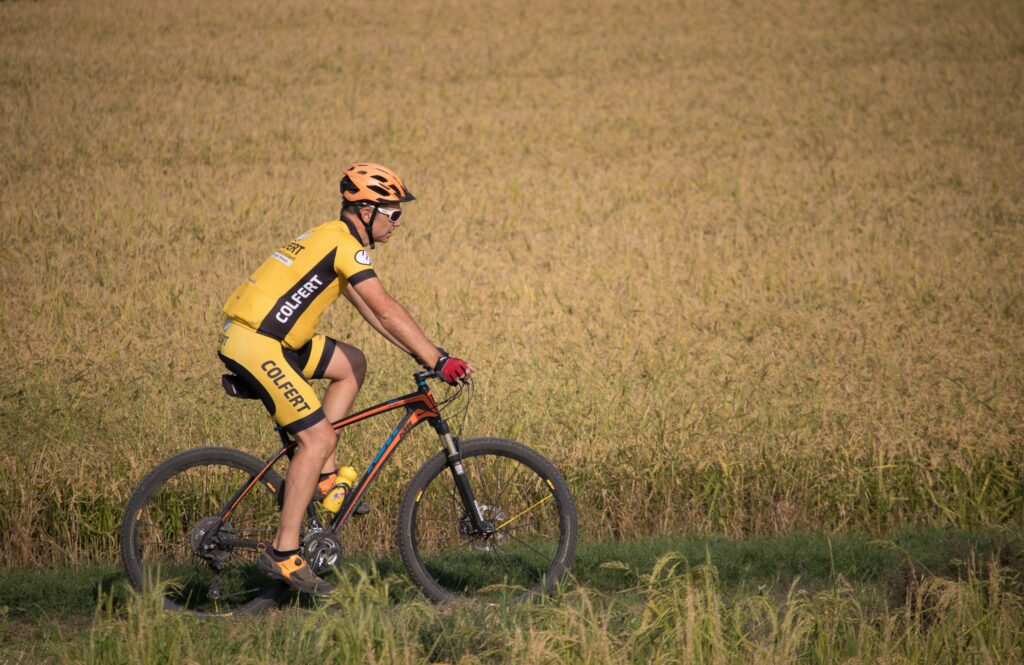
Cyclist riding through a beautiful countryside field.
Below are some essential considerations for choosing the perfect bike for your long-distance adventures:
Determine Your Riding Style
It's important to know your riding style before looking for long-distance bikes. Do you have any plans for a relaxing long journey across the countryside or do you crave fast, long-distance travel?
Knowing your style will help you decide whether a traditional or electric bike for a long drive suits your needs. Consider the following riding styles:
- Touring: For riders who prefer comfort and durability during extended journeys, touring bikes are ideal. They offer stability, ample storage options, and a relaxed riding posture, perfect for those planning a long ride in bike through diverse terrains.
- Adventure: An adventure bike might be the best choice if your long ride involves a mix of road and off-road excursions. These versatile bikes handle various surfaces and can accommodate luggage for extended trips.
- Sport: Speed enthusiasts looking to cover long distances swiftly should opt for sporty road bikes. They are designed for efficiency and minimal wind resistance, making them perfect for an e-bike long ride.
Choose the Right Bike Type
When it comes to long riding, the type of bike you choose plays a significant role in your overall experience. Consider the following options:
- Road Bikes: If your long ride primarily involves well-paved roads, road bikes offer speed and efficiency. Their lightweight design and thin tires reduce rolling resistance, making them suitable for long rides.
- Mountain Bikes: For adventurous long rides that involve off-road trails, mountain bikes provide the necessary suspension and durability. These are ideal for long rides with challenging terrains.
- Hybrid Bikes: Hybrid bikes combine the benefits of both road and mountain bikes because of its adaptability and usefulness for long-distance riders who may experience a range of circumstances.
- Electric Bikes: An electric bike for long drives can make the ride more comfortable, especially if you need assistance on hilly terrain or when you're tackling long distances. E-bikes offer motorised support, extending your riding range.
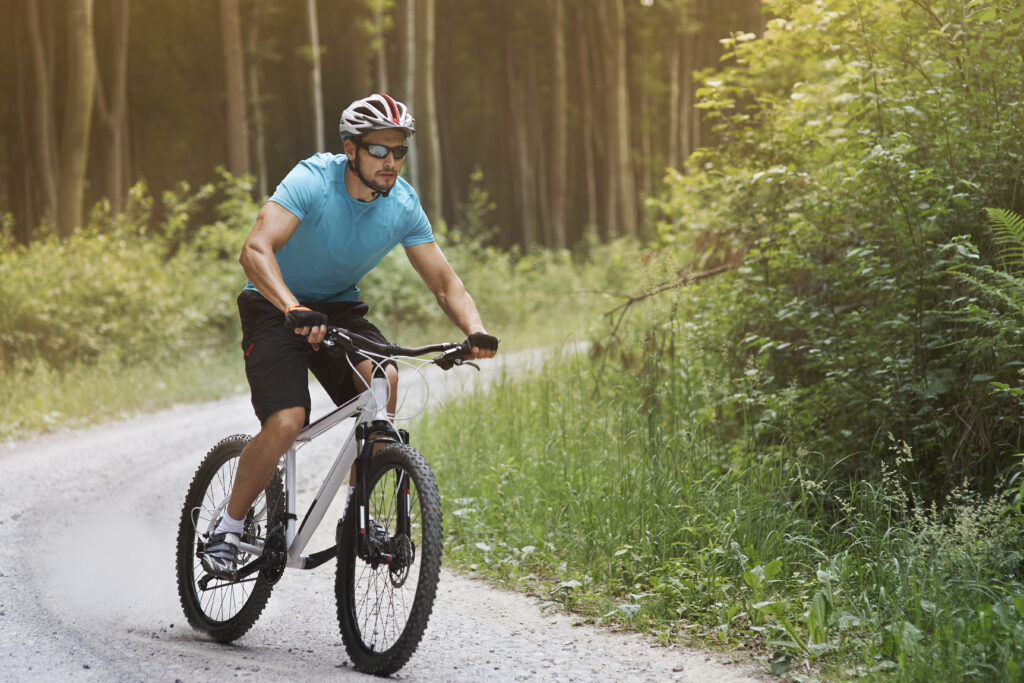
A man riding a recreational mountain bike downhill.
Frame Size and Fit
Picking a bike that fits you well is important for long rides that are comfortable and effective. How to find the right fit:
- When selecting the proper frame size, it's crucial to take your height and inseam into consideration. A lengthy ride might be extremely unpleasant and even dangerous if your bike doesn't fit properly.
- You can determine how a bike moves, how it makes you feel, and how comfortable it is by riding a variety of them. Consider the frame's form, the location of the seat, and the height of the user.
Consider the Gear Ratio
When planning for a long ride on the bike, understanding gear ratios is essential. Your bike's gear configuration significantly influences your ability to navigate diverse terrains efficiently.
For long rides, a bike equipped with an extensive range of gear is paramount. This versatile gearing system empowers you to effortlessly conquer challenging uphill terrains while maintaining a comfortable pedalling rhythm on level ground.
This knowledge ensures you're well-equipped to face the variety of landscapes you may encounter during your long ride, enhancing both your performance and riding experience.
Think About Luggage and Accessories
When embarking on an extended journey with your dependable long riding bike, spanning several days on the road, it becomes essential to ensure you're well-prepared.
You must consider your bike's storage capabilities, including pannier racks, and supplementary accessories such as water bottle holders, lights, and mudguards.
These provisions enhance the convenience and safety of your long riding experience, making it not only enjoyable but also secure, especially when facing unforeseen challenges along the way.
Maintenance and Durability
Your bike is put under additional strain during long, arduous rides, therefore endurance and frequent maintenance are crucial. Choosing a bike with a sturdy frame and parts that are built to endure a long time is crucial.
Make sure your bike is in top condition for your lengthy trip by giving it routine maintenance and tune-ups. Long rides may be taken without any issues if you choose a tough bike and maintain it regularly. It all comes down to picking the appropriate bike and maintaining it.
It's crucial to consider elements like your riding style, the sort of bike you prefer, how it fits you, the gear ratios, any necessary luggage, and other pertinent considerations when selecting the ideal bike for your lengthy excursions.
If you're up for a lengthy ride, you have the option of bringing an electric bike with you. Your lengthy excursions will be lot better thanks to the correct bike because it will make them safer, more enjoyable, and more relaxing. You'll get the chance to fully appreciate its wonder and thrill on the journey itself.
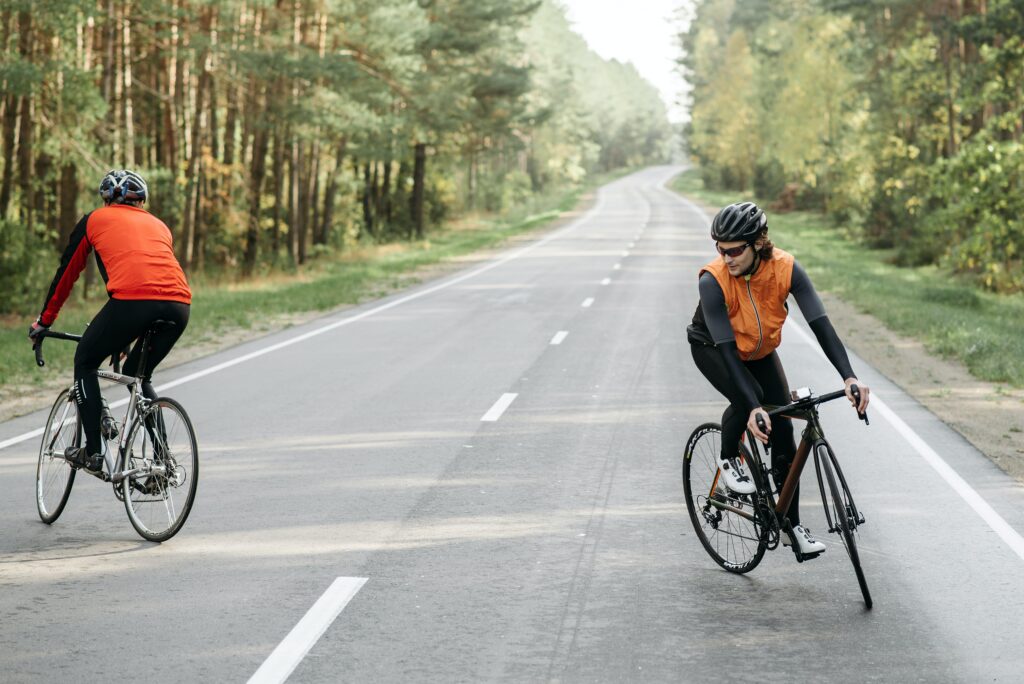
Two men enjoying a long riding journey on a scenic road.
Your Path to Long Riding Excellence
Whether you're a leisurely countryside explorer, an intrepid off-road enthusiast, or a speed devotee seeking an electrifying ride, there's a bike tailored just for you.
Don't forget the electrifying option of an electric bike for a long drive – your trusty companion for conquering hilly terrain or extending your riding range.
With the perfect bike in tow, your long-distance adventures will be more enjoyable, comfortable, and safe. So, as you gear up for your next long ride, remember to focus on the beauty and excitement of the journey itself.
Ready to take the next step in your long riding journey? Visit Sunmono for exceptional biking options and gear that will elevate your riding experience to new heights.
Related Posts
Have you ever fantasised about a thrilling adventure on a sturdy and sleek off-road electric bike, gliding through the rough terrains of Australia's awe-inspiring landscapes? If this sounds like you, then we've got some fantastic news for you! It's natural to question, "Does an electric bike need a licence in Australia?" and to answer that […]
Imagine gliding through Australia's rugged landscapes, the wind in your face, adrenaline pumping through your veins. No, this isn’t a scene from an adventure movie; it's you on the best off-road electric bike in Australia! Off-road electric bikes, also called e-bikes, combine traditional bicycles and electric scooters, giving you the benefits of both. They help […]
Sign up now for Exclusive Promotions

Information
Get in touch.

© 2023 Sunmono. All Rights Reserved. Designed by Zipzipe | Term & Condition
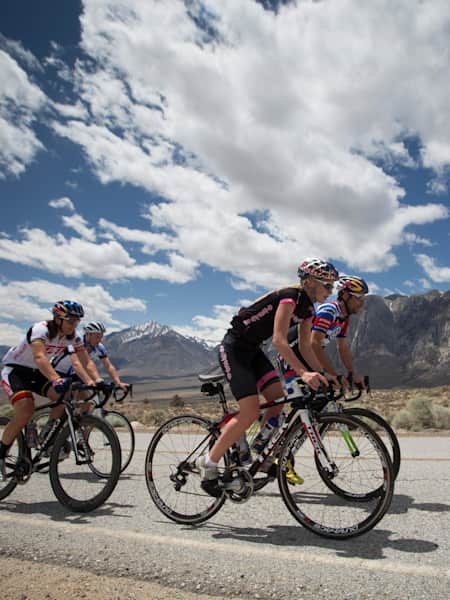
5 ultra long-distance cycling tips your legs will thank you for
Part of this story

Red Bull Timelaps
Take on the world’s longest one-day road cycling event....
1. Pace yourself
Want to take on an ultracycling event in 2019?
© Alex Broadway/Red Bull Content Pool
2. Bulletproof your belly
Healthy, nutritious, the perfect meal for riders
© Christoph Oberschneider
3. Do not fail to prepare
4. develop a pack mentality.
© Lukas Pilz
5. Listen to your body, not your brain

8 of the most beautiful cycling routes in the UK
9 of the best cycling sportives that you can ride in …, the world’s toughest ultra endurance cycling events.
- Account Settings
Classifieds
Bike reviews, product reviews.
- Best Motorcycle Cameras
- Best Motorcycle Earplugs
- Best Motorcycle Oil
- Best Leather Jackets
- Best Winter Gloves
- Best Sportbike Tires
- GPS Buyers Guide
- Adventure Touring
- On-Off-Road
- Sport-Touring
- Touring Scooter
- Harley-Davidson
- Royal Enfield
New Rider's Hub
Top stories.

10 Best Motorcycles for Long Distance Riding

There are a lot of ways to go for a long distance tour. These days, offerings are plentiful when choosing a steed to gallop your way across the country. There are even a few liter bikes that come equipped with cruise control, if you’re into that sort of thing. From dedicated six-cylinder sport tourers, to Dakar inspired adventure bikes, there has probably never been a better time to choose a touring motorcycle.
We’ve put together a list of the 10 best motorcycles for long distance riding. If you think we’ve left anything out, which is bound to happen when choosing only 10, leave them in the comments section below.
1.) KTM 1290 Super Adventure R
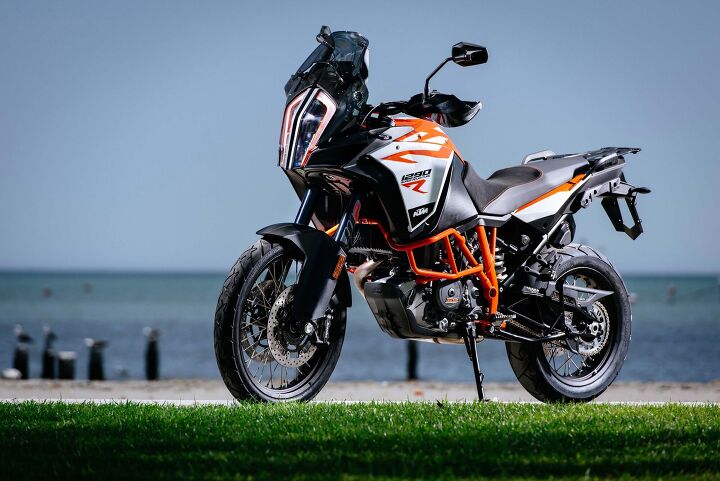
KTM’s lineup of what the company categorizes as Travel consists of the 690 Enduro R, 1090 Adventure R, 1290 Super Adventure S, and 1290 Super Adventure R. The two 1290s are equally set up for touring though we opted to include the R version in this list to differentiate it as not only a touring bike for long distances, but a motorcycle that will take you further than the pavement allows.
With its off-road focused 21 x 18-inch wheel combination, there are plenty of tires from street-biased to pure knobbies that you can fit onto the big Katoom. When it comes to eating up miles, the Adventure can hang with the best of them, on or off-road, with its neutral seating position and laundry list of touring features including a 6.1-gallon gas tank, adjustable windscreen, cornering LED headlight, big ‘ol TFT display from which you can view plenty of trip info, connect to your phone, and use the KTM My Ride feature, and of course, cruise control. You’d be a fool not to consider this bike for your next transcontinental excursion, unless you’re just not comfortable with a 35-inch seat height.
2017 KTM 1290 Super Adventure R Review: First Ride
2.) BMW K1600GTL

Lux touring at its finest. The BMW K1600GTL exudes luxury sport touring while feeling like a precisely engineered German machine. The star of the show, the 1,649cc inline-Six, is smooth and ready to deliver a claimed 160 horsepower and 129 lb-ft of torque at the twist of a wrist. The GTL is equally adept on twisty canyon roads as it is gobbling up miles down the highway. The electronically adjustable suspension soaks up road irregularities with ease, providing one of the most compliant and cush rides we have experienced, all the while allowing the ride to be tailored to the pilot’s preference at the push of a button, er, wheel in the BMW’s case. Navigating through the plethora of adjustments and information is mostly done with a rolling wheel interface on the left-hand switchgear. The K1600GTL dethroned the Gold Wing in our last big touring shot, and it’s pretty easy to see why.
2014 BMW K1600GTL Exclusive Review – First Ride
3.) Honda Gold Wing

Ah, the Honda Gold Wing. A juggernaut in the touring market since its inception in 1975. The Gold Wing has long been held as the gold standard in touring motorcycles, providing its riders with the utmost comfort and wind protection while offering Honda’s exceptional engineering to keep the behemoth feeling much lighter than it should. Now in its newest iteration, the Gold Wing can be had with Honda’s automatic transmission, known as DCT which is particularly convenient for touring. Evans Brasfield and our dearly departed (from MO ) Sean Alexander spent quite a bit of time on the new Gold Wing, Alexander at the press launch two-up with his wife, and Brasfield on the Nuclear Tour bringing the Wing home from Texas. As Evans states in the dual-story write-up: “impressions of the Gold Wing Tour stand out as remarkably positive”. The only flack the new Wing seems to be getting is for the reduction in storage space, an odd choice for a touring bike until you consider Honda shrunk the entire machine.
2018 Honda Gold Wing Tour Review
4.) Yamaha Venture Transcontinental

Having spent a fair amount of time both solo and two-up on the Yamaha Eluder – basically the Venture sans trunk and a few features – I would be happy riding either model for months on end, of course the extra storage and backrest would be preferred for a passenger. The 1,854cc beating heart of the Yamaha Venture is addicting. The low rumbling bass coming from the exhaust is unmistakably V-twin, yet in a class of its own. The massive torque delivered smoothly through the belt drive is more than enough to pull you and your passenger up winding roads in to Yosemite or the Black Hills of South Dakota.
Though the front of this bad boy looks like a `60s muscle car, modern niceties can be found behind that monstrous nostalgic fairing in the way of a large central screen giving access to navigation, Bluetooth, trip info, Sirius XM and all sorts of other information. Also found on the big touring machine are two alternators delivering 750 watts, heated everything, four speakers with dual-zone audio control, storage cubbies all over the place, fog lights, and a security system. If you fancy yourself some V-twin touring, this is the most high tech way of doing it.
2018 Yamaha Star Venture First Ride
5.) Harley-Davidson Electra Glide/Touring line

Nothing will make you feel more American than rambling down a lone highway with a pulsing Harley-Davidson V-Twin rumbling beneath you. H-D’s new Milwaukee Eight can be found in 107 cu in and 114 cu in variants and provide ultra-smooth torque synonymous with the brand. The classic Harley Electra Glide has been a staple of American motorcycle touring for decades. Companies like EagleRider Motorcycle Tours & Rentals have sculpted their business around the world’s interest in riding American motorcycles in America, and it’s no surprise. I’ve never owned a Harley, yet I still get excited to ride one any time I get the chance. It’s an experience of its own.
2017 Harley-Davidson Ultra Limited First Ride Review
Harley-Davidson Fairing Comparison: Ultra Touring Glide-Off
6.) Kawasaki H2 SX SE

Not really a touring guy? More interested in sport, than sport touring? The Kawi H2 SX SE might be the perfect blend of supercharged performance with touring accouterments. It’s a touring bike with a supercharger, launch control, and a quick shifter, or maybe it’s a sport bike with a larger windscreen, LED cornering lights, comfortable seat, heated grips, and centerstand. If your idea of touring involves warp speed, the H2 SX SE will have you doing so luxuriously.
2018 Kawasaki H2 SX SE First Ride Review
7.) Ducati Multistrada 1260

The Multistrada is Ducati’s answer for those Ducatisti looking to travel in comfort with all the raucous performance that the unrelenting Italian manufacturer has built into its bikes since the beginning. As you first flick the Multi 1260 onto its side through a corner, you’ll be amazed that a motorcycle the size of this could possibly handle so closely to its sportier counterparts – and don’t get me started on the engine. It has performance for days with torque to make it all practical or at the very least to launch you out of the tightest hairpin corners with ease. The ability to adjust the engine character and suspension coupled with the laundry list of acronyms used to describe all of the tech crammed into the Multistrada make this truly the Swiss (Italian?) army knife of Ducatis.
2018 Ducati Multistrada 1260 First Ride Review + Video
8.) Turismo Veloce 800 Lusso SCS

The Turismo Veloce is another long-legged Italian stunner in the touring realm. It’s the lightest, most agile touring bike on this list and the Turismo also comes in with the least cubic centimeters, though if you’re a fan of Italian sportbikes and intoxicating exhaust notes, the MV is worth a look. We included the all new Turismo Veloce 800 Lusso SCS because it is the company’s top-of-the-line touring model – equipped with luggage, heated grips, electronic suspension, and adjustable ride modes among other touring bits.
What also makes the Lusso intriguing is that little red circle visible through the lexan clutch cover. For the first time ever we see the American company, Rekluse who is well known in the off-road segment, team up with a manufacturer to develop the Smart Clutch System (SCS) found on the Turismo Veloce 800 Lusso SCS.
2018 MV Agusta Turismo Veloce 800 Lusso SCS First Ride Review
9.) Indian Roadmaster

For a long time, if you wanted an American touring bike, you had one option. Ever since Indian burst back onto the scene in its most recent iteration, the company has been producing great bikes with even better motors. Backed with the R&D department only a large company could provide (Polaris), Indian has produced two fantastic motors and built a model range around those two to rival its competitors. The Roadmaster is an undoubtedly big touring machine, but it will eat up a thousand miles for dinner and go back for seconds, all the while having the latest and greatest available for sound, ride and bike information, and navigation all available in the fairing mounted screen. Going two-up? There’s a big cushy seat for your passenger, too.
2017 Indian Roadmaster Classic Review: First Ride
10.) Triumph Tiger 1200

I’ve spent hundreds of miles on the Tiger touring two-up to solo riding through Jeep trails and I’ve come away very happy with the Tiger 1200. The 2018 XCa model is certainly one of the more road-biased adventure bikes, and that’s just fine because you can adjust power modes and suspension for touring or sport on road, then flip to off-road setting when the pavement ends. It’s an adjustable steed with a fantastic Triple engine and relatively maintenance-free shaft drive. The model we rode came equipped with heated seats fore and aft, heated grips, fog lights, skid plate, and a beautiful TFT display from which to read all sorts of information. One of my few gripes is the small-ish (in relation to other ADV bikes in the category) gas tank. It’s so comfortable, you could definitely keep riding further than the tank will allow.
2018 Triumph Tiger 1200 XCa Review
Riding The Triumph Tiger 1200 To And Fro

Ryan’s time in the motorcycle industry has revolved around sales and marketing prior to landing a gig at Motorcycle.com. An avid motorcyclist, interested in all shapes, sizes, and colors of motorized two-wheeled vehicles, Ryan brings a young, passionate enthusiasm to the digital pages of MO.
More by Ryan Adams
Join the conversation
I'll take a 650 V strom or DR650 and stay off the highways. Not a fan of boat anchors.
No Concours 14 or FJR ???

Find your Motorcycle
Specs classifieds, popular articles.

2025 Can-Am Origin and Pulse Electric Motorcycles – First Look

Harley's DEI Climbdown Isn't the Woke-ism Defeat You Think it Is

2025 Can-Am Canyon – First Look

Weekend in Muskoka - Motorcycle Touring in Ontario’s Cottage Country

Top 6 - Best 300cc Motorcycles
You may also be interested in.
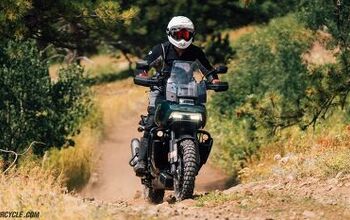
Exploring the Other Side of Sturgis – on a Pan America
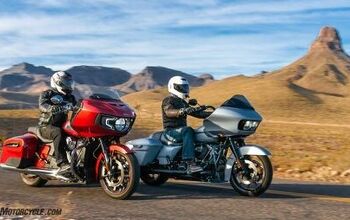
Indian Vs Harley: Five Ways to Pick the Motorcycle That's Right for You

Small Adventure Bike, Big Adventure Dreams

Are Parallel-Twins Really That Boring? – Question of the Day

Can You Plug a Motorcycle Tire?
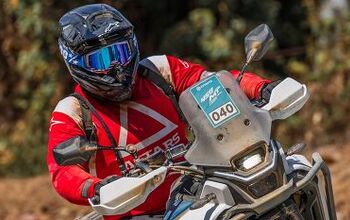
How to Clean a Motorcycle Windshield
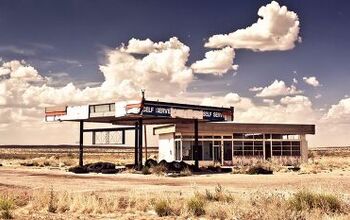
De-Gassed – How Will You Fuel Your Classic Motorcycle in 2044?

What’s the Worst Name for a Motorcycle? – Question of the Day

Ready, Set, Ride - Get Ready for Spring Riding in Ontario

How to Choose the Right Windscreen for Your Motorcycle

The 390 Adventure Project – Upgrades and Adjustments

MV Agusta Chairman Hubert Trunkenpolz Interview – Part One

Out and About at the 2024 Isle of Man TT

2024 LiveWire S2 Mulholland – First Look

Recall: What Kawasaki Ninja ZX-4R and ZX-4RR Owners Need to Know
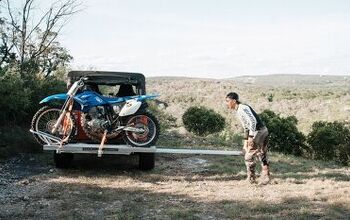
Pakmule Releases Motomule Hitch Hauler
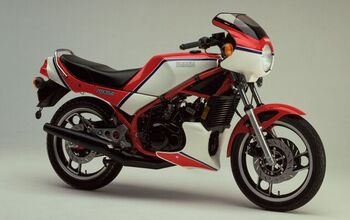
Yamaha is Developing New RW Series Models

Which Small SUVs Are Most Likely to Rear-End You?

India at Paralympics 2024
India @ paralympics 2024.

- Paralympics 2024
- Players Speak
- Coach's Corner
- Forgotten Heroes
- From The Grassroots
- Law in Sports
- Sports Market
- Weightlifting
- Para Sports
- Table Tennis
- West Bengal
- Maharashtra
- Himachal Pradesh
- Arunachal Pradesh
- Chhattisgarh
- Uttarakhand

List of top 10 popular bikes for long road trips in India
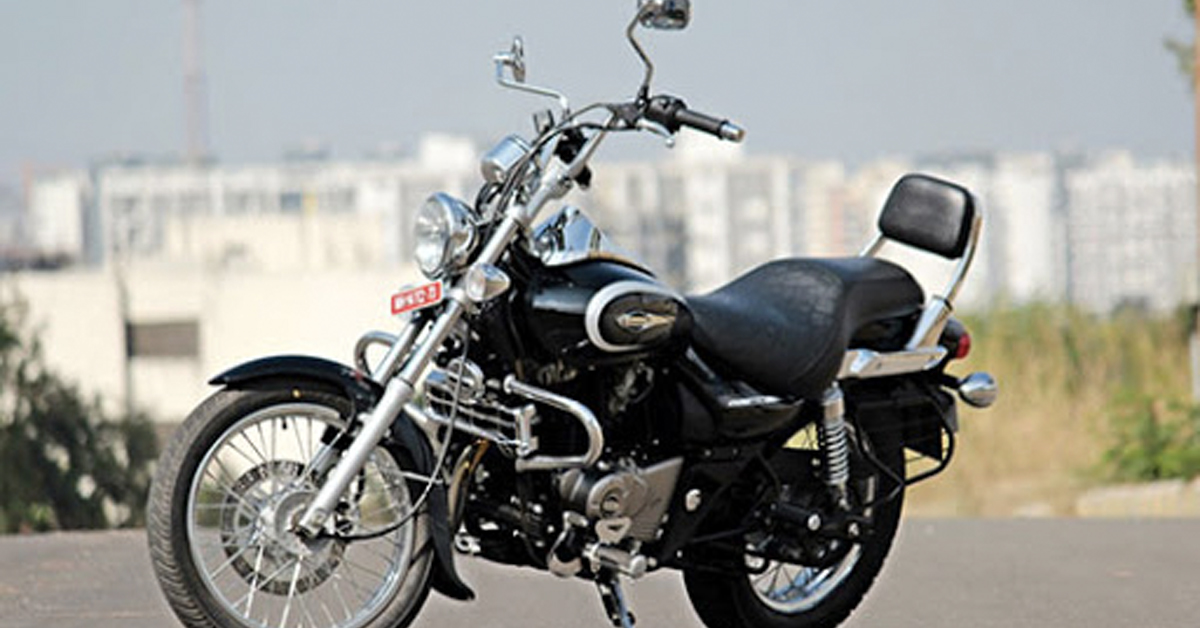
The Bridge Desk
Biking has its fun and craze especially amongst the youngsters in India. Every year thousands of bikers leave for long road trips and rides in the hilly terrain. These riders look for the most popular bikes that offer great mileage, are affordable, and are low maintenance.
For long trip lovers, here are the top 10 popular bikes for long trips in India :
1. Bajaj Avenger Cruise 220
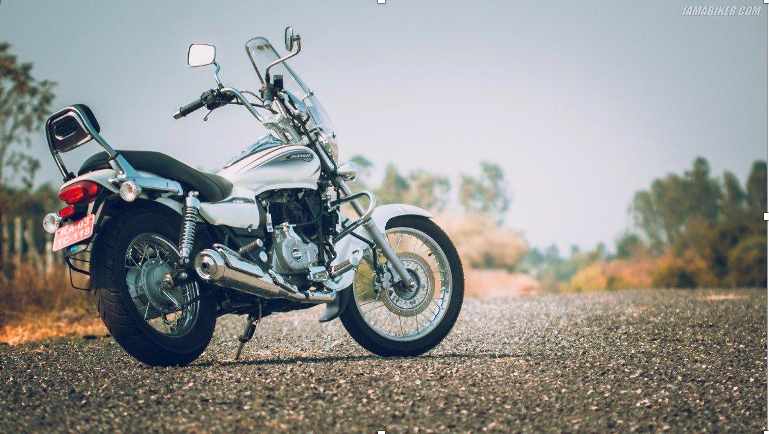
Bajaj Avenger Cruise 220 stole the heart of the riders ever since it was launched in India. It is:
- Laidback cruiser for comfort.
- Priced between Rs.1.22 lakhs.
- Self-start enabled bike that runs on petrol and has a BS 6 compliant engine.
- 5-speed gearbox with single-channel ABS.
- Available in two colors Moon White and Auburn Black.
- A single-cylinder bike with a 220cc engine that produces 19bhp and 17.5Nm of torque.
2. KTM 390 Duke
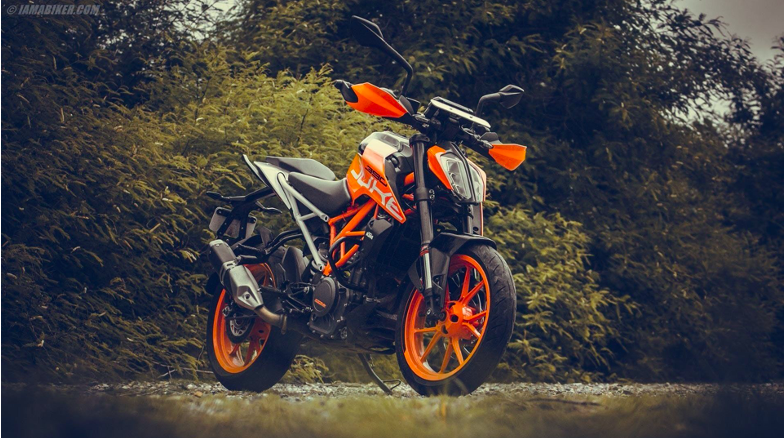
KTM 390 Duke, a commuter bike is available in 1 variant in India. You can buy it for Rs.2.58 lakhs. Other features of the bike that can fascinate you include:
- A 6-speed manual gearbox, 373.2cc engine that produces 42.9bhp and 37Nm of torque.
- Made in two colors, KTM 390 Duke comes with ABS, both rear and front disc brakes.
- Color TFT screen that can be connected with the rider’s smartphone through Bluetooth.
3. Royal Enfield Thunderbird 350
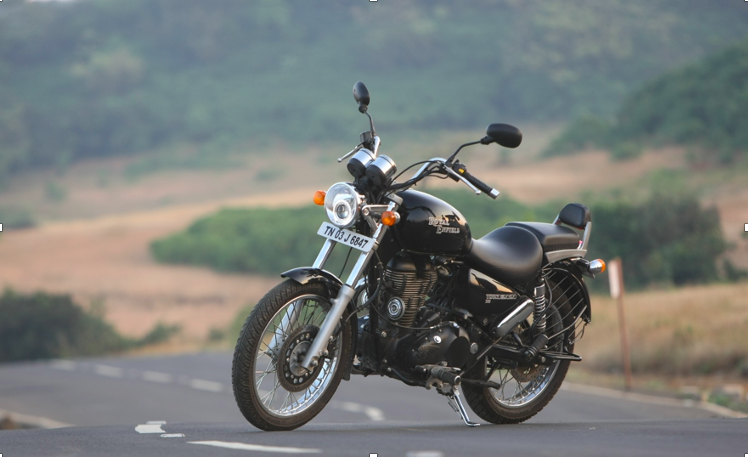
A heartthrob of thousands of riders and a cruiser on the road, Royal Enfield Thunderbird is a perfect choice for a long drive. You can choose the bike as:
- The price starts from Rs.1.56 lakhs that is worth the pay for.
- It offers a mileage of 30 km per liter.
- The bike has a powerful engine of 346 cc that produces 19.8 bhp and 28Nm torque.
You may also like: This woman biker traveled from Kanyakumari to Leh in just 129 hrs
4. Harley Davidson SuperLow
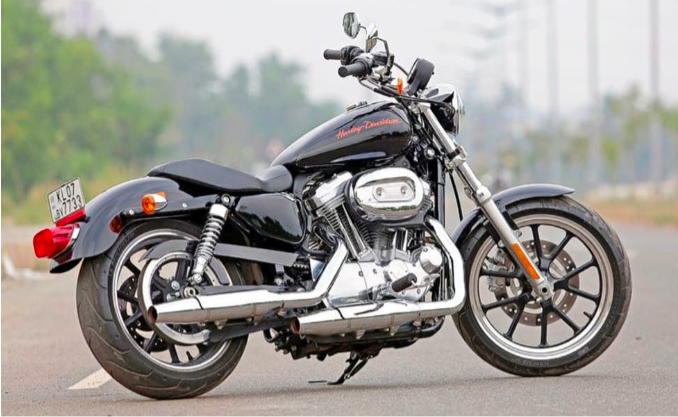
Harley Davidson SuperLow is the dream bike for many. A robust bike with sharp edges and bold design can make for a choice because:
- This 17-liter fuel storage capacity bike offers 20 km per liter of mileage.
- It has a powerful engine of 883 cc that produces 50 bhp power and 69Nm Torque.
- The price of the bike starts at Rs.5.60 lakhs only.
5. Bajaj Dominar 400
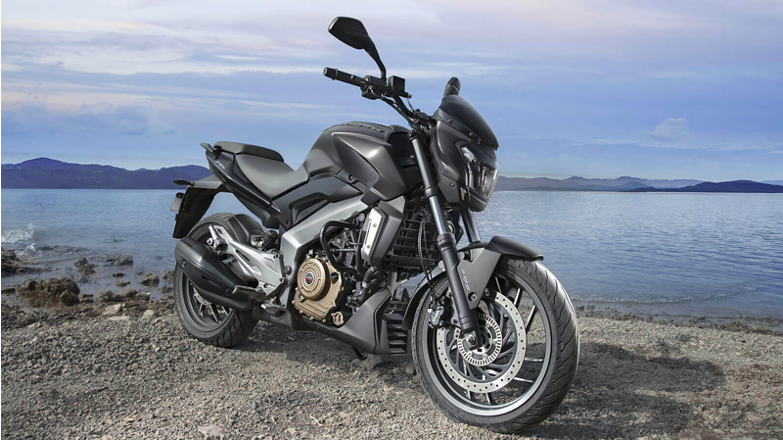
Bajaj Dominar 400 is a cruiser bike in India which is perfectly fine for long drives on the Indian roads. Bajaj Dominar 400 has:
- 27 cc engine capacity that generates 39.42 bhp of power and 35nm of torque.
- The 6-speed manual gearbox simplifies the driving fun.
- The affordable price range starts from Rs.1,97,438/-.
A Bengaluru based female biker Candida Louis has covered 34,000 KMs in a solo bike trip from India to Australia using a Bajaj Dominar 400
6. Royal Enfield Himalayan .
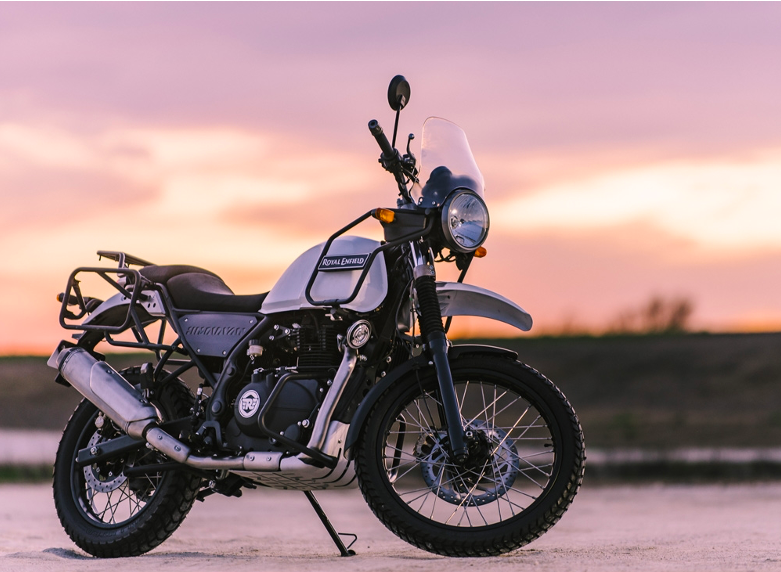
Royal Enfield Himalayan is the bike for adventure lovers in India. Perfect and suitable to drive in the hilly terrains, Royal Enfield is the touring bike. Other features of this bike include:
- Single-cylinder and four-stroke engine with 411 cc displacement.
- The bike offers you a fuel economy of 30 to 36.26 km per liter.
- The price range of the bike is Rs.1.87 lakhs to Rs.1.91 lakhs.
- About 10 color variants are available to choose from.
7. Jawa Perak
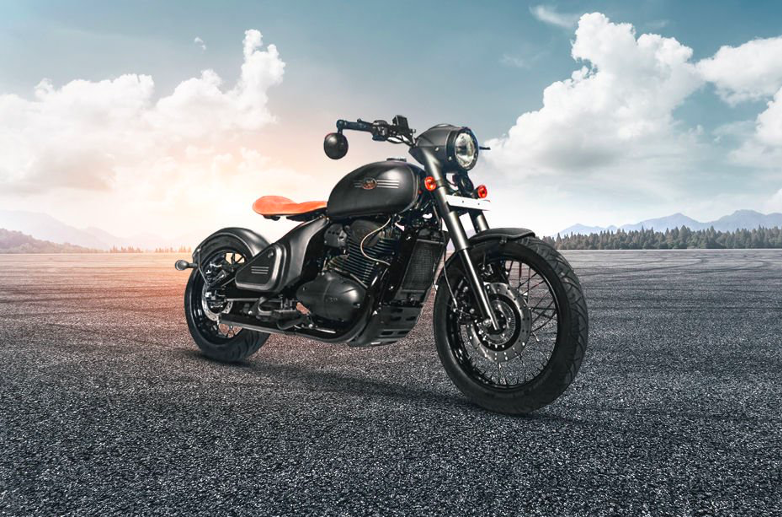
The large and tamper-proof Jawa Perak is a strong and top-heavy bike that goes steady for long drives in India. The favorable features of Jawa Perak include:
- The price starts at Rs.1,96,941.
- It generates 30 bhp of power and 32.74 Nm Torque from a 334 cc engine.
- The single-cylinder engine of Jawa Perak comes with a 6-speed manual gearbox.
8. Royal Enfield Interceptor 650
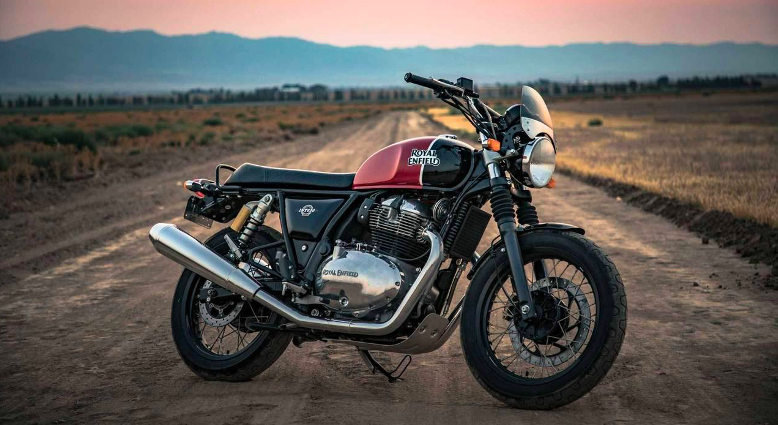
Royal Enfield Interceptor 650 gives you a smooth ride. This bike is powered by an air/oil-cooled engine. The seats are comfortable not just for the driver but also for the pillion rider. You can choose the bike because:
- It has a parallel twin 649 cc engine that produces 47bhp and 52Nm of torque.
- The price range of the bike starts from Rs.2.5 lakhs- Rs.2.88 lakhs.
- The bike offers a mileage of 25 km/liter.
- It has dual-channel ABS for safety.
This bike is so popular that Arunachal CM had kicked off a bike trip on RE Interceptor to promote adventure sports in the state .
9. Suzuki V-Strom 650 XT
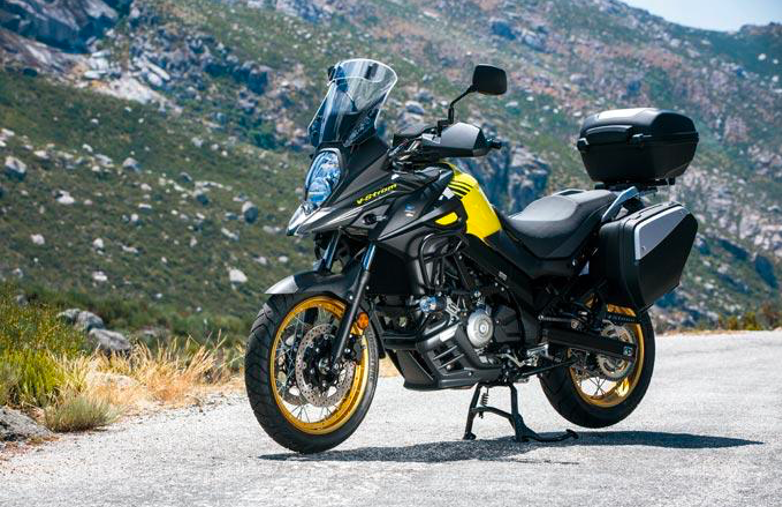
Suzuki V-Strom 650 XT has a powerful double cylinder engine that can give you a smooth ride for long distances.
- The bike has a 6-speed manual gearbox for a smooth ride.
- The engine displacement of the bike is 645 cc that produces 71bhp power and 62Nm torque.
- You get a mileage of 26.46 km per liter.
- It will cost you Rs.7,46,000/-.
10. Mahindra Mojo XT 300
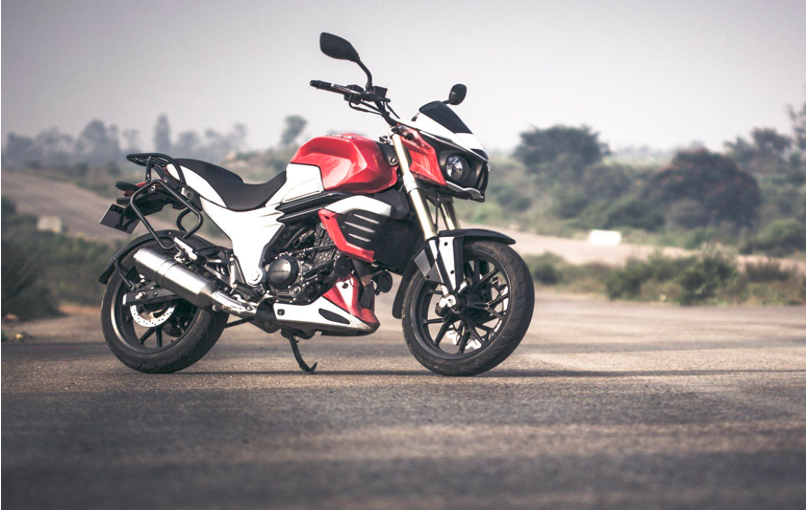
Mahindra Mojo XT 300, is available in two colors: volcano red and ocean blue. The bike receives the power from a 300 cc liquid-cooled EFI engine.
- The well-built bike is available in the price range of Rs.1,63,000/- to Rs.1,89,000/-.
- The engine produces 27.19 bhp of power and 30 Nm torque.
- The fuel tank capacity is 21 liter that will help you go 25 km per liter.
So are you planning to buy one such bike and disappear on the roads? we feel you! But please take the following things with you for a safe trip: Bike documents and driving license, a good helmet with proper riding gears, backpacks with all the ropes and knots, some snacks, a small bike repair kit, fluorescent tapes, flashlights, and most importantly insurance . And yes! Do not forget to get these things checked before starting the journey: Tires, Fuel, Wheel Alignment, Brakes, Chain/Belt, and Engine.
Why insurance is the most important thing to have before any bike trip:
Long drives can be fun but not without an insurance policy. Make sure you buy or renew your bike insurance policy before you start your journey. The bike insurance policy will save you from accidents, theft, fire, natural disasters, personal accidents, and third-party losses.
Other than this, a bike insurance policy can be useful in a bike trip because:
- Roadside Assistance: Long trips may call for some unexpected challenges like bike breakdown. You cannot trust all motor garages to get your bike fixed as they may mislead you with the issues. Better is having insurance because then you can have assistance arranged by the insurer. They will make arrangements or guide you for a hassle-free repair.
- Cashless Repair Facility: Only if you have insurance, you can get the benefit of the cashless repair at the network garages. You might not want to spend extravagantly when on a long trip. Hence, the cashless facility will be a benefit for you.
- Quick claim process: When you have an online two-wheeler insurance policy, you can easily file the claim through your mobile phone. You can be on your trip, get the bike repaired, and still file a claim. And the claim process is completely online and super quick. It is paperless and some insurance companies say that their claim process takes a few minutes! Super Simple!
Gone are the days when you have go to the insurance office or talk to an agent to buy a bike insurance. These days buying insurance online is safer and better because it:
- Will help you save time to purchase the policy. All the terms and conditions can be read online.
- Allows you to choose the cover and add-on cover without bias.
- Help you save premium because there are no middlemen involved when you buy the policy online.
- Makes Quick policy receiving possible as soon as you deposit the premium.
- Aids you compare the quotes online before making the final purchase of the policy.


My (Long!) Journey to Finding the Right Bike
I used to think finding the right run shoes was hard. Neutral, stability, make, model… so many choices! Then I got into triathlon and that’s when things got really complicated. Geometry, frame material and of course parts. SRAM or Shimano. 1x or 2x. Speedplay, Look or Shimano. And don’t even get me started on saddles!
So what did I do? I threw a dart and bought some random dude’s Scott Plasma 2 off Craigslist that looked about my size. Memo to newbies: Don’t do this!
I raced on the Plasma 2 for about two years before calling it a day. There was nothing wrong with the bike itself but I just couldn’t make it fit. It’s all about position, right? When I made one adjustment it only led to more problems. The saddle couldn’t move forward enough. The higher the seat went the farther I was from the arm pads. We simply were not compatible.

I had multiple fittings, I put in plenty of hours in the saddle, I even tried to buy speed: Zipp 404s. I remember racing my first half ironman, which was IRONMAN 70.3 Eagleman last year. I had the fastest run split in my age group while also one of the slowest bike splits. How could that be? It was beyond frustrating!
I seriously contemplating quitting the sport to go back to pure running, but then I had a lengthy conversation with Slowtwitch publisher Dan Empfield. Perhaps Dan heard the desperation in my voice, or who knows? He was convinced he could “fix” me. First step: Finding and building me the right bike.
In the meantime, I sold my Plasma 2 and upgraded to a Specialized Shiv. Massive improvement. I rode 17 minutes faster at IRONMAN 70.3 Eagleman this year versus last year (of course I had another year of training under my belt) and traded in my unstructured stationary workouts for TrainerRoad (which I also wrote about ). The new bike helped a ton! My position improved and I was way more comfortable. I didn’t feel like I needed to get off the bike only 10 minutes after starting the ride. I also stopped looking at cycling as a necessarily evil to get from the swim to the run. It was the first bike I rode that could comfortably accommodate my 39-inch legs.
Now for the fun stuff. Once Dan finished building my bike I flew to Valyermo, CA, for a proper fitting and tons of training (you can read about 5 Days with Dan Empfield ). Let’s just say I no longer had that “I’m trying to operate a piece of equipment” feeling. It felt a lot more fluid. Similar to how I feel when I run.
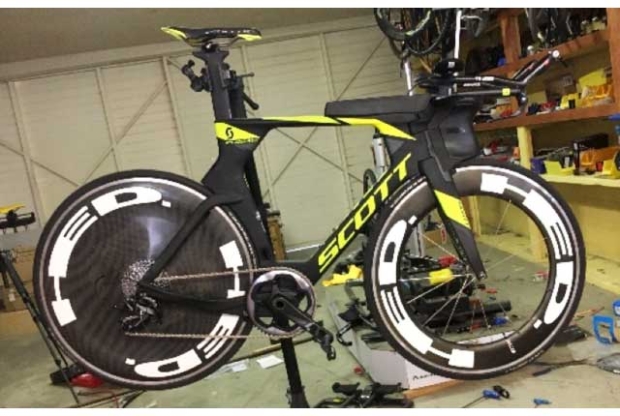
All of this was done a little over a week before the Ironman 70.3 World Championships. We cut it close. I didn’t get in a long ride and I didn’t even get to fly home with my bike! It was shipped straight to Chattanooga. (Shout out to Quintana Roo for building it back and getting it race ready.)
As Dan says, “You need to learn your bike and understand all its parts.” Lucky for me I had 56 miles to get fully acquainted with her. Now bear with me as I try to describe what it was like riding my superbike through Chattanooga. I’m used to referring to parts of my bike as the "thingy in the front" or "that part in the back". And now I’m learning how to use terms like 1x (pronounced one-by) and cog.
Speaking of which, let’s start with the 1x. I’ll never ride anything else. It made my life infinitely easier. I’m one of those people that never shifted to the small ring. I had one bad incident – shifted, dropped my chain – and NEVER shifted to the small ring again. I was scarred for life. Now there’s no need to worry about that.
In summary, the list below is what stood out the most. And I apologize now to Slowtwitchers who love debating things like rear brake routing. That’s a foreign language to me. I refuse to embarrass myself by even trying to talk about such things!
Hydration System – Scott (built in) : There’s nothing worse than seeing your hydration go airborn in a race. I hit a bump within a few miles of the bike course. I noticed bottles all over the road. Dear Scott: Good job! Mine stayed perfectly intact. I never had any issues with the hydration system until I filled it to the brim during one of the last bottle exchanges. I had Gatorade splashing all over the place. I should also note that I didn’t leave the sponge/splashguard in the bottle. I have since tested it out with the sponge. The sponge functions!
Gears – SRAM : Shifting was seamless. Like nothing I’ve ever experienced on any bike. It was as if I was using electronic gearing. On my past bikes, often times they would make weird noises when I shifted into certain gears. I’d find myself shifting back and forth until the weird clicking noise went away. I didn’t experience this once on my Plasma Premium.
Seat – ISM Adamo PR 2.0 : I stuck with the same saddle I used on previous bikes. I did Saddle Pressure Mapping last summer at Sportfit Lab . Ladies – if you are struggling with your saddle (chafing, saddles sores, etc), pressure mapping was definitely worth the money I spent.
Aerobars – Profile Design T3+ Carbon : What an improvement from the previous bars (Vision TT) I had on my Plasma 2! I believe Dan added these. They didn’t come with the bike. I prefer them. Very comfortable and they are easy to adjust.
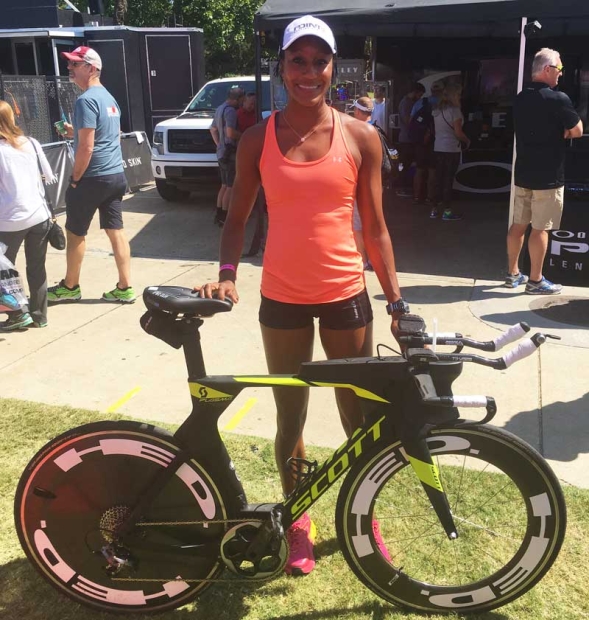
Wheels – HED; Tires – Continental Grand Prix 4000 : I flew. It was the first time I raced with a disc. No flats. No issues.
Seatpost – Plasma with Ritchey clamp : This was one of my biggest concerns. I’m 5’10” with a 795mm saddle height. I actually had to purchase a seat post extension for my Plasma 2. This new one is very adjustable, in height, fore/aft and tilt.
Worlds in Chattanooga was my first time riding my new bike for more than 20 miles, and it just so happened to be at a big race. If it can survive that course, it can survive anything. Did I blast out a crazy fast time and blow by women? No. Did I have the most comfortable ride of my life on the most challenging course of my life? Yes. Was it super easy to pack in the my Scicon bike case and fly home with? Extremely.
My superbike and I have about a month to get to know each other a little bit better before I race at Ironman 70.3 North Carolina on October 21st. Stay tuned.
[ Postscript from the editor : The above was written the week after Worlds in Chattanooga. At that point Sika's PR for the 70.3 distance was 5:12, set at Eagleman 70.3 earlier this year. At 70.3 North Carolina over this past weekend she closed out her racing season with a time of 4:49. "Most of my PR came from the bike," she said, and of her run split, which was second-fastest among the (amateur) women, "My legs felt different after I got off the bike. Fresher, maybe?" So, progress.
In August I wrote about the process of choosing a bike for an athlete of middlin' technical understanding. Her piece above is the denouement of the process from her perspective. For those who wonder, Sika mentions a lot of brands in her piece above. She is not sponsored by them. Slowtwitch is not receiving consideration from any of them. Sika was given no guidance; what she wrote above is just what she found notable about the process.]
Related Articles
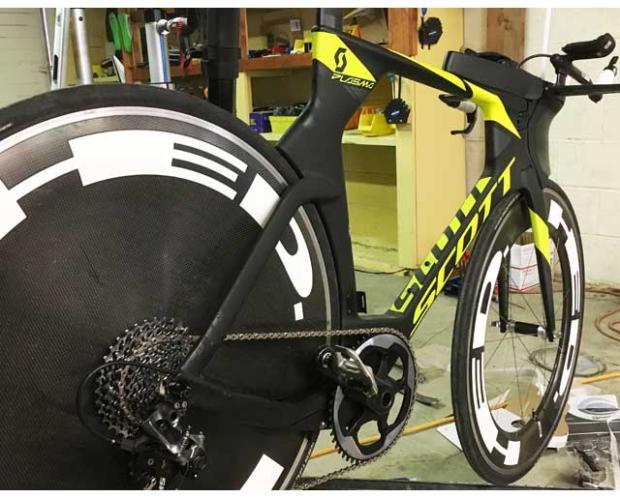
Scott Plasma Premium: From Thought to Reality
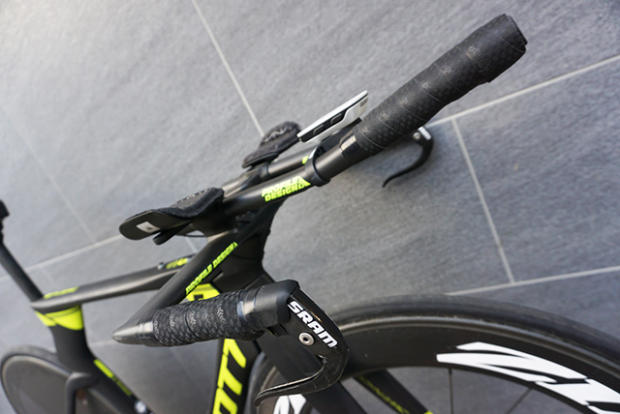
The Scott Plasma of Swedish TT champion Lisa Norden
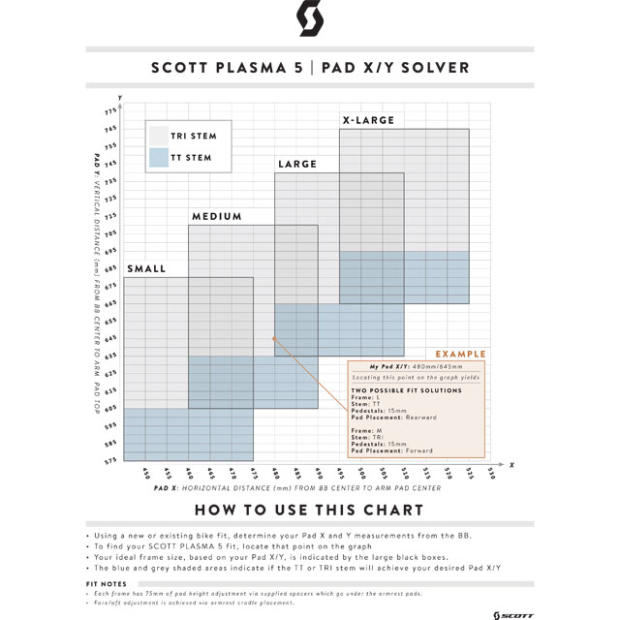
The Plasma Gets a Prescriber
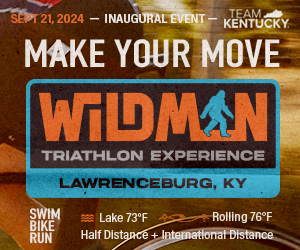
Join our Newsletter

Start the discussion at forum.slowtwitch.com
Plan your cycling tour with Bikemap
You want to get from A to B on your bike safely or plan your next adventure? We got you covered with routing that fits your needs - anywhere in the world!
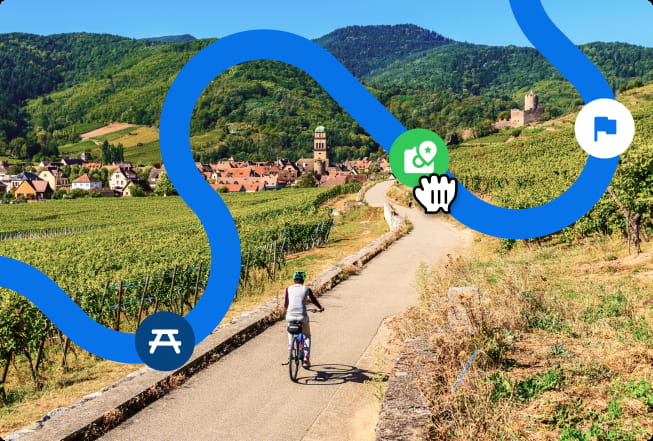
Start planning now - it's free!
With Bikemap Web you can explore cycle paths worldwide using your favorite map. Choose a routing profile that suits your plans, fitness and bike type and then fine-tune the route until it's perfect.
5 reasons to try the Bikemap Route Planner
You are in good company.
Millions of users in our community have already planned their tours with Bikemap. Discover routes that you can use as a template and then tweak or extend.
Maps tailored for cyclists
Choose the type of map you need to find the best paths to go. The global heatmap helps you find the roads that are most popular among cyclists. Community reports and relevant points of interest give you additional information to consider while planning.
Find the perfect way
Search for places and add them to the list of waypoints. You can easily change or reorder them. Thanks to the various routing profiles, you'll find the best way to go along these places on your type of bike.
Inspect your route
While planning, you can always check distance, ascent, descent and the estimated time. The elevation curve gives you a live impression of the ups and downs along the way and easy tools to inspect them in detail.
Optimize the track
You can always change, add and remove way points also on the map to make sure the route leads you exactly as intended. After saving or publishing, you can change your route again at any time.
Planning is just the first step
Once you're done planning and ready for the ride, save the route and make sure to get the Bikemap App for turn-by-turn navigation.
Latest News
- Latest Reviews
- Car Reviews
- Bike Reviews
- Upcoming Cars
- 5 Bikes That Are Perfect For Long-Distance Rides
By car&bike Team
2 mins read
Published on May 30, 2022
Follow us on

- Touring bikes need to offer great levels of comfort.
- They also need to be very reliable.
- Many such options are available in India.
There are two main reasons why people seek motorcycles in India. One is to help them in their daily commutes and the other is so they can take long cross-country trips to unexplored places and satisfy their wanderlust in the best way possible. If you fall in the second category, we've prepared for you a list of the best bikes you can buy for long-distance travel in India. All of them will ensure that you get exactly the kind of reliability, power, and comfort that you need on long trips. That said, let's get going with the list.
Royal Enfield Himalayan

The Himalayan differs heavily from Royal Enfield's Modern Classic kind of approach towards design. It's got a half-duplex split cradle frame and comes with telescopic suspension at the front. The rear gets monoshock suspension and this combination provides comfort to the rider. The bike was designed specifically for touring and that explains why it has a luggage carrier on its rear and multiple mounts across its body.
KTM 390 Adventure

This bike has got adventure in its name itself. It gets an ultra-light yet incredibly stable trellis frame and even a removable trellis sub-frame for a pillion rider or luggage. And apart from a strong engine, it even gets a killer electronics package, which includes traction control, riding modes, Quickshifter+, and cornering ABS. All this stuff makes the KTM 390 Adventure an excellent ally for those who desire to go on long motorcycle journeys.
Royal Enfield Interceptor 650

This one's an absolute roadster. It is able to deliver 47 hp at 7,150 rpm and a peak torque of 52 Nm at 5,250 rpm. It's got a vintage design but the technologies it espouses are nothing but modern. You get dual-channel ABS with this motorbike, among other things. Another great part about the Interceptor 650 is that it can be customised using the company's app before you buy it.
Bajaj Avenger 220 Cruise

The Avenger 220 Cruise is an ideal choice for those looking for a touring bike at a low price. It's got an iconic cruiser design and an easy riding stance with a low-slung seat. Single channel ABS with a front disc brake and a 220cc engine provides enough safety and power needed for long journeys across India.
BMW G 310 R

More than anything, this bike is about the boasting rights of owning a BMW without emptying your bank account. But there's, of course, much more to it than that. It is the complete package that has everything you need from your motorcycle. This includes easy manoeuvrability, smooth handling, and sporty riding dynamics.
So, if you're planning a Ladakh adventure, a North Eastern chronicle, or a South Indian escapade, choose any of these five bikes and rest assured that your journey will be worth it.
Last Updated on June 22, 2022
Related Articles


IMAGES
VIDEO
COMMENTS
If your target ride is an epic distance, don't feel that you need to have done the precise event distance before the day, or more. As long as you've done up to around 70% on a regular basis, then it's pretty likely that the added adrenaline and motivation on the day will get you over the final hurdle. 8. Practice skills
With a 750W brushless motor capable of speeds reaching up to 22MPH, the Race Electric Bike for Adults Ebike is perfect for individuals seeking an efficient and powerful ride for long journeys.. This electric bike features a 48V 10.4 Ah removable battery, providing a range of 40-65 miles per charge, making it suitable for extended rides.The customizable riding experience offered by the 7-speed ...
The Touring Bikes for Long-Distance Travel; 2. Eat and Drink More. When you're out on a long bike ride, nutrition and hydration are key for sustaining your effort. Stieda says to aim to drink ...
Best flat bar tourer. Giant Tough road SLR 1. Check Amazon. The Giant Toughroad takes a slightly different tack from most touring bikes, with flat bars, an alloy frame and carbon fork. Its 50mm ...
Know this: on a long bicycle journey, you'll be dealing with hundreds of situations like these, and "OK Google" won't solve any of them. Nor will your insurance company. ... Riding a bicycle round the planet (or a good chunk thereof) is an intensely affecting experience, calling into question ways of thinking and living you don't even ...
List of the best bikes for long rides. Top 13 and Best Bikes for Long Rides in India. 1. Hero Xpulse 200 4V (Price: Rs. 1.34 Lakh Onwards) 2. Honda CB200X (Price: Rs. 1.49 Lakh Onwards) 3. Royal Enfield Himalayan 411 (Price: Rs. Rs. 2.15 Lakh Onwards) 4.
To sleep: two tents, warm sleeping bags, and mattresses. To cook: one multifuel stove, two pans, one saucepan, six plates. To dress (each): three T-shirts, one long-sleeve T-shirt, two cycling ...
Let's embark on an epic journey with the best bikes for long rides. These bikes will ensure comfort and performance as you explore new horizons. The best bikes for long rides are the Genesis Tour De Fer 30, Surly Disc Trucker, Giant Toughroad SLR 1, Kona Sutra, Salsa Marrakesh, Marin Four Corners, Co-op Cycles ADV 4.2, and Trek 520.
To further enhance your long bike ride journey, we recommend seeking professional advice, connecting with cycling communities, and continuously learning and adapting as you gain more experience. Long bike rides offer an opportunity for personal growth, self-reflection, and exploration of new landscapes and cultures.
The first of our long bike ride tips is to set a goal. Like all objectives, it's best if this is SMART - Specific, Measurable, Achievable, Relevant, and Timely. ... To someone just starting their cycling journey, 20 miles may seem like an average cycling distance for beginners to aim for. An intermediate cyclist might cope with 50 miles ...
Both riders have won the Transcontinental Bike Race which is a 4000 km ride across Europe. While Emily continues predominantly with long distance road cycling, James has jumped into the world of long distance mountain biking and gravel racing, too. We asked both of them for their tips for getting on your bike to ride longer distances.
Charge your power meter, bike computer, lights, and electronic groupset. Check for tire pressure. Re-lube your chain if you ride a lot in the last week. Make sure your lights and brakes work. Slightly lift and drop your bike to check if there's an abnormal rattling sound.
Defining a Long Bike Ride. A long bike ride can be a subjective term, as it depends on an individual's experience, skill level, and physical fitness. For some, a 15-mile ride may seem lengthy, while others may consider anything over 70 miles as a long journey.
The best touring bikes for long-distance journeys are the Trek 520, Surly Long Haul Trucker, Kona Sutra, Co-op Cycles ADV 1.1, Cannondale Topstone, Salsa Marrakesh, and Specialized AWOL. These models offer durability, comfort, and versatile features ideal for extended travel. With years of firsthand experience and a deep passion for touring ...
Two glasses of juice (35g) Evening snack. Two Chocolate muffins with jam (70g) 500ml smoothie ( banana, blueberries ) (40g) Total: 630g (equivalent to 9g per kg/ day) So that you can achieve the best results, it's best to periodize your carbohydrate intake for your entire race-preparation training block.
A good idea is to add a little bit to your workout every week. If you regularly ride two hours once a week, try adding a half hour to that ride each week, slowly building up your stamina. Do that for two months, and your two hour ride will be a six hour ride. You'll be stretching yourself and pushing yourself--and it may require digging deep ...
Adventure: An adventure bike might be the best choice if your long ride involves a mix of road and off-road excursions. These versatile bikes handle various surfaces and can accommodate luggage for extended trips. Sport: Speed enthusiasts looking to cover long distances swiftly should opt for sporty road bikes.
Lastly, super-long rides are all about the slow twitch muscle fibres, which have more endurance. So try to avoid hard accelerations and surges whilst you ride, as these will use up your precious ...
2.) BMW K1600GTL. Lux touring at its finest. The BMW K1600GTL exudes luxury sport touring while feeling like a precisely engineered German machine. The star of the show, the 1,649cc inline-Six, is smooth and ready to deliver a claimed 160 horsepower and 129 lb-ft of torque at the twist of a wrist.
Suzuki V-Strom 650 XT has a powerful double cylinder engine that can give you a smooth ride for long distances. The bike has a 6-speed manual gearbox for a smooth ride. The engine displacement of the bike is 645 cc that produces 71bhp power and 62Nm torque. You get a mileage of 26.46 km per liter. It will cost you Rs.7,46,000/-. 10. Mahindra ...
The new bike helped a ton! My position improved and I was way more comfortable. I didn't feel like I needed to get off the bike only 10 minutes after starting the ride. I also stopped looking at cycling as a necessarily evil to get from the swim to the run. It was the first bike I rode that could comfortably accommodate my 39-inch legs.
Check out these top-ranked bikes for long drives including prices, specifications, features, variants, and more. 1. Bajaj Avenger Cruise 220. Cruisers | 220 CC. ₹ 1,45,132 Onwards. The Bajaj ...
Search for places and add them to the list of waypoints. You can easily change or reorder them. Thanks to the various routing profiles, you'll find the best way to go along these places on your type of bike. Inspect your route. While planning, you can always check distance, ascent, descent and the estimated time.
Bajaj Avenger 220 Cruise. The Avenger 220 Cruise is an ideal choice for those looking for a touring bike at a low price. It's got an iconic cruiser design and an easy riding stance with a low-slung seat. Single channel ABS with a front disc brake and a 220cc engine provides enough safety and power needed for long journeys across India.
GREENFIELD - Ted Tarricone has fond memories of riding his bike around Greenfield as a kid until life took him all the way to the northwestern tip of the continental U.S. as an adult.